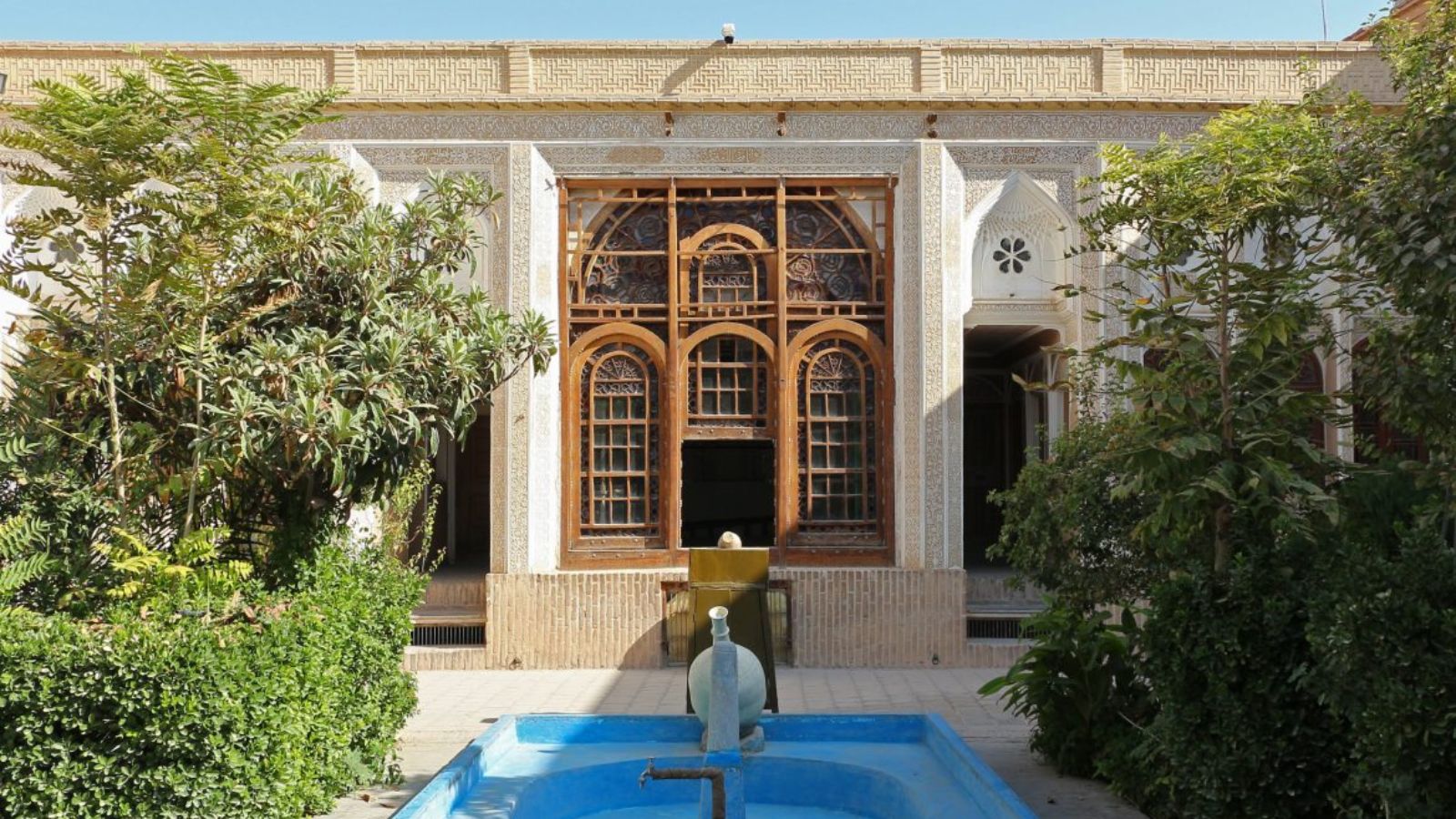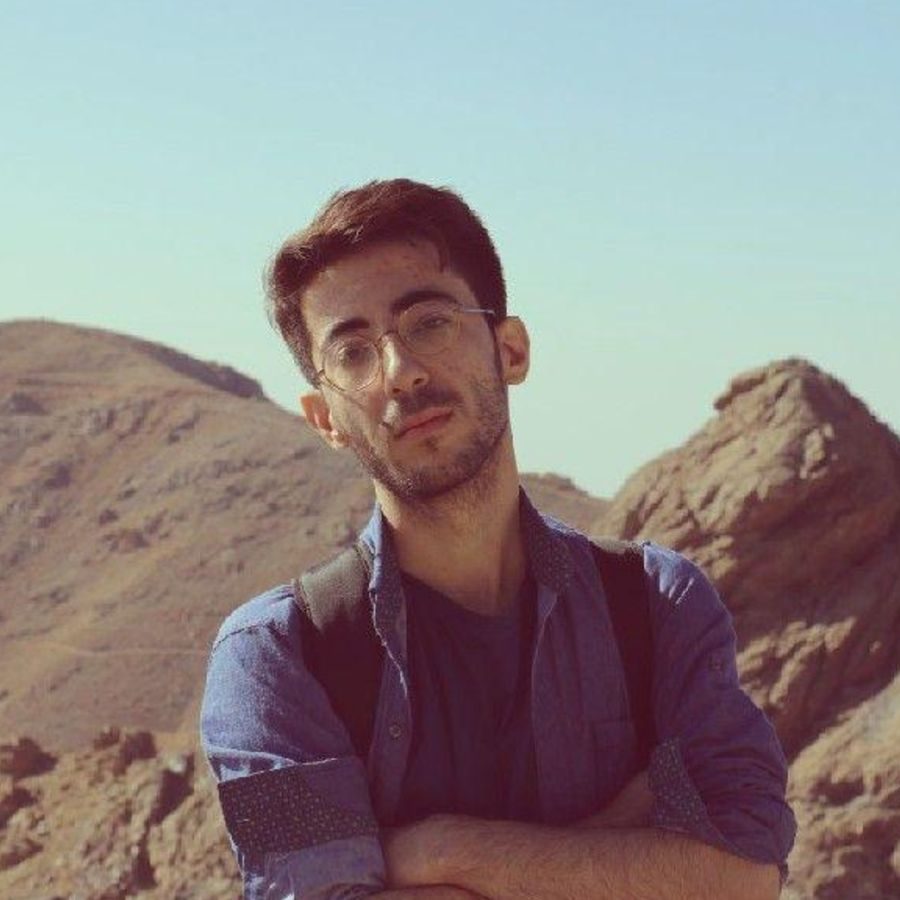Dorna Gasht Tour & Travel Company
We are proud of Iran and we love to show our country to people from all around the world.
Check out the destinations
At the end of the list, you will find a form. Fill that form for us and we will design your tour.

Code 1: Tehran - Golestan Palace
The Golestan Palace is the former royal Qajar complex in Iran’s capital city, Tehran. One of the oldest historic monuments in the city of Tehran, and of world heritage status, the Golestan Palace belongs to a group of royal buildings that were once enclosed within the mud-thatched walls of Tehran’s arg. It consists of gardens, royal buildings, and collections of Iranian crafts and European presents from the 18th and 19th centuries

Code 2: Tehran - Sa'dabad Complex
The Sa’dabad Palace Complex is a 300 hectare complex built by the Qajar and Pahlavi monarchs, located in Shemiran, Greater Tehran, Iran. Today, the official residence of the President of Iran is located adjacent to the complex. The complex includes more than 180 hectares of natural forest, streets, qanats, galleries, mansions/palaces and museums
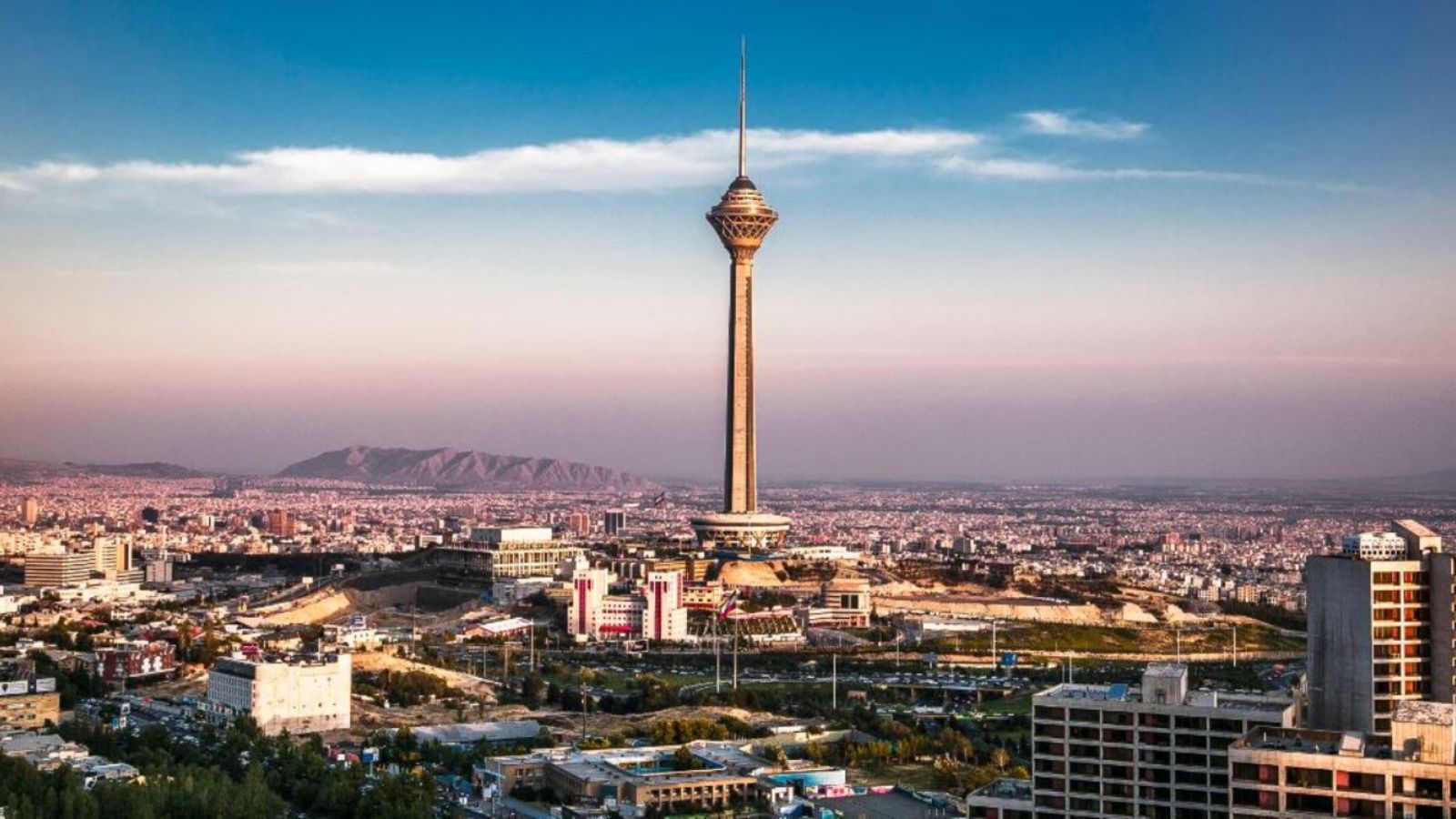
Code 3: Tehran - Milad Tower
Milad Tower, also known as the Tehran Tower, is a multi-purpose tower in Tehran, Iran. It is the sixth-tallest tower and the 24th-tallest freestanding structure in the world. It is located between Qarb Town and the district of Gisha, standing at 435 meters from the base to the tip of the antenna. The head consists of a large pod with 12 floors, the roof of which is at 315 meters. The tower is a part of the International Trade and Convention Center of Tehran, which also includes a five-star hotel, a convention center, a world trade center and an IT park.

Code 4: Tehran - Niavaran Palace
The Niavaran Palace Complex is a historical palace complex situated in Shemiran, Iran. It consists of several palace buildings and monuments dating back to the Qajar and Pahlavi eras.
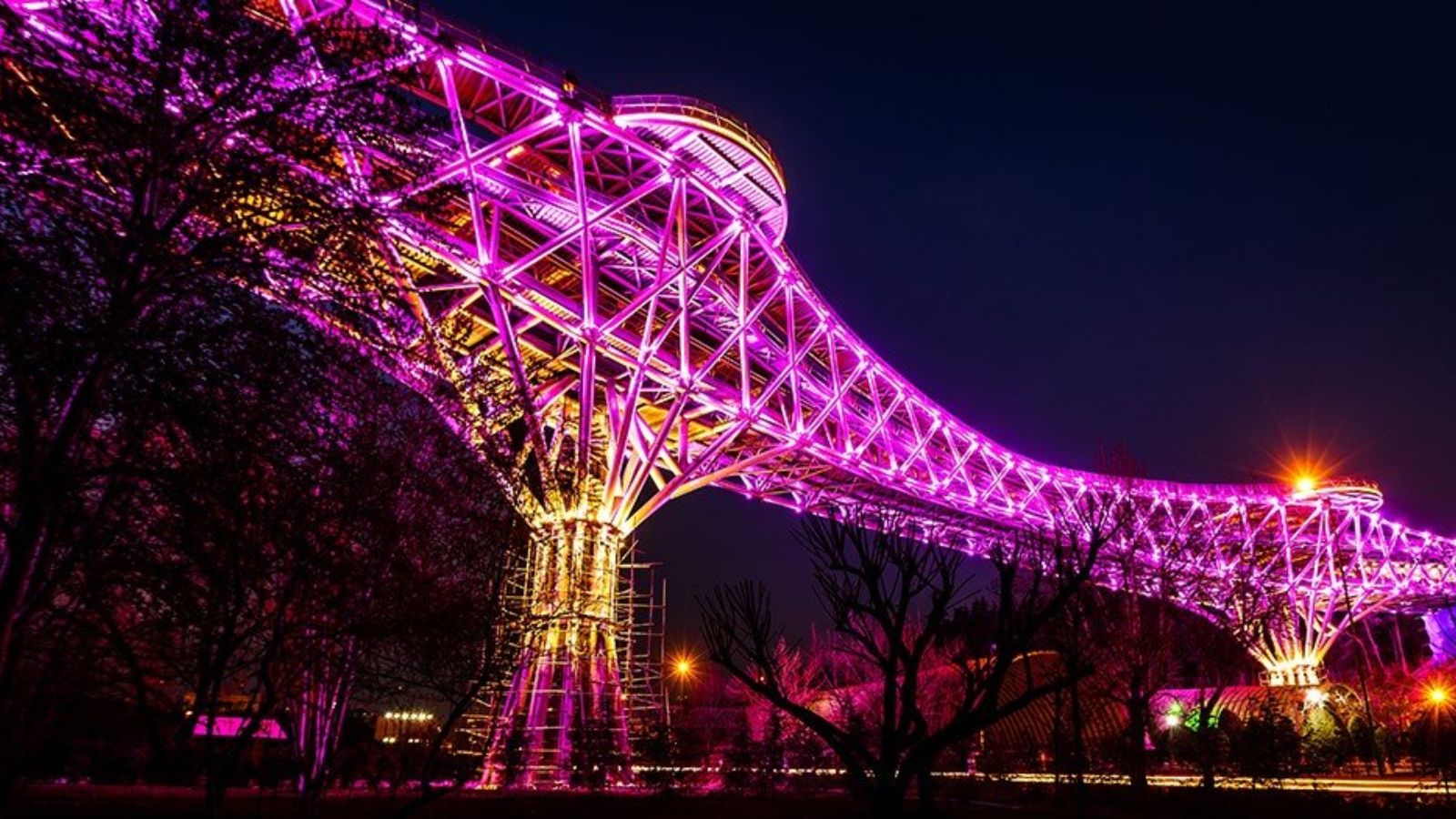
Code 5: Tehran - Tabiat Bridge
The Tabi’at Bridge is the largest pedestrian overpass in Tehran, Iran. The 270-metre bridge connects two public parks — Taleghani Park and Abo-Atash Park — by spanning Modarres Expressway, one of the main highways in northern Tehran. The word tabiat means “nature” in the Persian language. The bridge was designed by Diba Tensile Architecture. It has won several awards, including the Popular Choice Prize for Highways & Bridges from the Architizer A+ Awards, a global architectural competition based in New York. The bridge also won the 2016 Aga Khan Award for Architecture for its exemplary approach to an infrastructure project, “a breath of fresh air” according to the award jury.
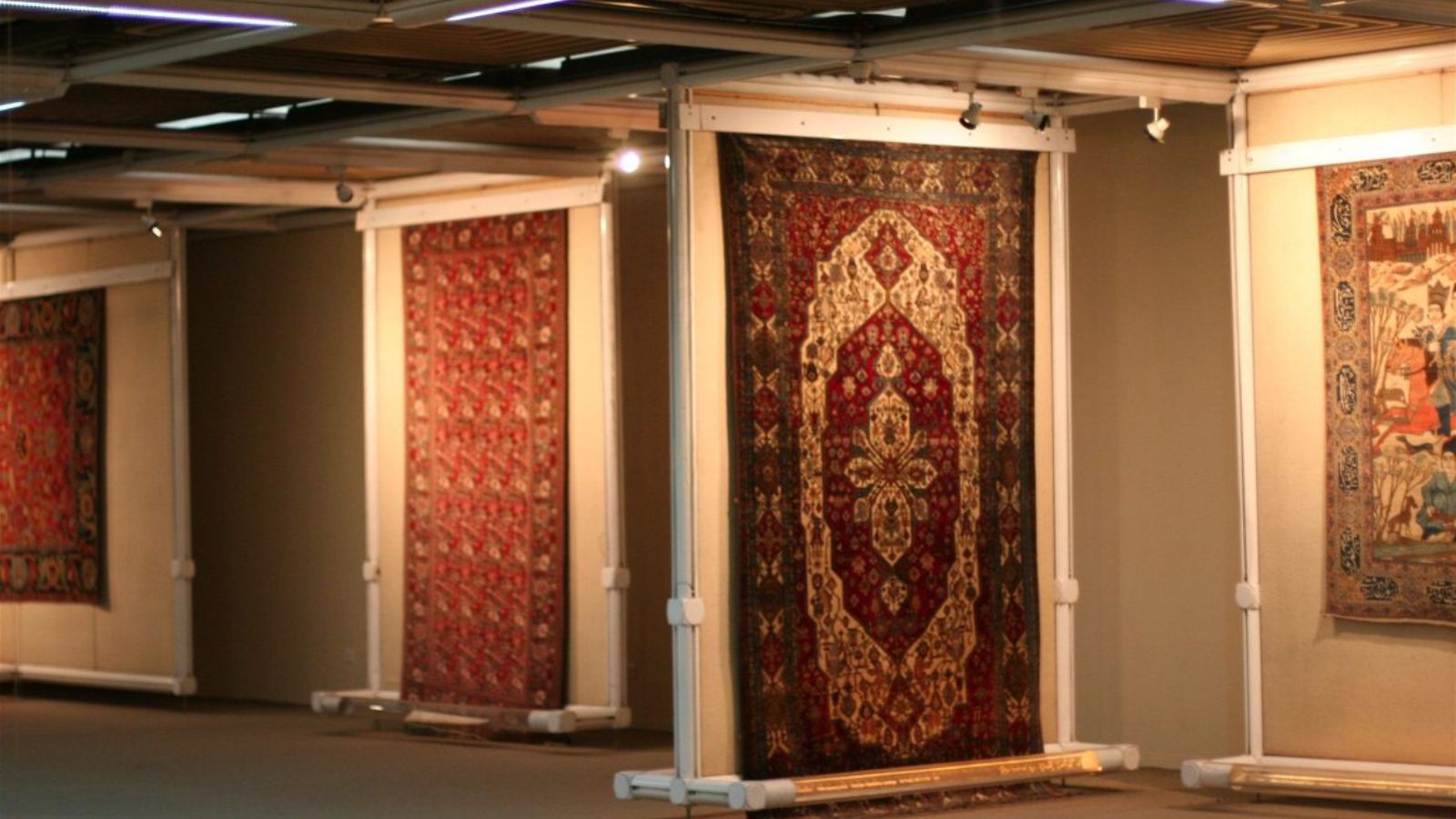
Code 6: Tehran - Carpet Museum of Iran
Located in Tehran, beside Laleh Park, and founded in 1976, the Carpet Museum of Iran exhibits a variety of Persian carpets from all over Iran, dating from the 16th century to the present. The museum’s exhibition hall occupies 3,400 square meters and its library contains 33,000,000 books. The museum was designed by architect Abdol-Aziz Mirza Farmanfarmaian. The perforated structure around the museum’s exterior is designed both to resemble a carpet loom, and to cast shade on the exterior walls, reducing the impact of the hot summer sun on the interior temperature.
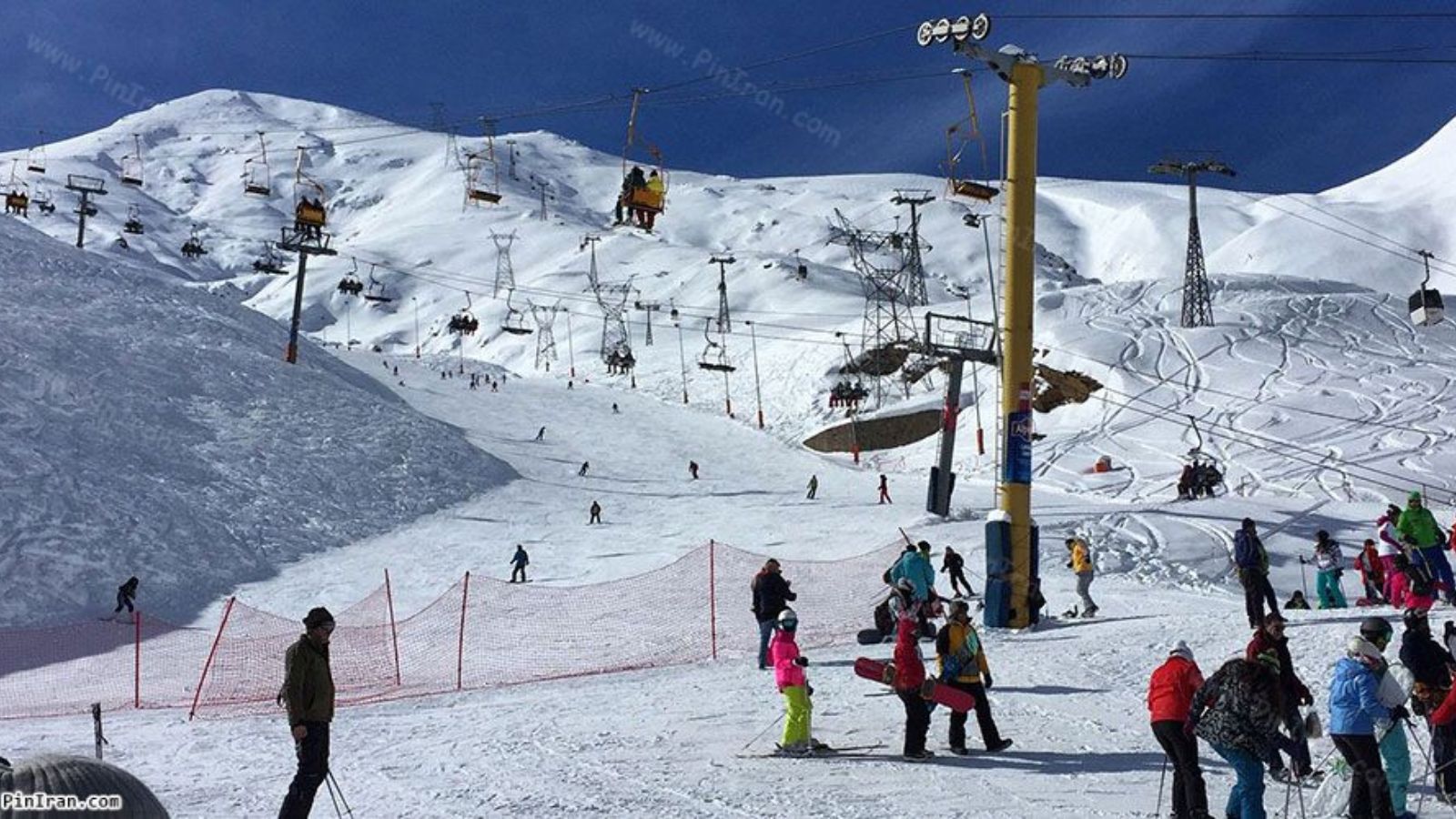
Code 7: Tehran - Tochal Complex
Tochal Complex consists of many recreational and sports facilities located in Velenjak, north of Tehran

Code 8: Tehran - Tehran Museum of Contemporary Art
Tehran Museum of Contemporary Art, also known as TMoCA, is among the largest art museums in Tehran and Iran. It has collections of more than 3,000 items that include 19th and 20th century’s world-class European and American paintings, prints, drawings and sculptures. TMoCA also has one of the greatest collections of Iranian modern and contemporary art. The museum was inaugurated by Empress Farah Pahlavi in 1977, just two years before the 1979 Revolution. TMoCA is considered to have the most valuable collections of modern Western masterpieces outside Europe and North America

Code 9: Tehran - Tajrish Bazaar
Photogenic Local Bazar in Tajrish
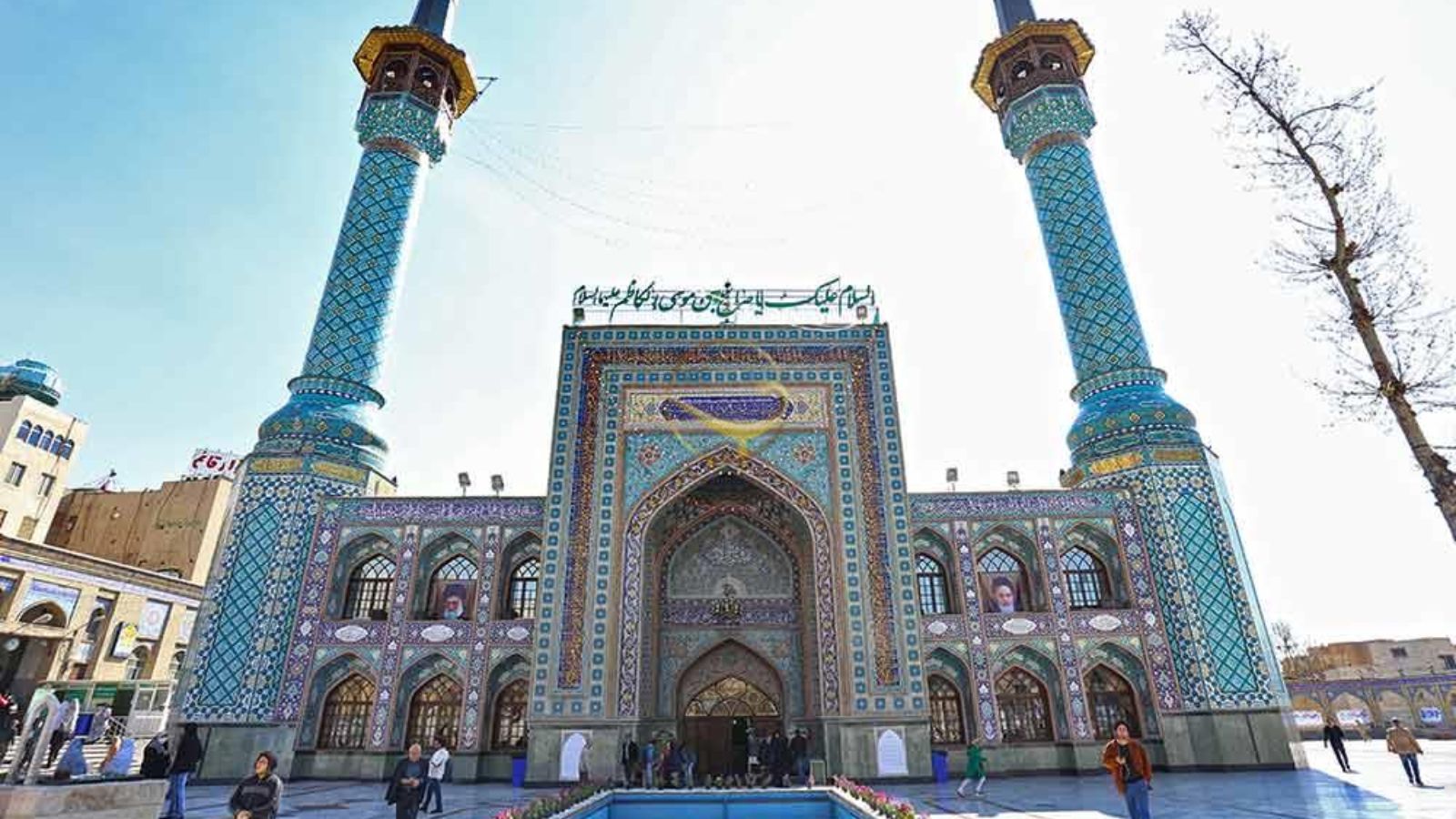
Code 10: Tehran - Imamzadeh Saleh, Shemiran
Imamzadeh Saleh is one of many imamzadeh mosques in Iran. The mosque is located at Tajrish Square in Tehran’s northern Shemiran district. The mosque entombs the remains of Saleh, a son of the Twelver Shia Imam, Musa al-Kadhim, and is one of the most popular Shia shrines in northern Tehran.
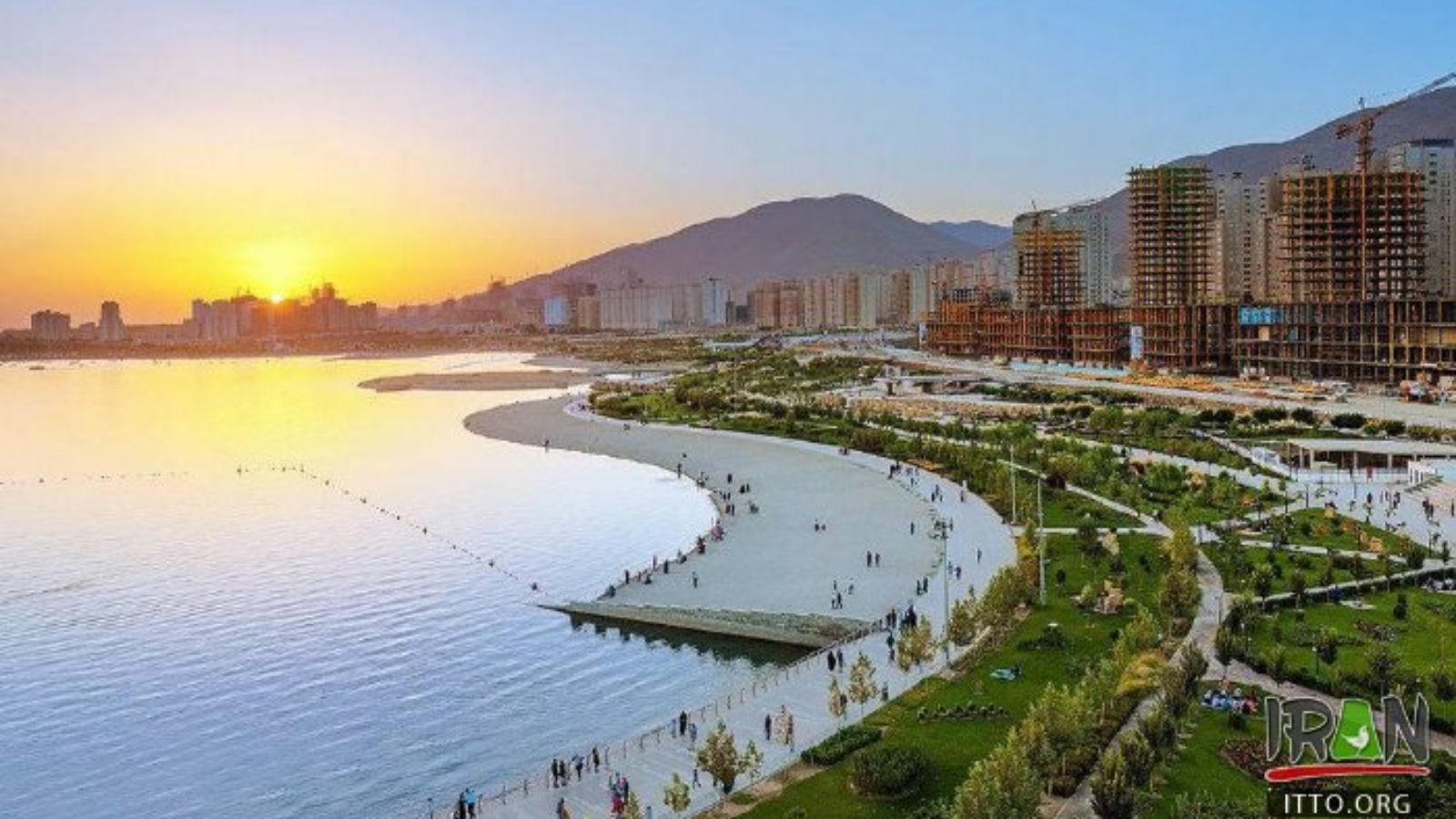
Code 11: Tehran -Chitgar Lake
Chitgar Lake is an artificial and recreational lake located to the north of Chitgar Park in northwestern Tehran, Iran. Also known as the Lake of the Martyrs of the Persian Gulf, the complex has a total area of around 250 hectares; 130 hectares across the lake and 120 hectares on its coastal zone and resorts. About 80% of the body of water comes from Kan Creek, and the remaining 20% comes from central areas and surface runoffs of the district
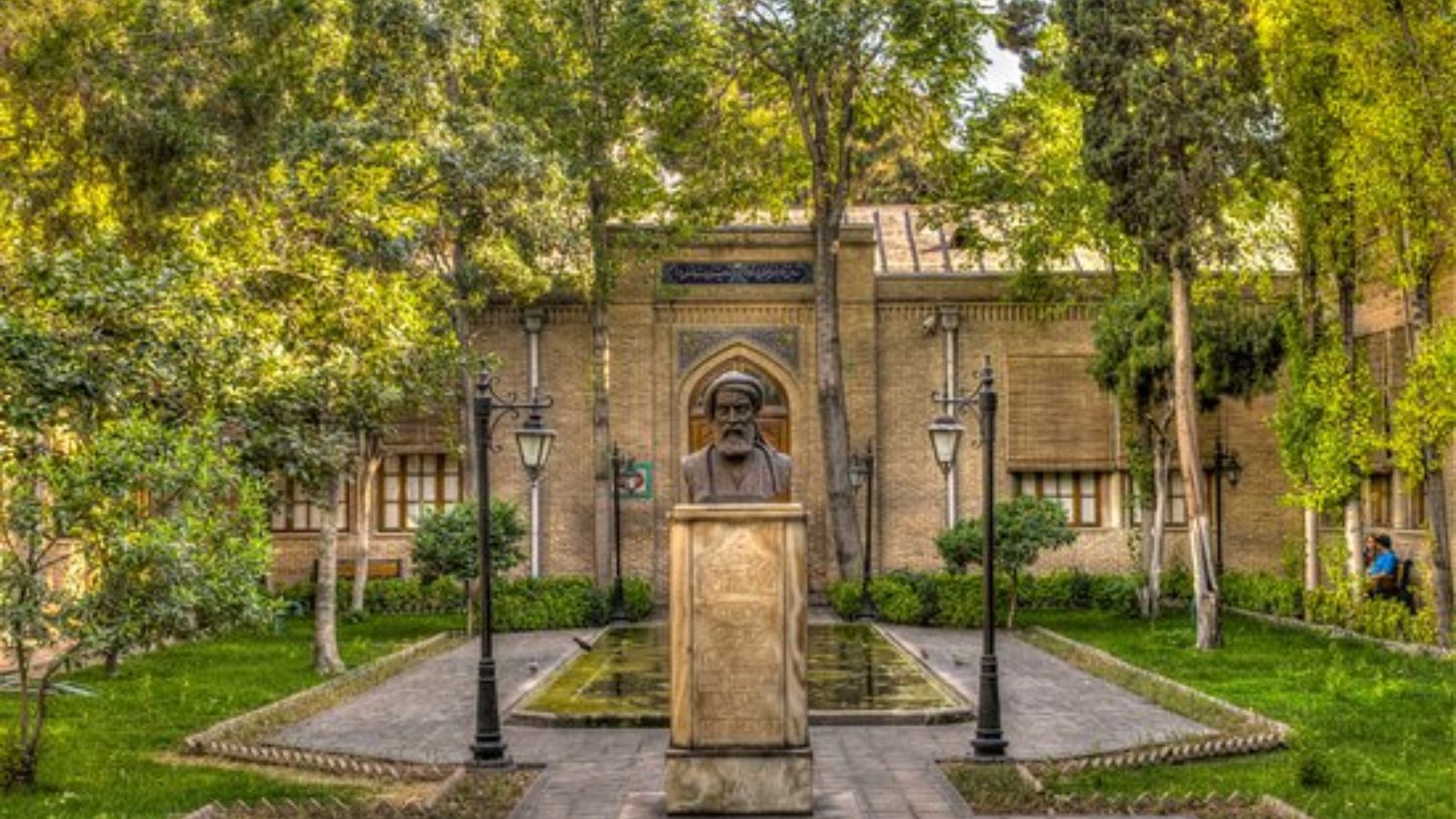
Code 12: Tehran - Negarestan Garden
Restored 19th-century palace gardens
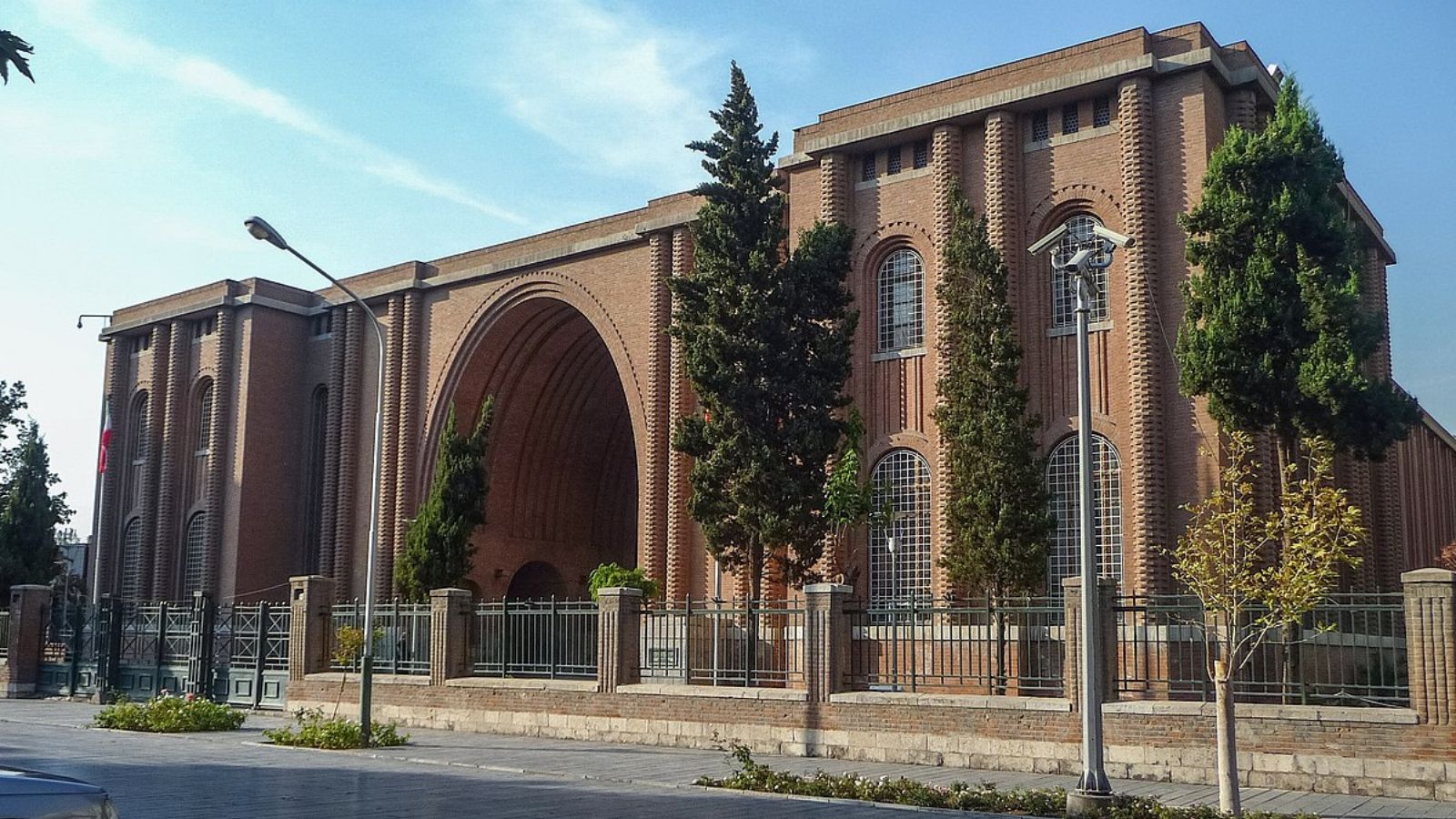
Code 13: Tehran - Museum of Ancient Iran
The Museum of Ancient Iran is the first Iranian museum and is located at the western part of Mashhq Square in Tehran. A French architect, named André Godard, started the construction of the museum on May 11, 1934 by the order of Reza Shah. The museum building was completed in 1937 and then was opened for first public visits. The land allocated to this museum is 5,500 square meters, of which 2,744 square meters is used for the foundation of the museum.
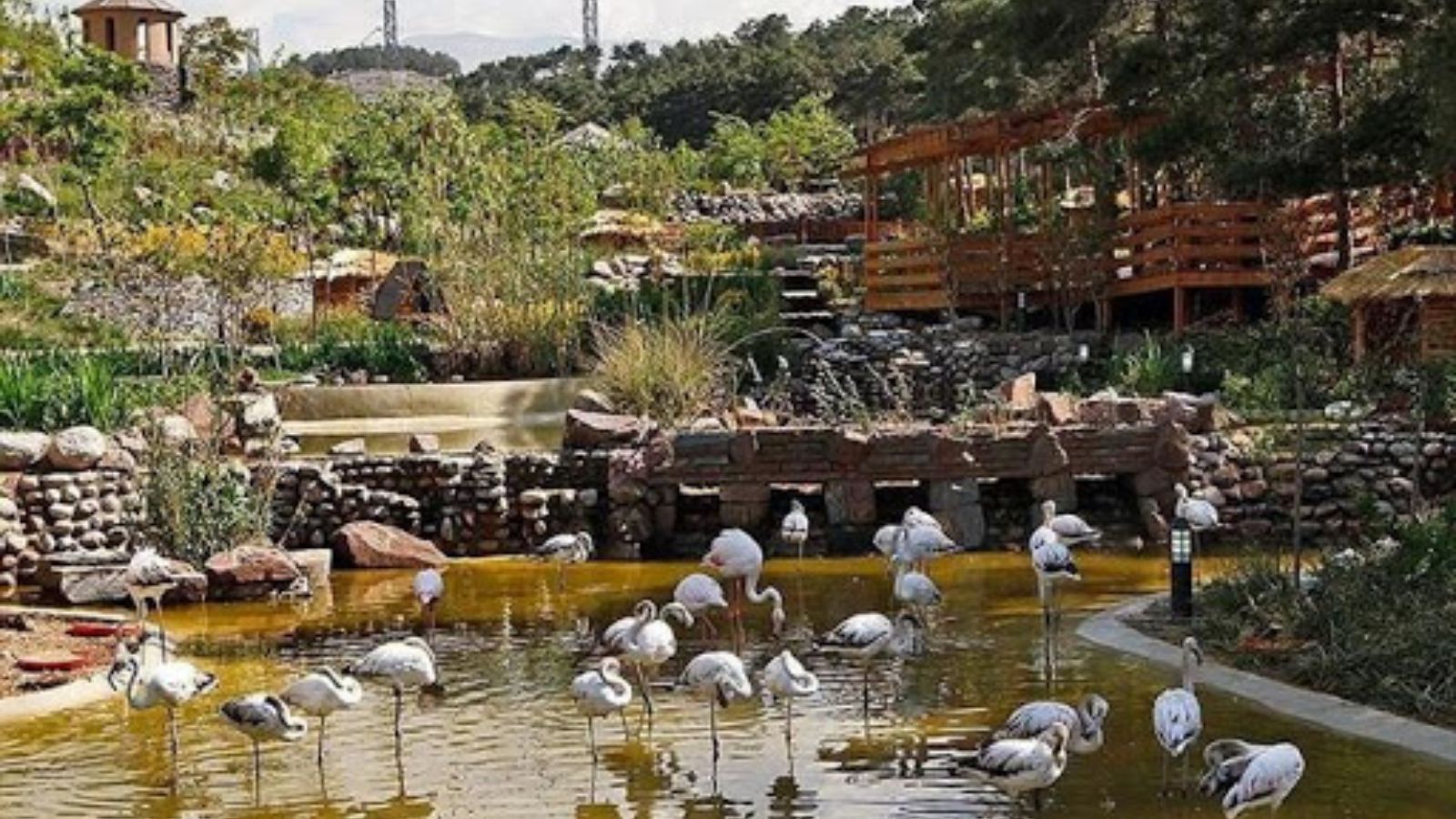
Code 14: Tehran - Tehran Birds Garden
Garden, parrot, and park

Code 15: Tehran - Azadi Tower Museum
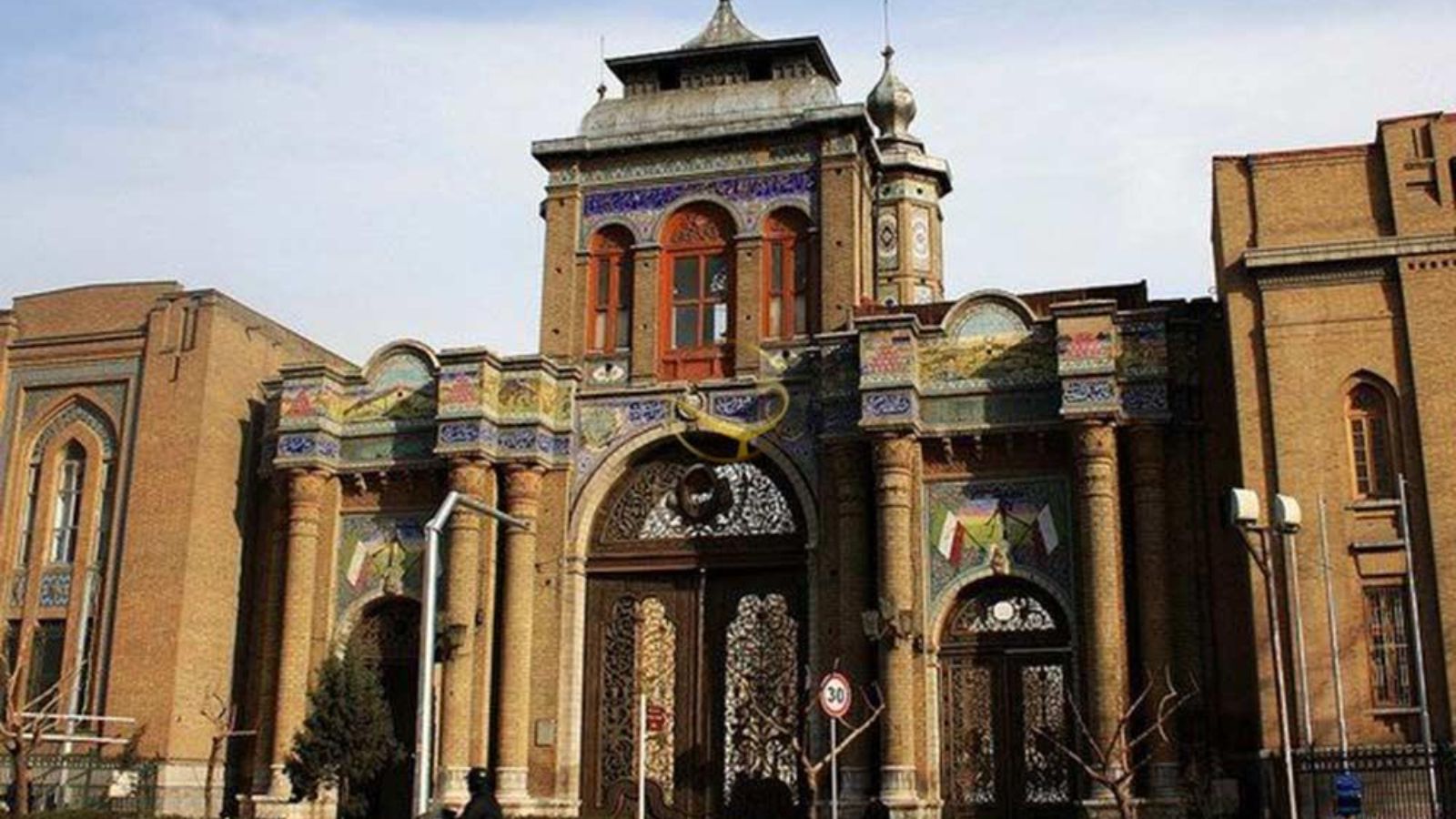
Code 16: Tehran -National Garden
The National Garden is a historical and governmental compound in Tehran, Iran. Formerly referred to as the Parade Square, it used to be a military shooting range during the Qajar period. It was then turned into a public park for a short period, and eventually important governmental offices and museums were built around it. Building number 9 of the Ministry of Foreign Affairs, the University of Art, Malek National Museum, Post and Communication Museum, and the National Museum are situated in the compound.
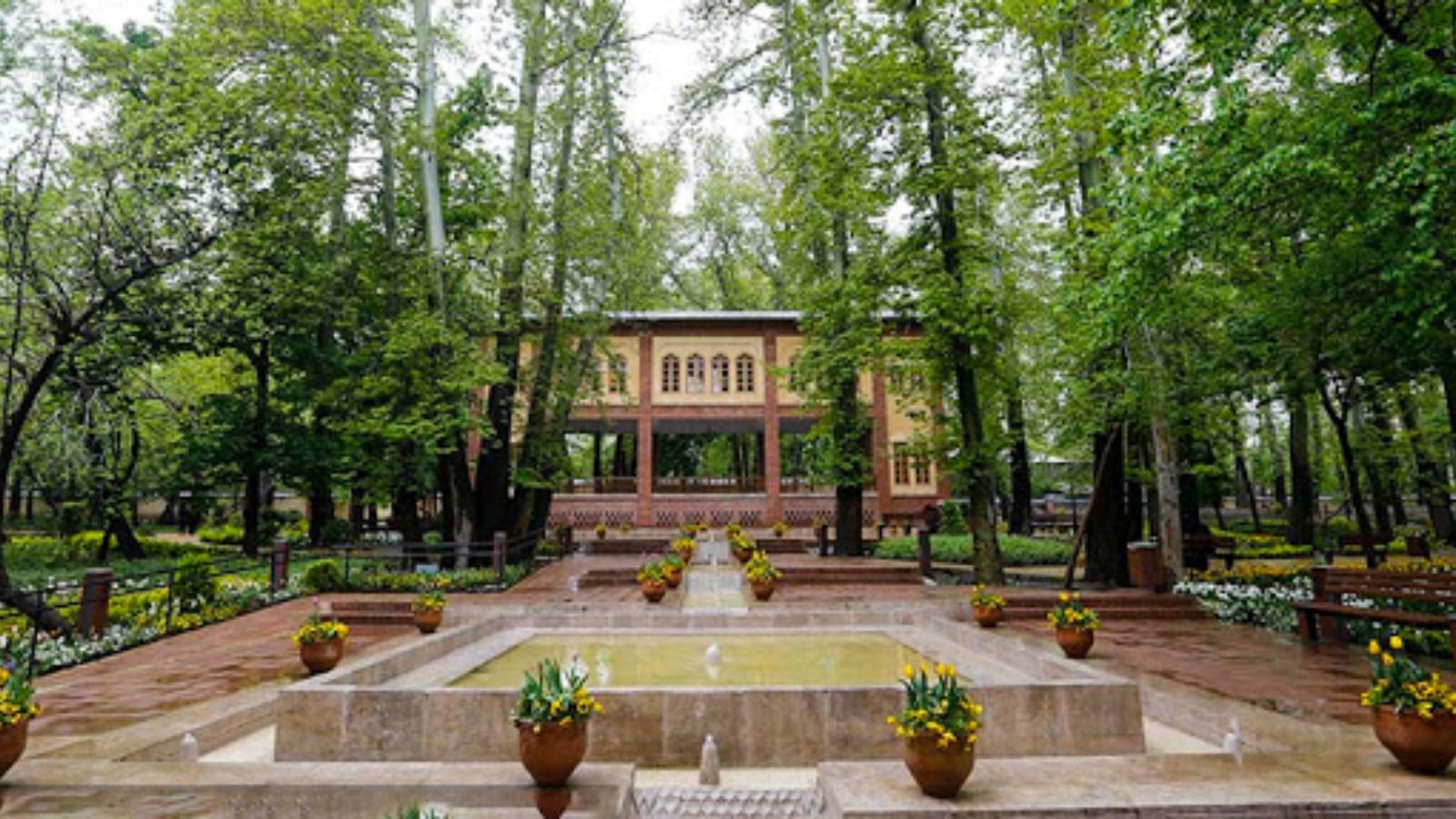
Code 17: Tehran -Persian Garden
Garden, park, and architecture
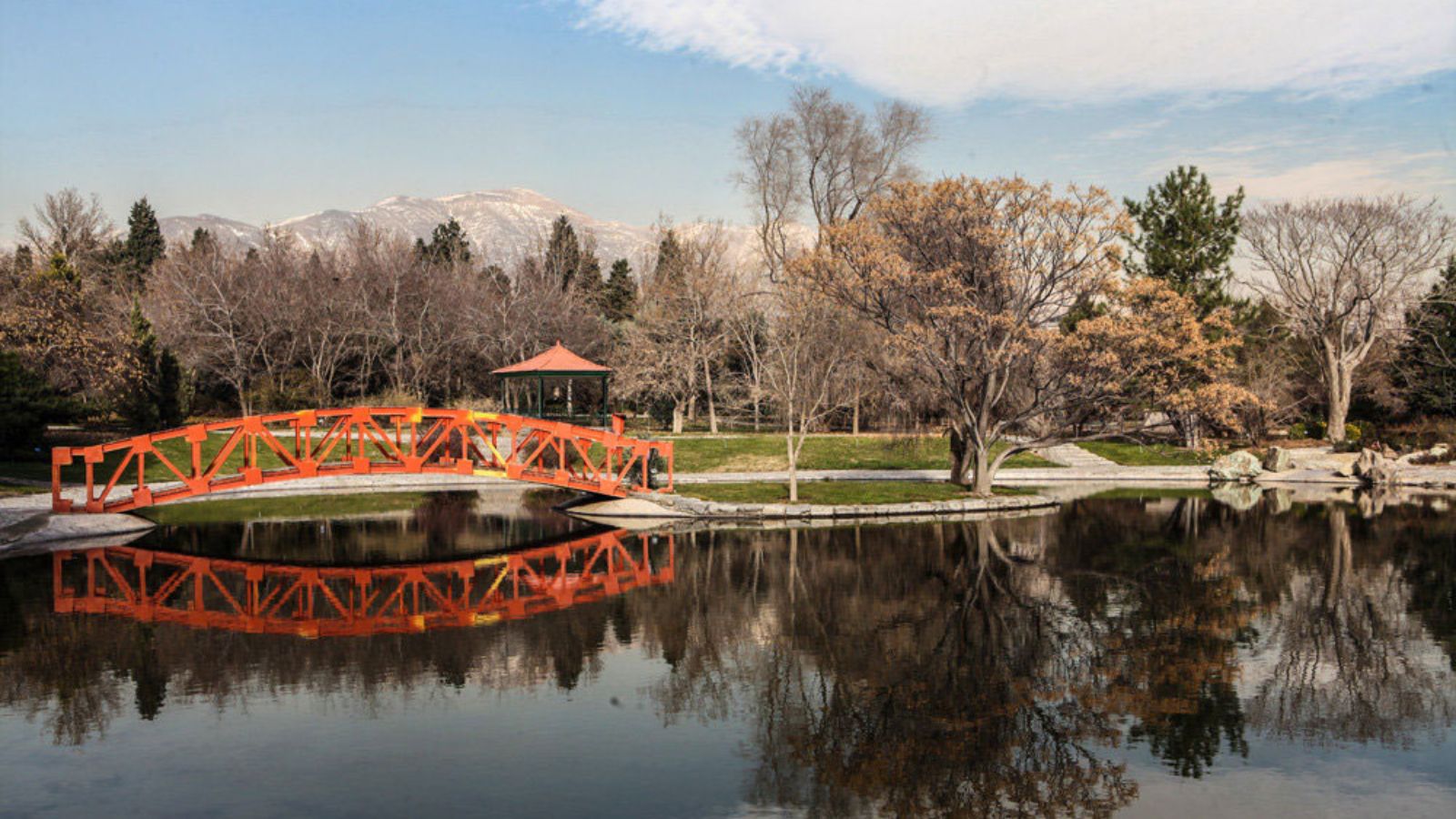
Code 18: Tehran -National Botanical Garden of Iran
National Botanical Garden of Iran is a Botanical Garden in Tehran, Iran. Its area is about 150 hectares and is planned to be the main center for horticulture and plant taxonomy in Iran. A herbarium of Iranian plants is gradually being built up and now consists of some 160,000 numbers. Also there are gardens of non-Iranian plants such as Himalayan, American, Japanese, African, and Australian. The garden also contains an arboretum, Six lakes, hills, rock garden, a waterfall, a wetland, desert plants areas, a salt lake and a wadi, a river about 1 km long, systematic area, fruit garden, picnic area with some pavilions and other facilities. The botanical and horticultural library has more than 11,000 volumes.
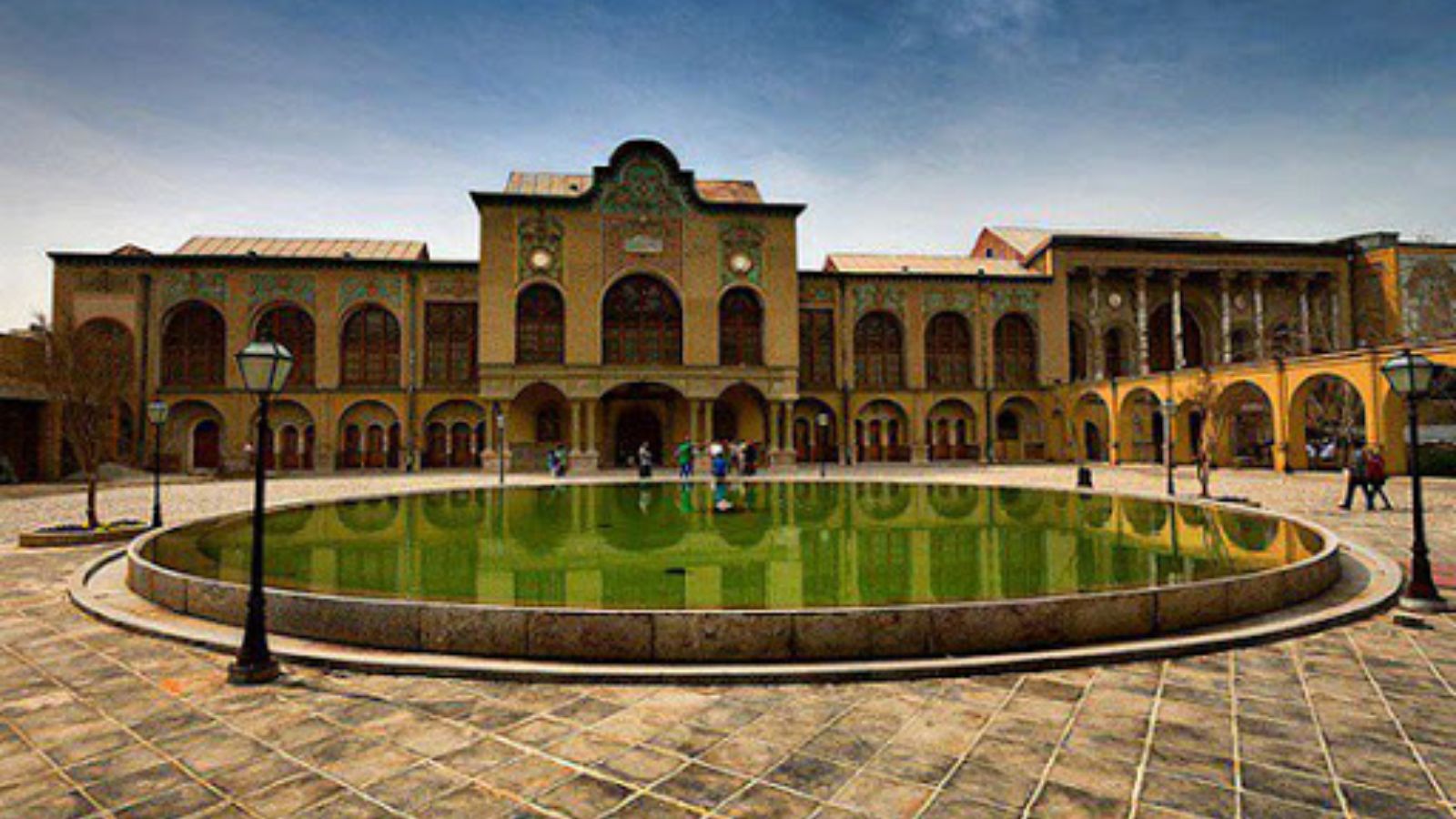
Code 19: Masoudieh Palace
History, architecture, and historic site
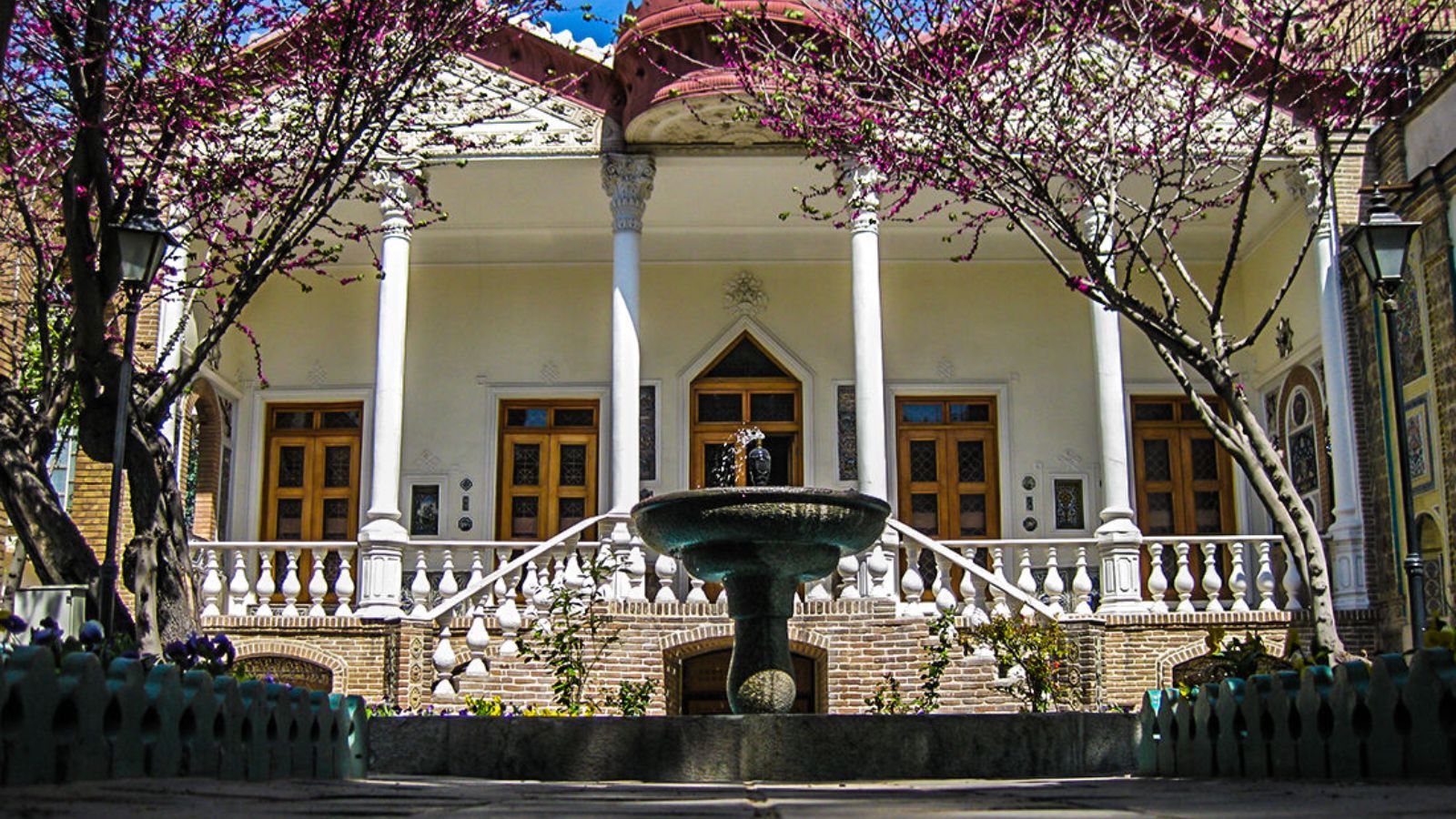
Code 20: Moghadam Museum
Islamic art & objects in an ornate home
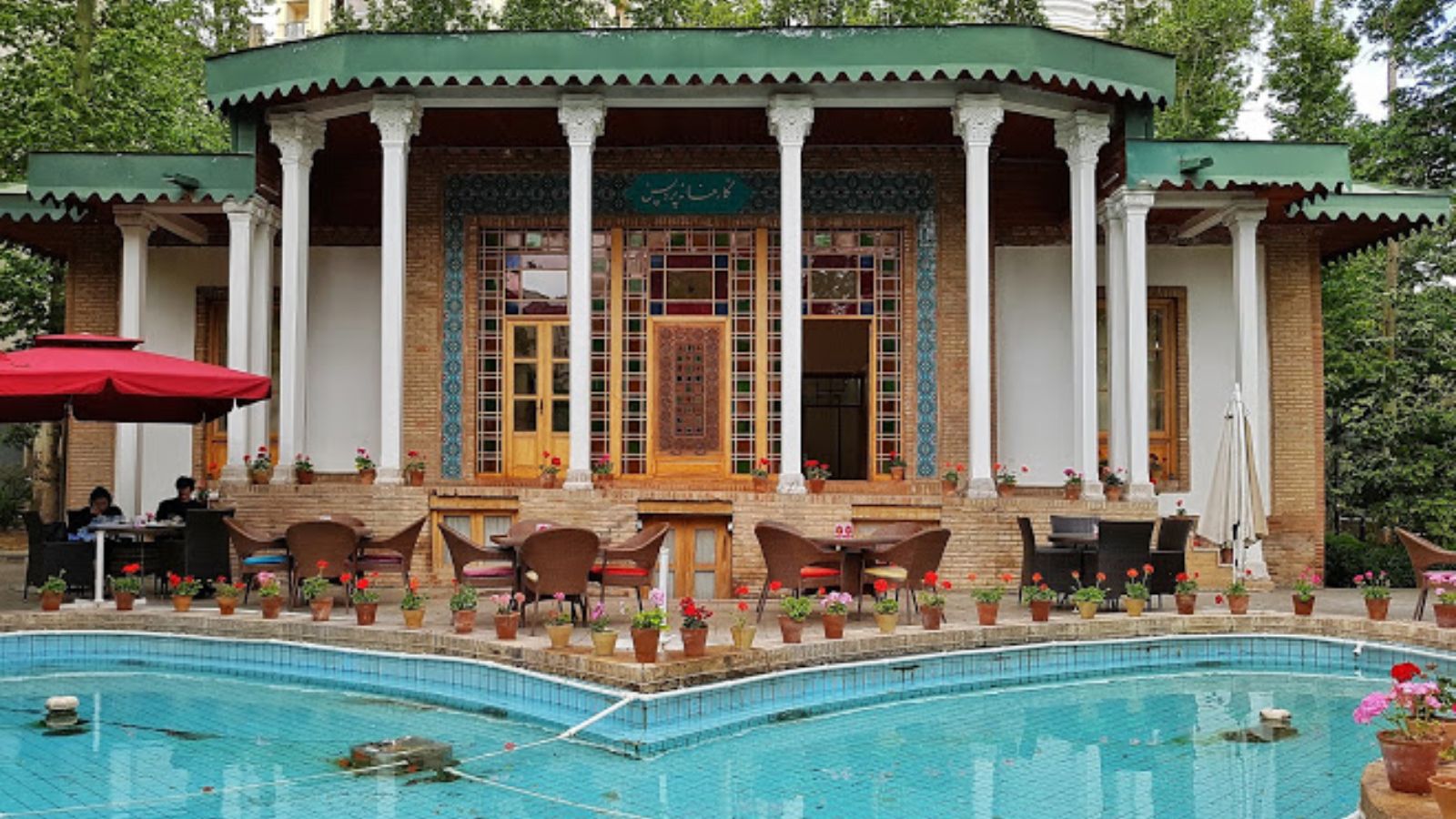
Code 21: Tehran - Iranian Art Museum Garden
The Iranian Art Museum Garden is an art museum located in the Elahieh district of Tehran. The gardens have an area of less than one hectare. The architecture of the various models at the Museum Garden date back to early Pahlavi dynasty.
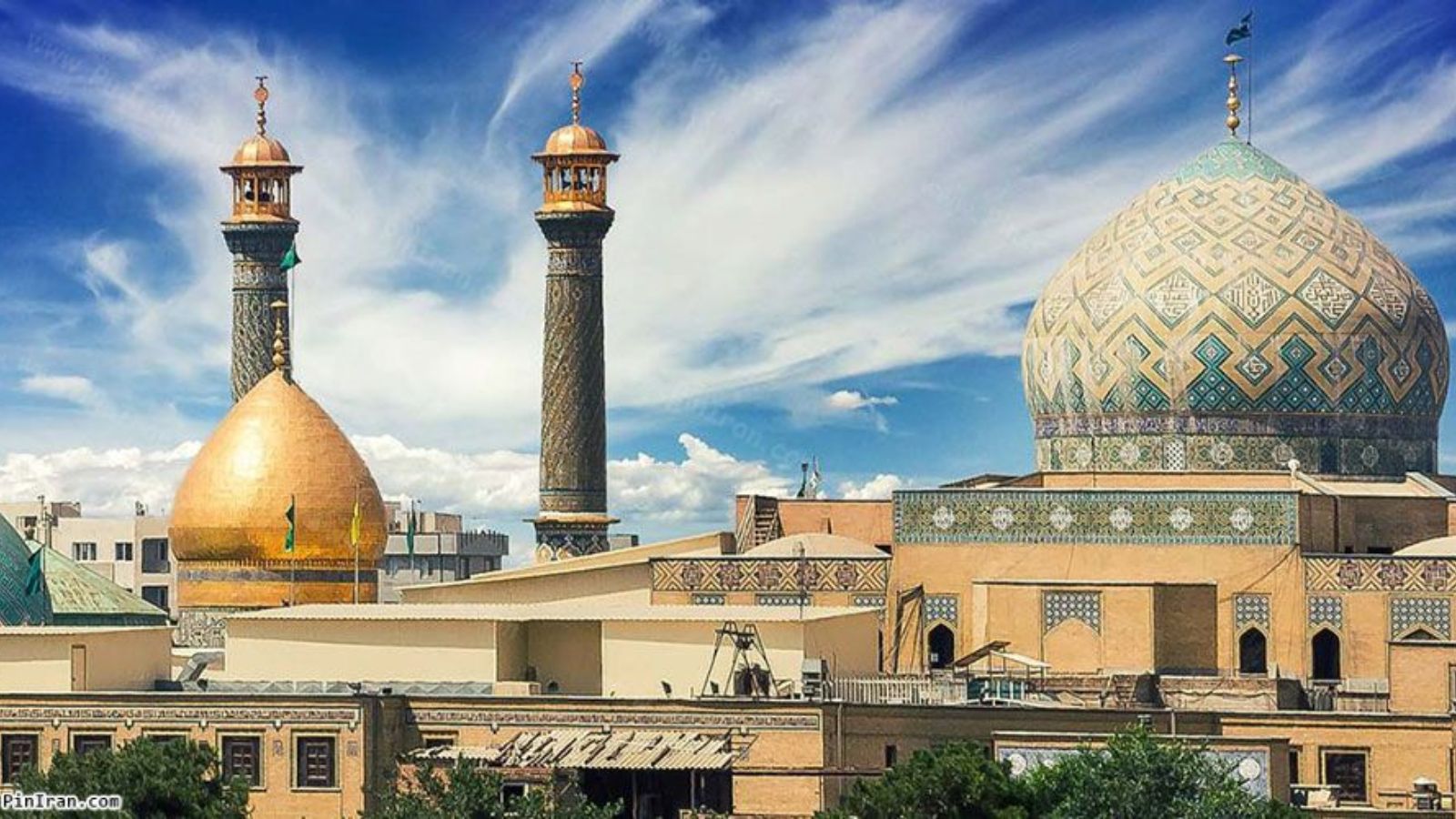
Code 22: Tehran - Shah Abdol-Azim shrine
The Shāh Abdol-Azīm Shrine, also known as Shabdolazim, located in Rey, Iran, contains the tomb of ‘Abdul ‘Adhīm ibn ‘Abdillāh al-Hasanī. Shah Abdol Azim was a fifth generation descendant of Hasan ibn ‘Alī and a companion of Muhammad al-Taqī. He was entombed here after his death in the 9th century. Adjacent to the shrine, within the complex, include the mausolea of Imamzadeh Tahir and Imamzadeh Hamzeh.
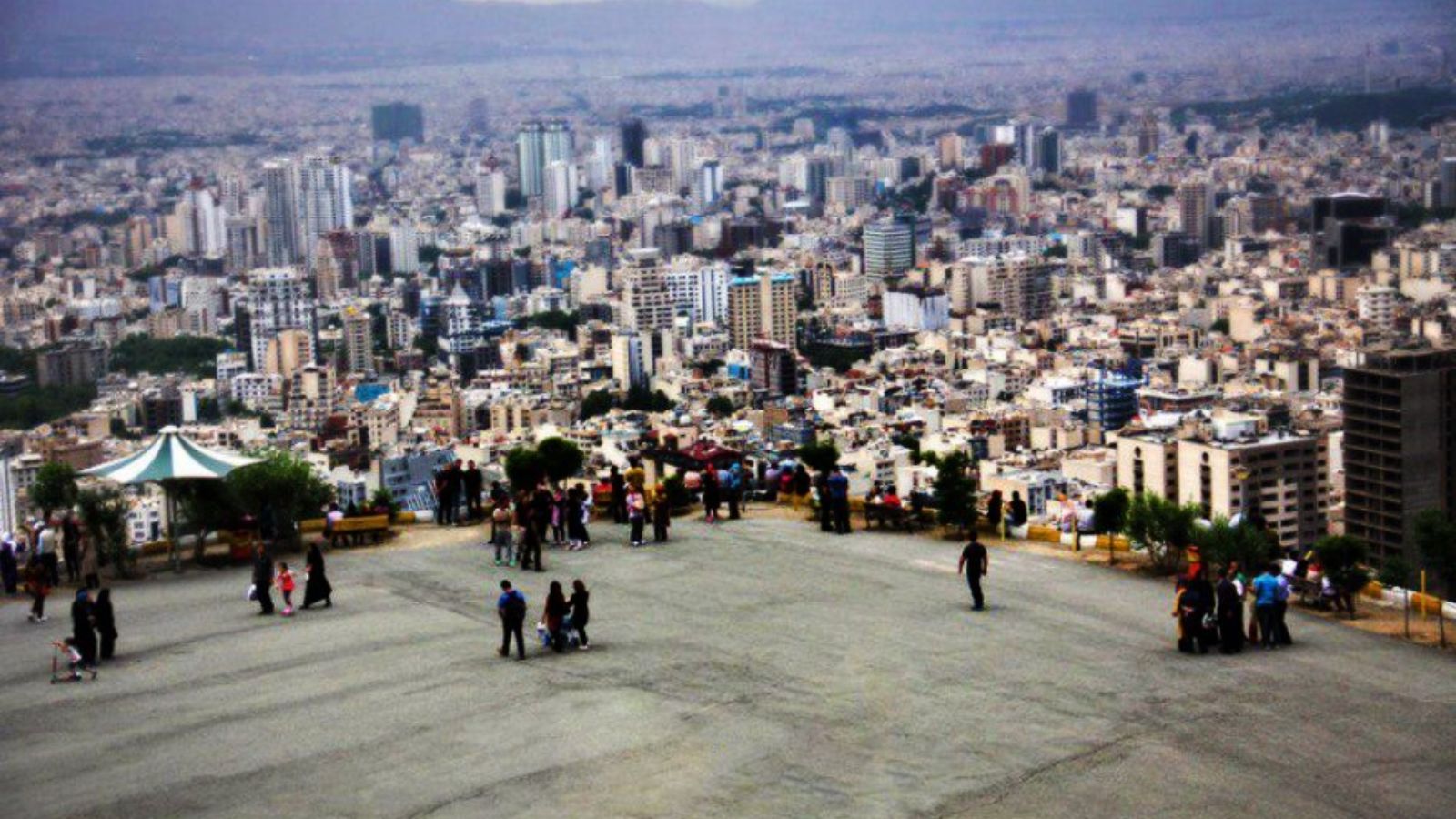
Code 23: Tehran - Bame Tehran
Your content goes here. Edit or remove this text inline or in the module Content settings. You can also style every aspect of this content in the module Design settings and even apply custom CSS to this text in the module Advanced settings.

Code 24: Tehran - Museum of Time
Code 25: Tehran - Cheshmeh Ali
Cheshmeh-Ali is an ancient recreational place, located in the south of Tehran and north of Rey in the country of Iran. The spring is spot in the neighborhood of Ebn-e Babooyeh, Tughrul Tower, and below the Rashkan castle and next to Rey Castle and Fath Ali shah inscription. In the past, carpet salers and people used to wash their carpets there, with their idea that the property of this spring water is good and clean for carpets and make them full lighter color by its mineral water.
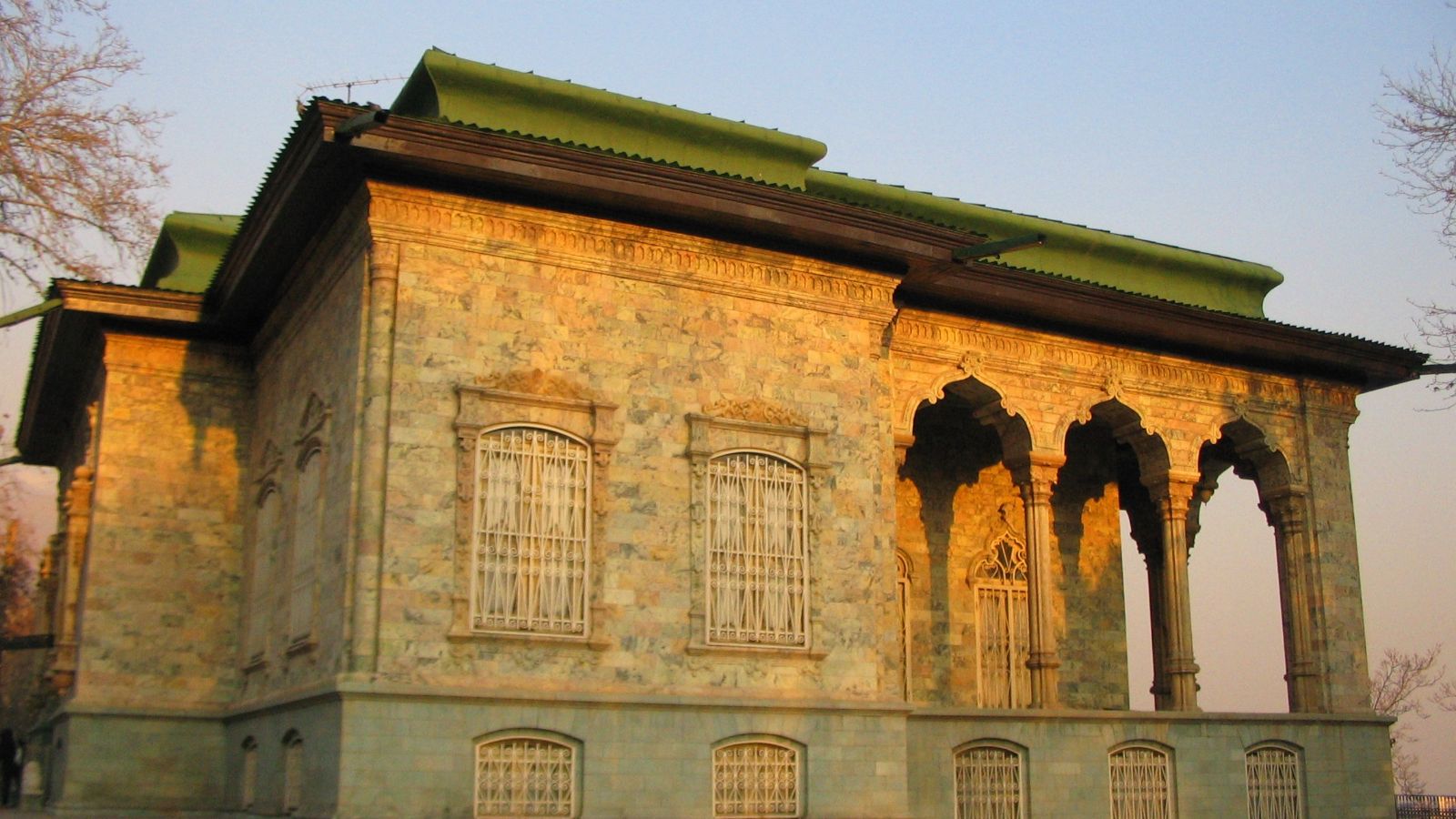
Code 26: Tehran - Green Palace
Palace, museum, and architecture, near Saad Abad Historical complex
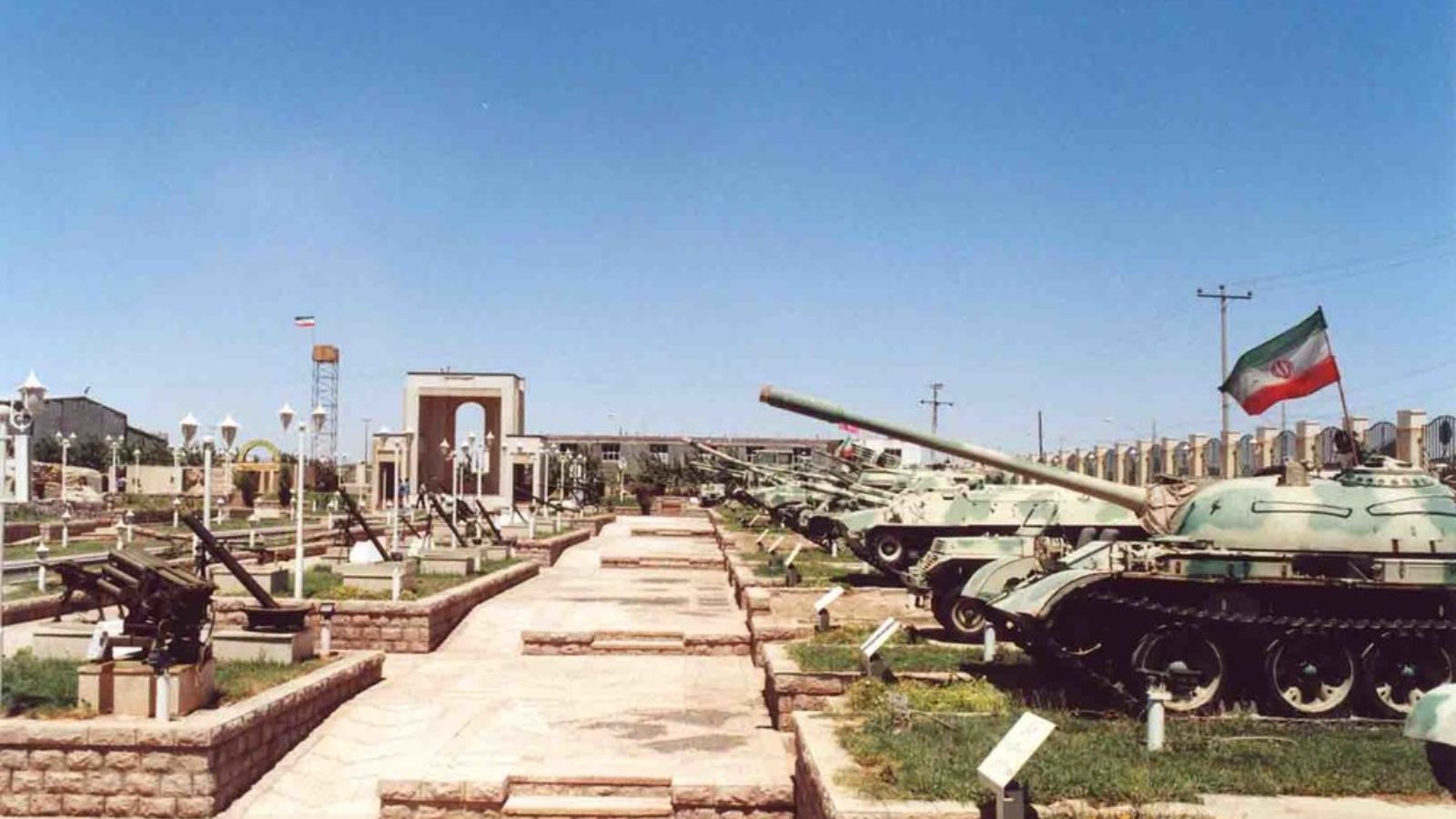
Code 27: Tehran - Holy Defense Museum
The Islamic Revolution and Holy Defense Museum, located in Tehran on a landscaped site of 21 hectares, is one of the largest museums of Iran. It is dedicated to the Iran–Iraq War, the conflict known in Iran as “imposed war” or mainly “Holy Defense”. The museum consists of different parts such as Tomb of the Unknown Soldiers, flag tower, open area and lake, Parking, conference halls, Khorramshahr Mosque, Library and Panorama museum. The main building of museum consists of 8 halls; each displays a specific concept of war through many monitors, video projectors, hologram showcases and some other modern technologies.
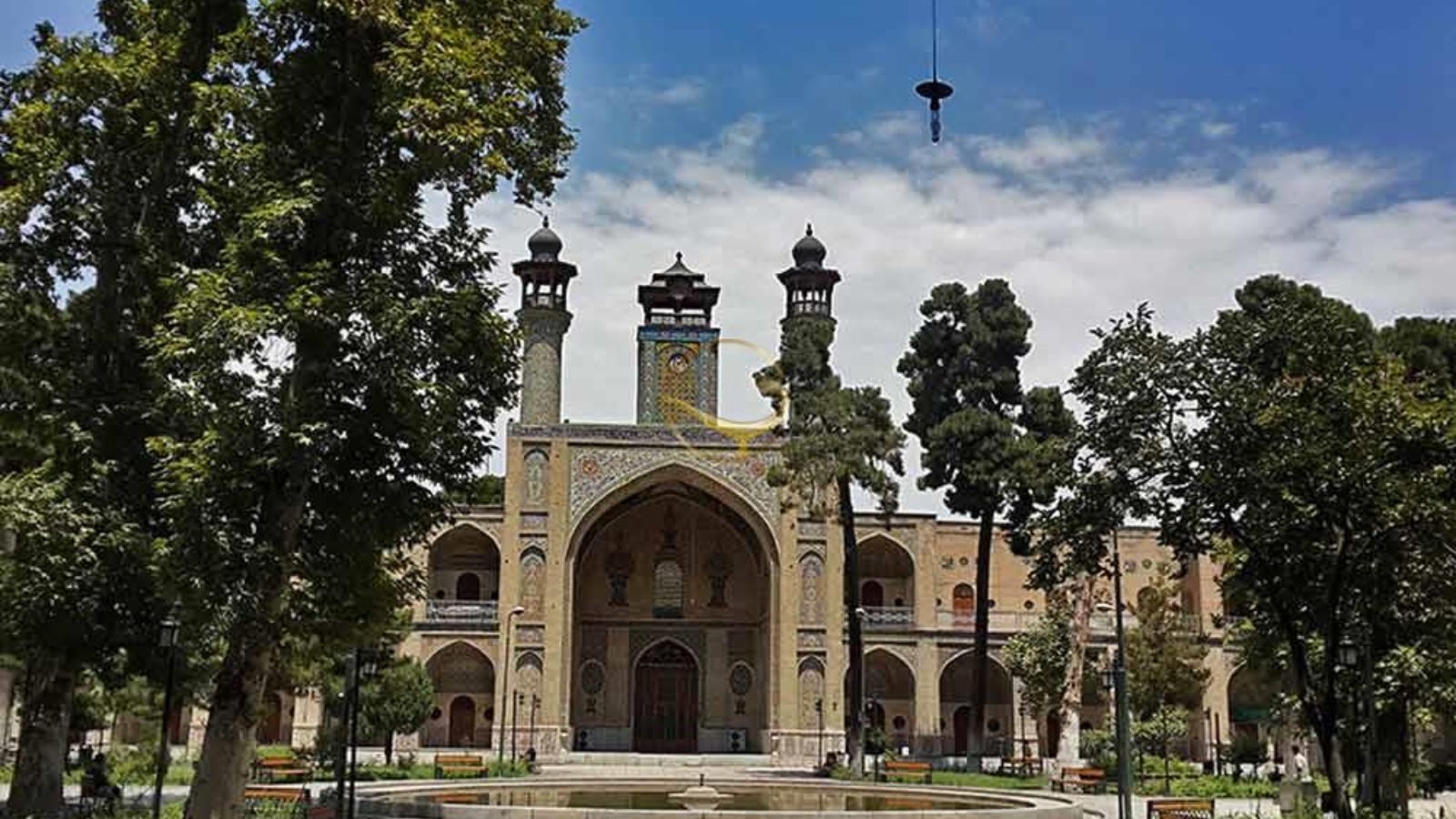
Code 28: Tehran - Sepahsalar Mosque
The Sepahsālār Mosque is a famous historic mosque in Tehran, Iran. The construction project of the mosque was started in 1879 upon the order of Mirza Hosein Sepahsalar, the Premiers of Iran during Naser al-Din Shah Qajar, and the first phase of construction was finished after five years since it was started. The mosque was renamed the Shahid Motahhari, after the 1979 Iranian Revolution, but it is commonly known as its initial name of Sepahsalar Mosque. The Sepahsalar Mosque is one of the largest Mosque in Tehran. During the late Qajar as well as Pahlavi era, Sepahsalar mosque was distinctive landmark of Tehran with its eight minarets which was unique in Persian design of mosques. The mosque is located southeast of Baharestan square, next to the former National Consultative Majlis of Iran.
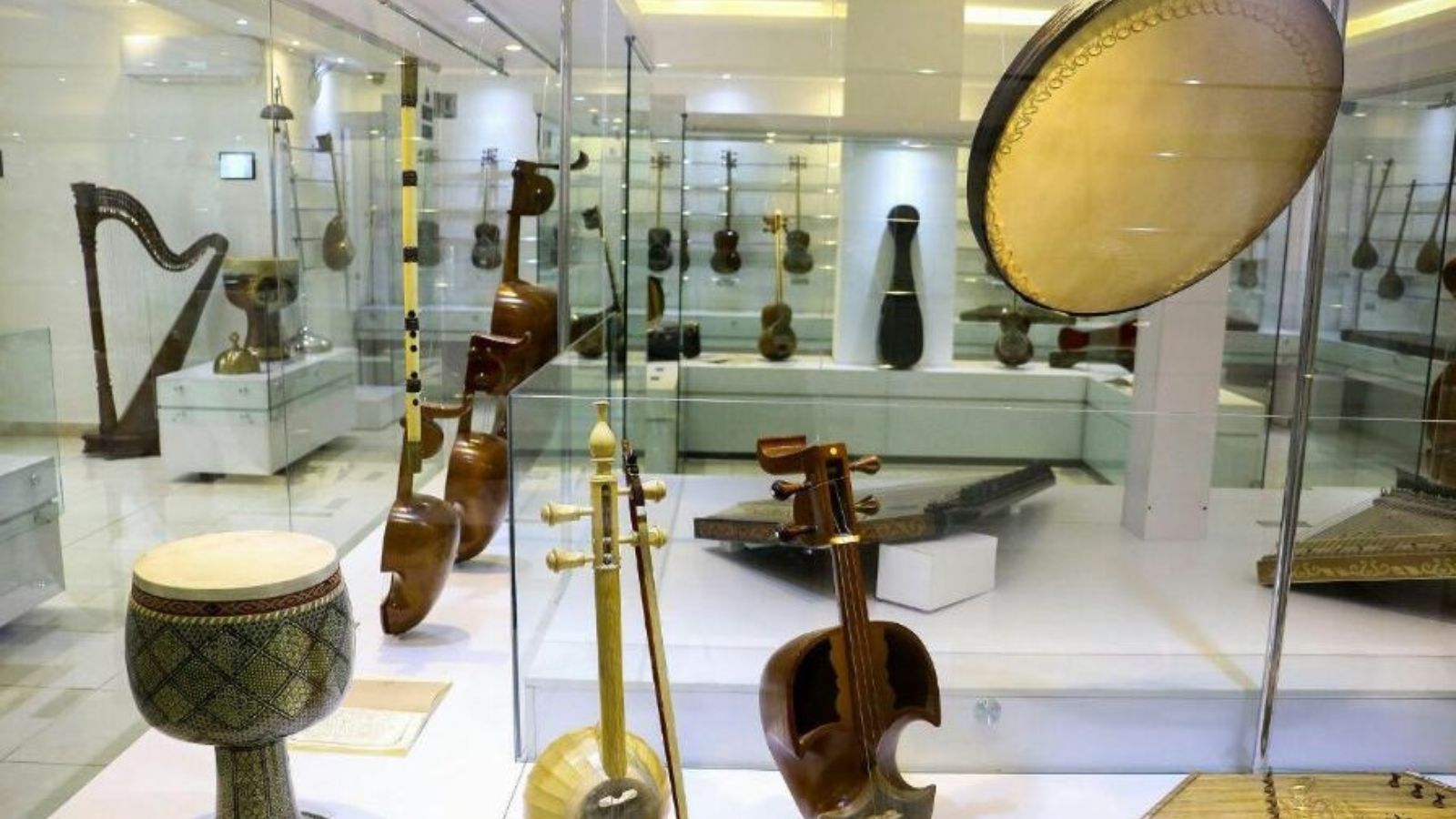
Code 29: Tehran - Museum of Music
Your content goes here. Edit or remove this text inline or in the module Content settings. You can also style every aspect of this content in the module Design settings and even apply custom CSS to this text in the module Advanced settings.
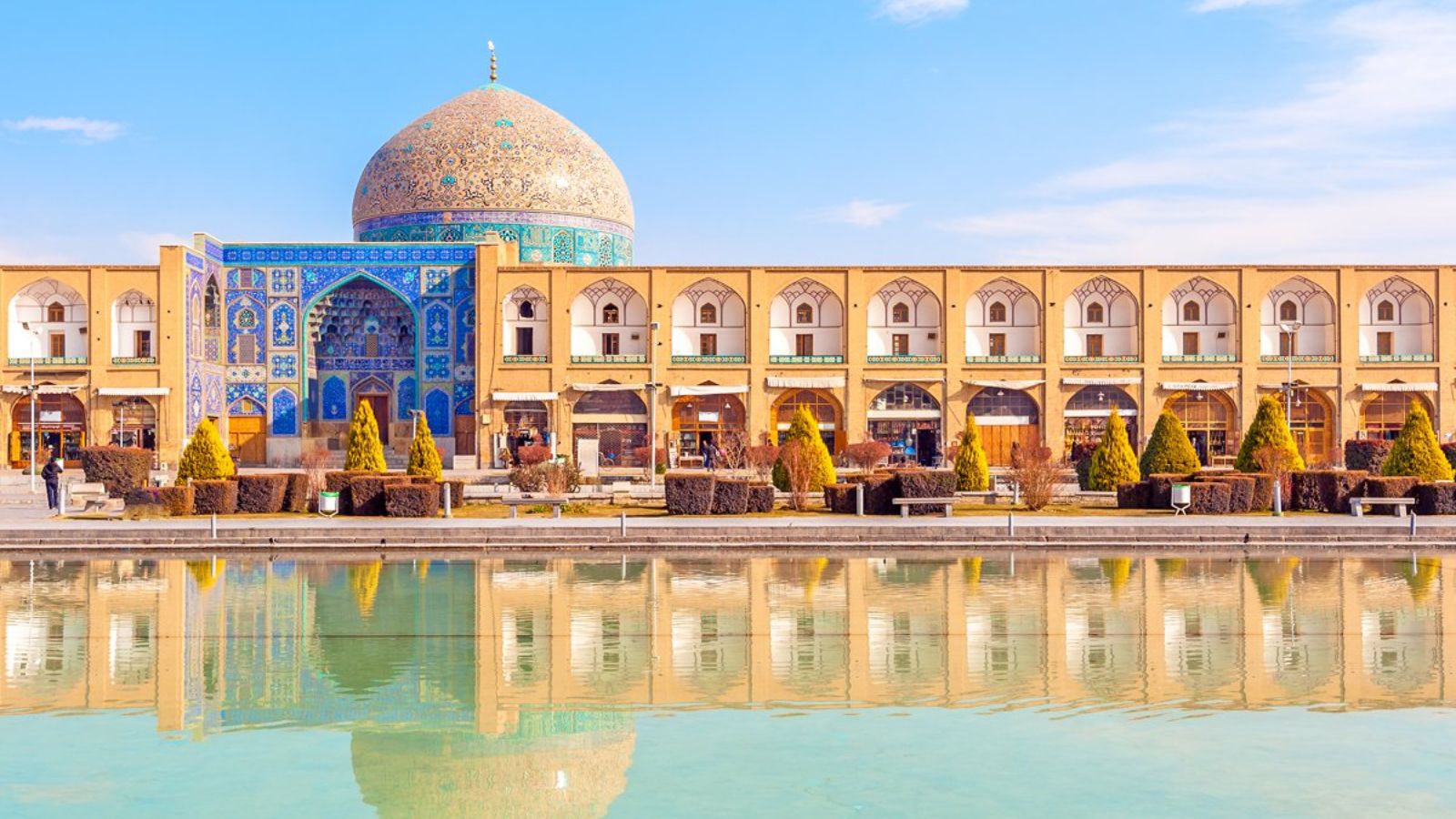
Code 30: Isfahan - Naqsh-e Jahan Square
Naghsh-e Jahan Square, also known as Imam Square, is a square situated at the center of Isfahan, Iran. Constructed between 1598 and 1629, it is now an important historical site, and one of UNESCO’s World Heritage Sites. It is 160 metres wide by 560 metres long. It is also referred to as Shah Square or Imam Square. The square is surrounded by buildings from the Safavid era. The Shah Mosque is situated on the south side of this square. On the west side is the Ali Qapu Palace. Sheikh Lotf Allah Mosque is situated on the eastern side of this square and at the northern side Qeysarie Gate opens into the Isfahan Grand Bazaar. Today, Namaaz-e Jom’eh is held in the Shah Mosque. The square is depicted on the reverse of the Iranian 20,000 rials banknote.
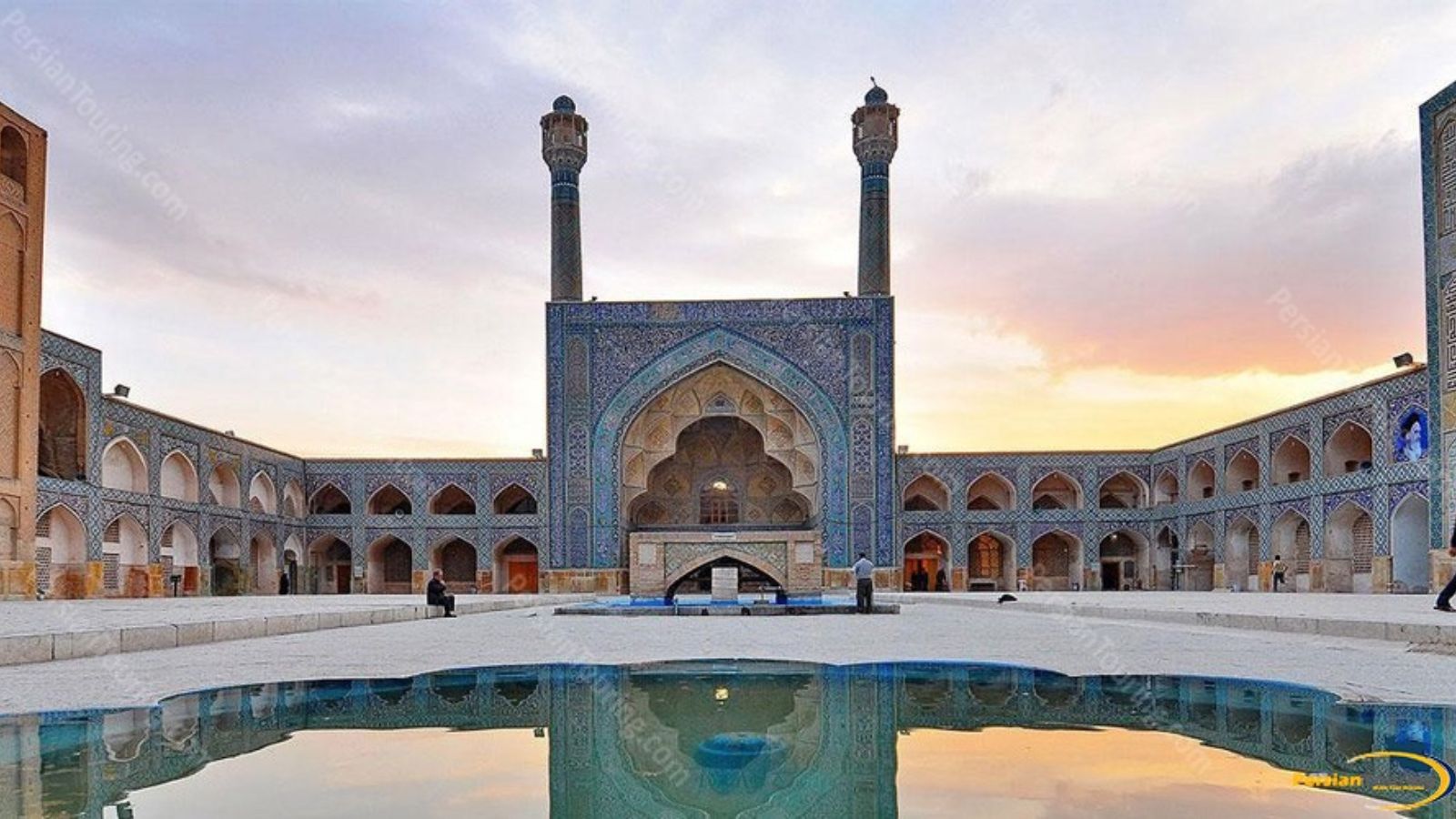
Code 31: Isfahan - Jameh Mosque of Isfahan
The Jāmeh Mosque of Isfahān or Jāme’ Mosque of Isfahān was the grand, congregational mosque of Isfahān city, within Isfahān Province, Iran. The mosque was the result of continual construction, reconstruction, additions and renovations on the site from around 771 to the end of the 20th century. The Grand Bazaar of Isfahan can be found towards the southwest wing of the mosque. It has been a UNESCO World Heritage Site since 2012.
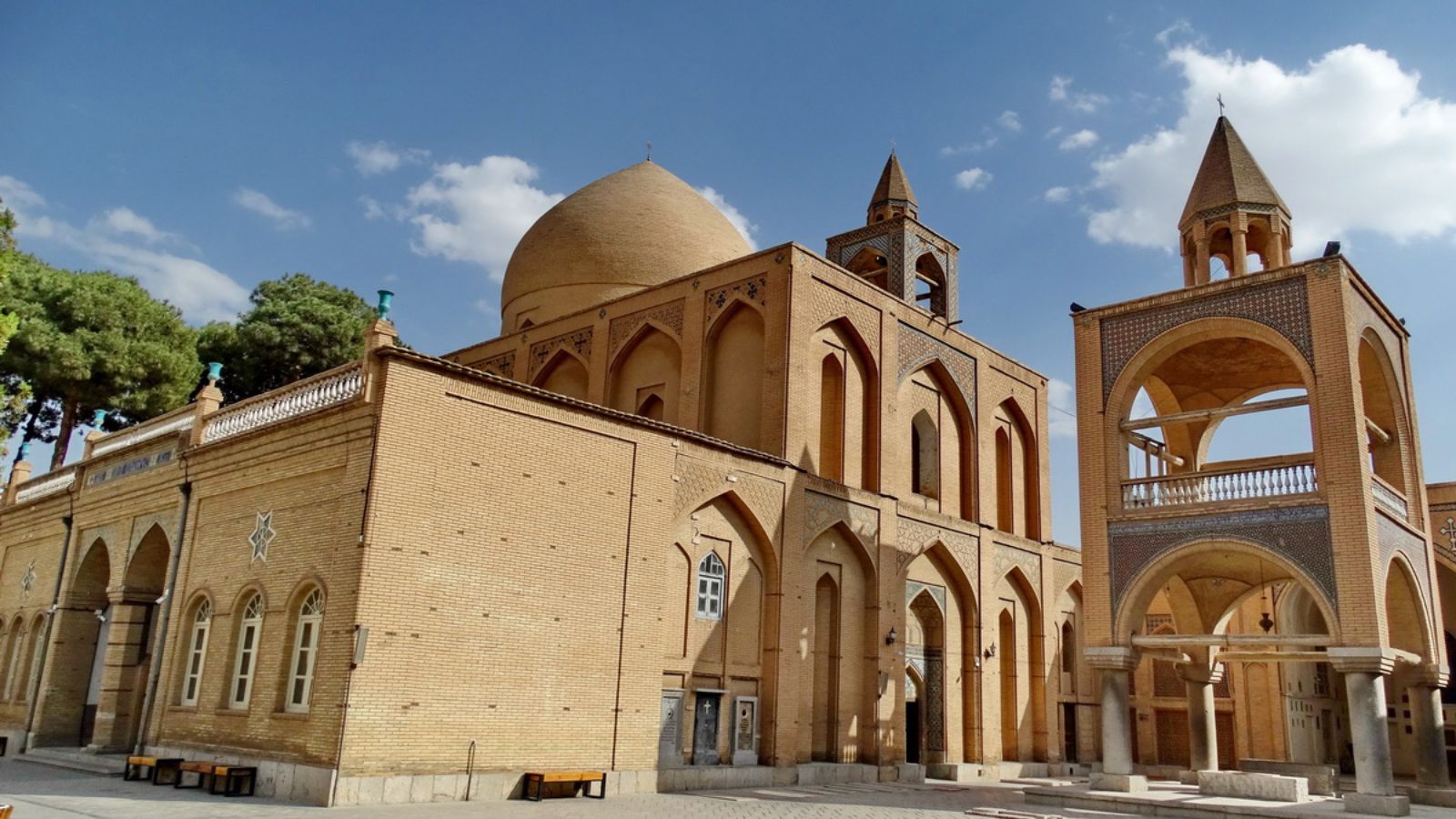
Code 32: Isfahan -Vank Cathedral
The Holy Savior Cathedral, also known the Church of the Saintly Sisters, is a cathedral located in the New Julfa district of Isfahan, Iran. It is commonly referred to as the Vank, which means “monastery” or “convent” in the Armenian language.
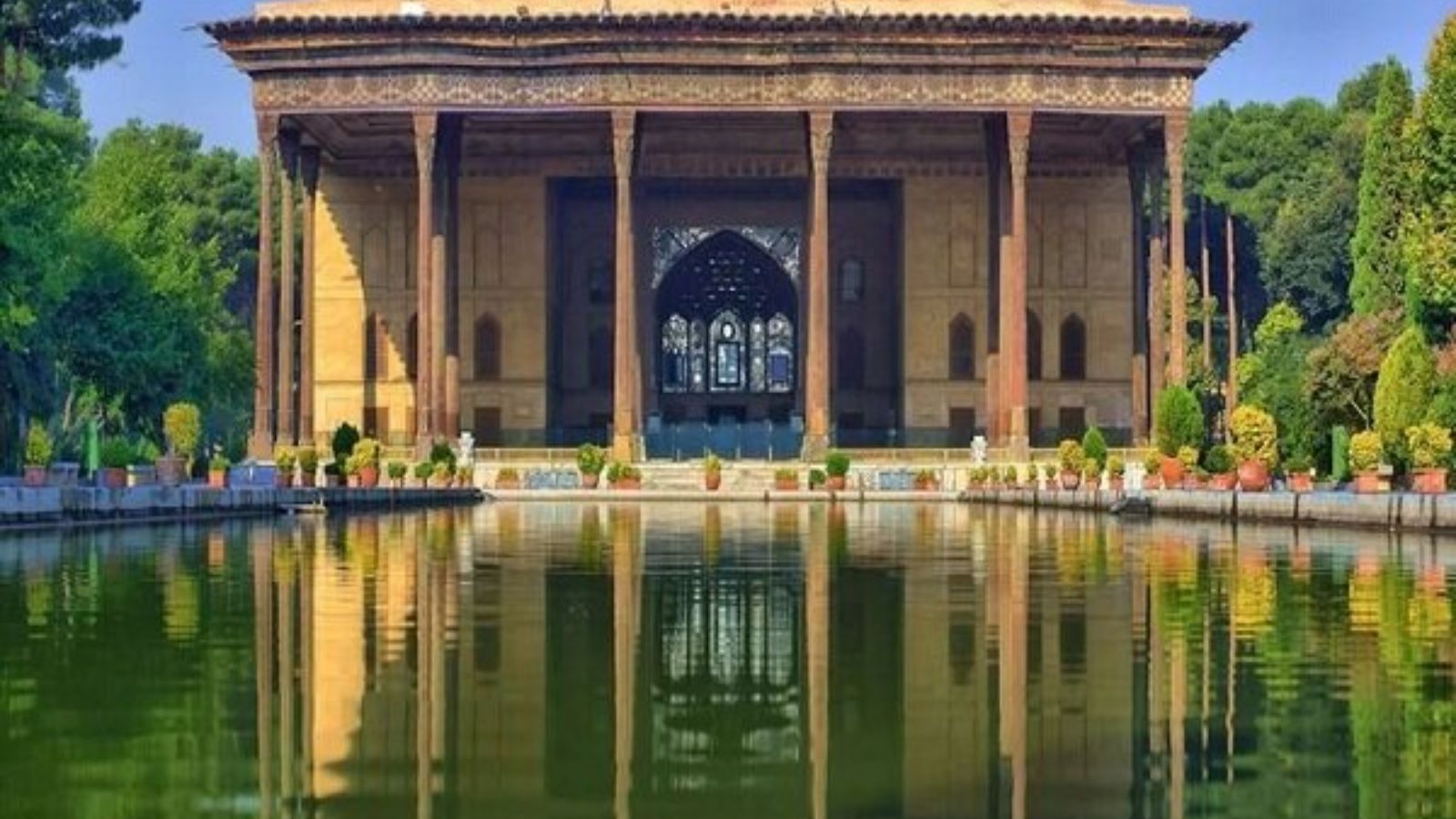
Code 33: Isfahan -Chehel Sotoun
Chehel Sotoun is a pavilion in the middle of a park at the far end of a long pool, in Isfahan, Iran, built by Shah Abbas II to be used for his entertainment and receptions. In this palace, Shah Abbas II and his successors would receive dignitaries and ambassadors, either on the terrace or in one of the stately reception halls. The name, meaning “Forty Columns” in Persian, was inspired by the twenty slender wooden columns supporting the entrance pavilion, which, when reflected in the waters of the fountain, are said to appear to be forty. As with Ali Qapu, the palace contains many frescoes and paintings on ceramic. Many of the ceramic panels have been dispersed and are now in the possession of major museums in the west. They depict specific historical scenes such as the infamous Battle of Chaldiran against the Ottoman Sultan Selim I, the reception of an Uzbek King in 1646, when the palace had just been completed; the welcome extended to the Mughal Emperor, Humayun who took refuge in Iran in 1544; the battle of Taher-Abad in 1510 where the Safavid Shah Ismail I vanquished and killed the Uzbek King.
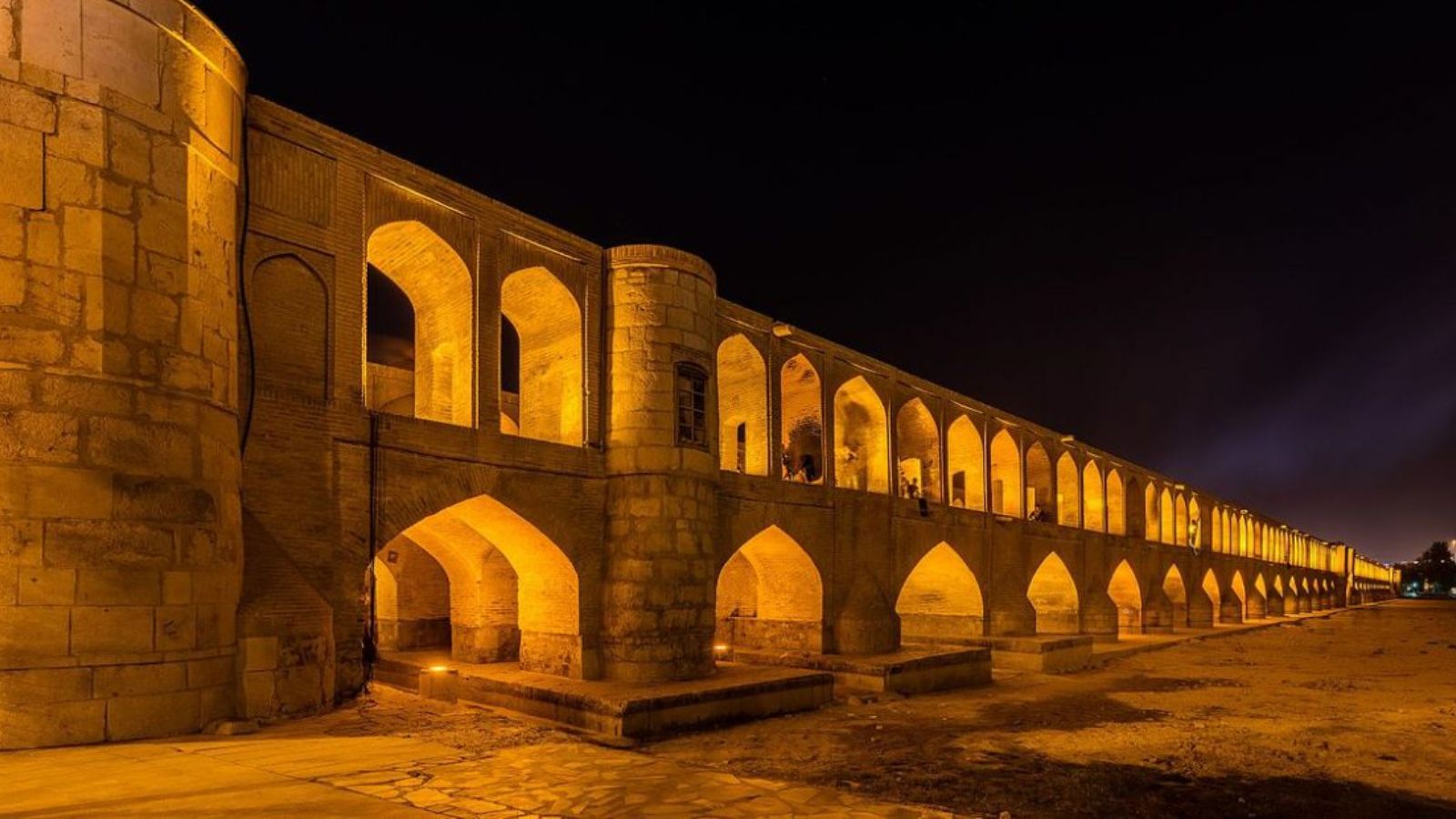
Code 34: Isfahan -Si-o-se-pol
The Allahverdi Khan Bridge, popularly known as Si-o-se-pol, is the largest of the eleven historical bridges on the Zayanderud, the largest river of the Iranian Plateau, in Isfahan, Iran. The bridge was built in the early 17th century to serve as both a bridge and a dam. It is a popular recreational gathering place, and is one of the most famous examples of Iran’s Safavid architecture.
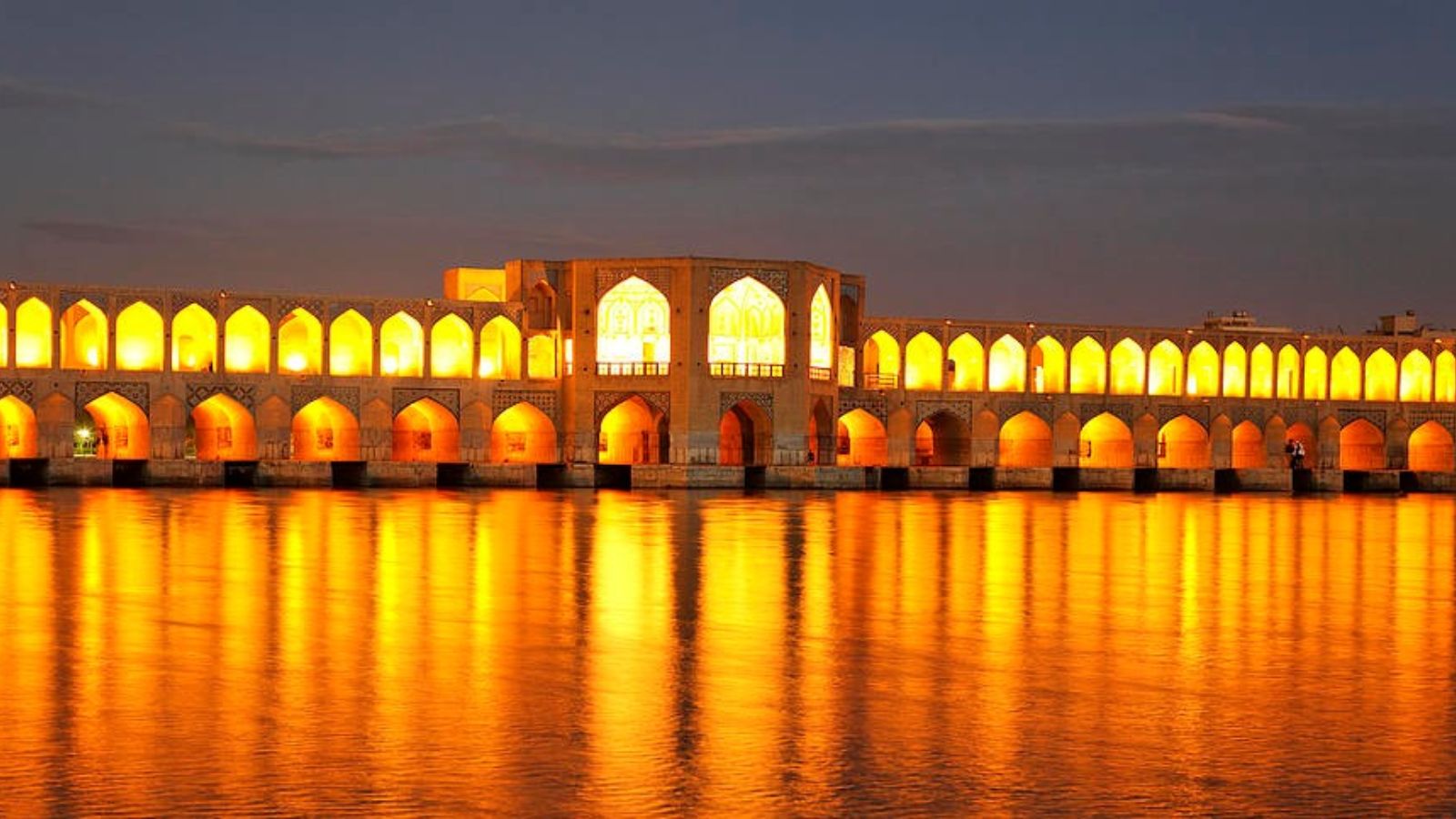
Code 35: Isfahan - Khaju Bridge
The Khaju Bridge is one of the historical bridges on the Zayanderud, the largest river of the Iranian Plateau, in Isfahan, Iran. Serving as both a bridge and a weir, it links the Khaju quarter on the north bank with the Zoroastrian quarter across the Zayanderud. It also served a primary function as a building and a place for public meetings. It has been described as the city’s finest bridge. The mausoleum of Arthur Pope and his wife Phyllis Ackerman is situated nearby.
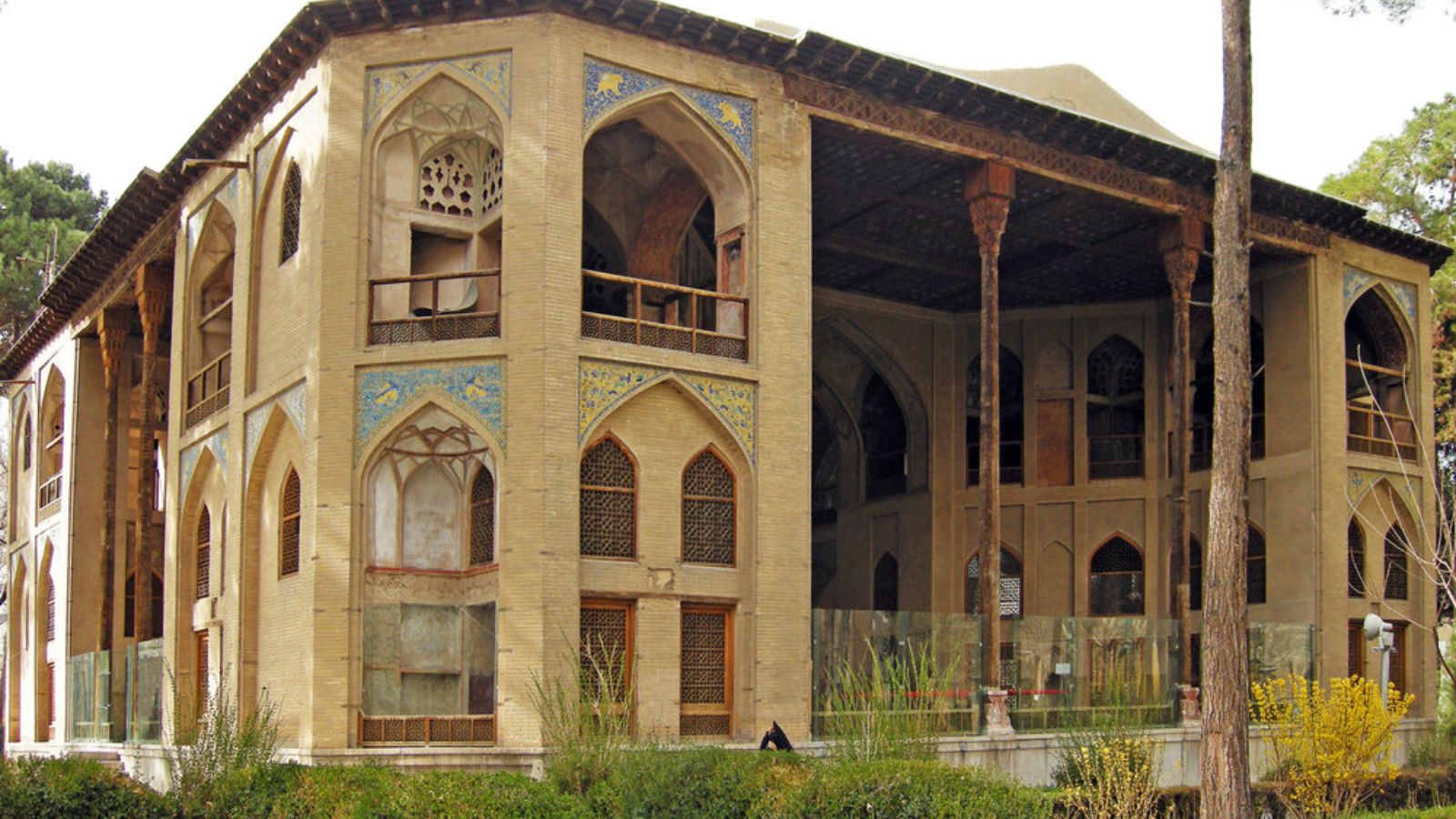
Code 36: Isfahan - Hasht Behesht
Hasht Behesht, literally meaning “the Eight Heavens” in Persian, is a 17th-century pavilion in Isfahan, Iran. It was built by order of Suleiman I, the eighth shah of Iran’s Safavid Empire, and functioned mainly as a private pavilion. It is located in Isfahan’s famous Charbagh Street.
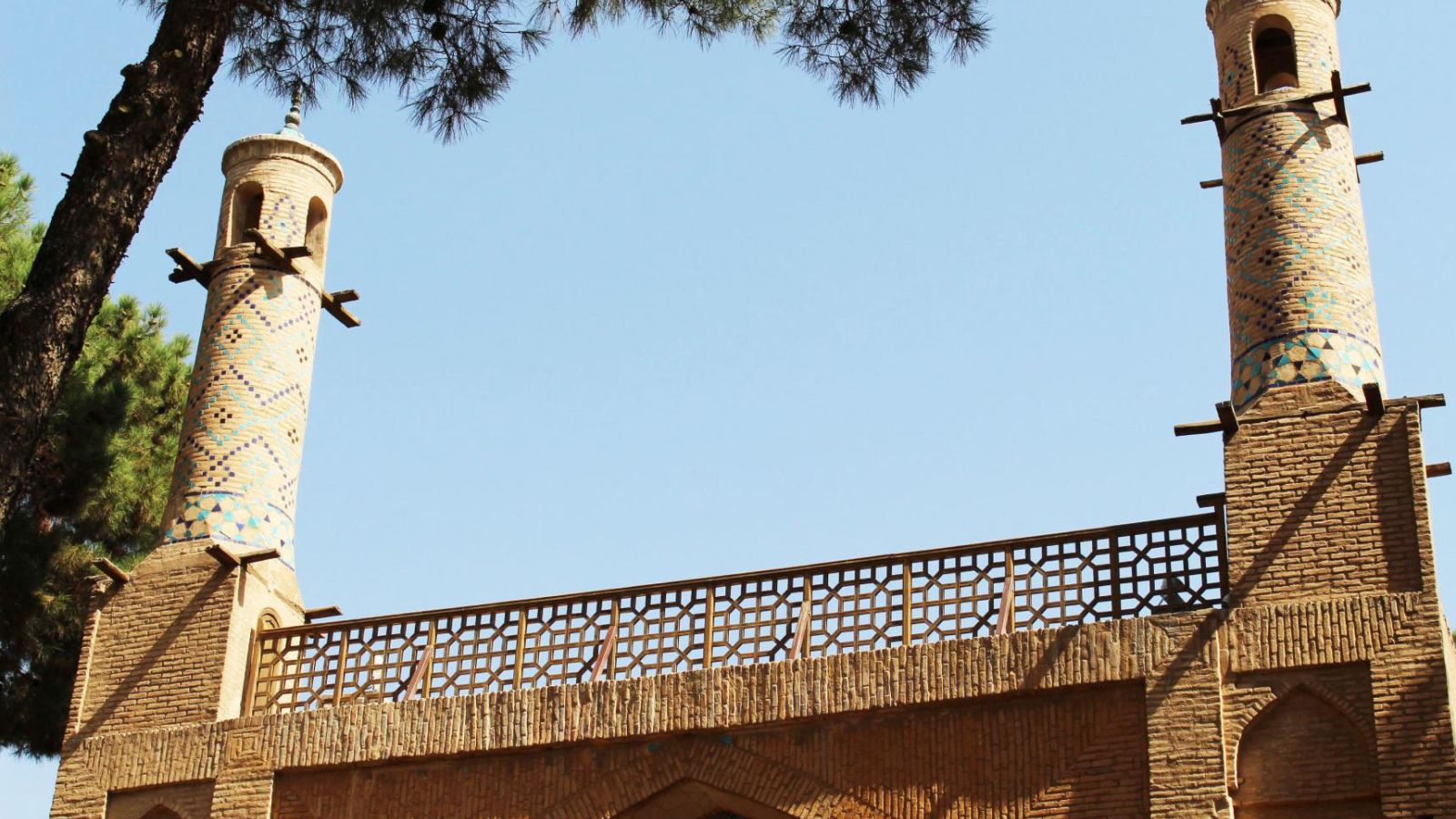
Code 37: Isfahan - Menar Jonban
The Monar Jonban, is a monument located in Esfahan, in central Iran. Construction began in the 14th century Safavid or Ilkhanate dynasties of Iran to cover the grave of Sufi Amu Abdollah Soqla. Its notable feature is that if one of the minarets is shaken, the other minaret will shake as well.
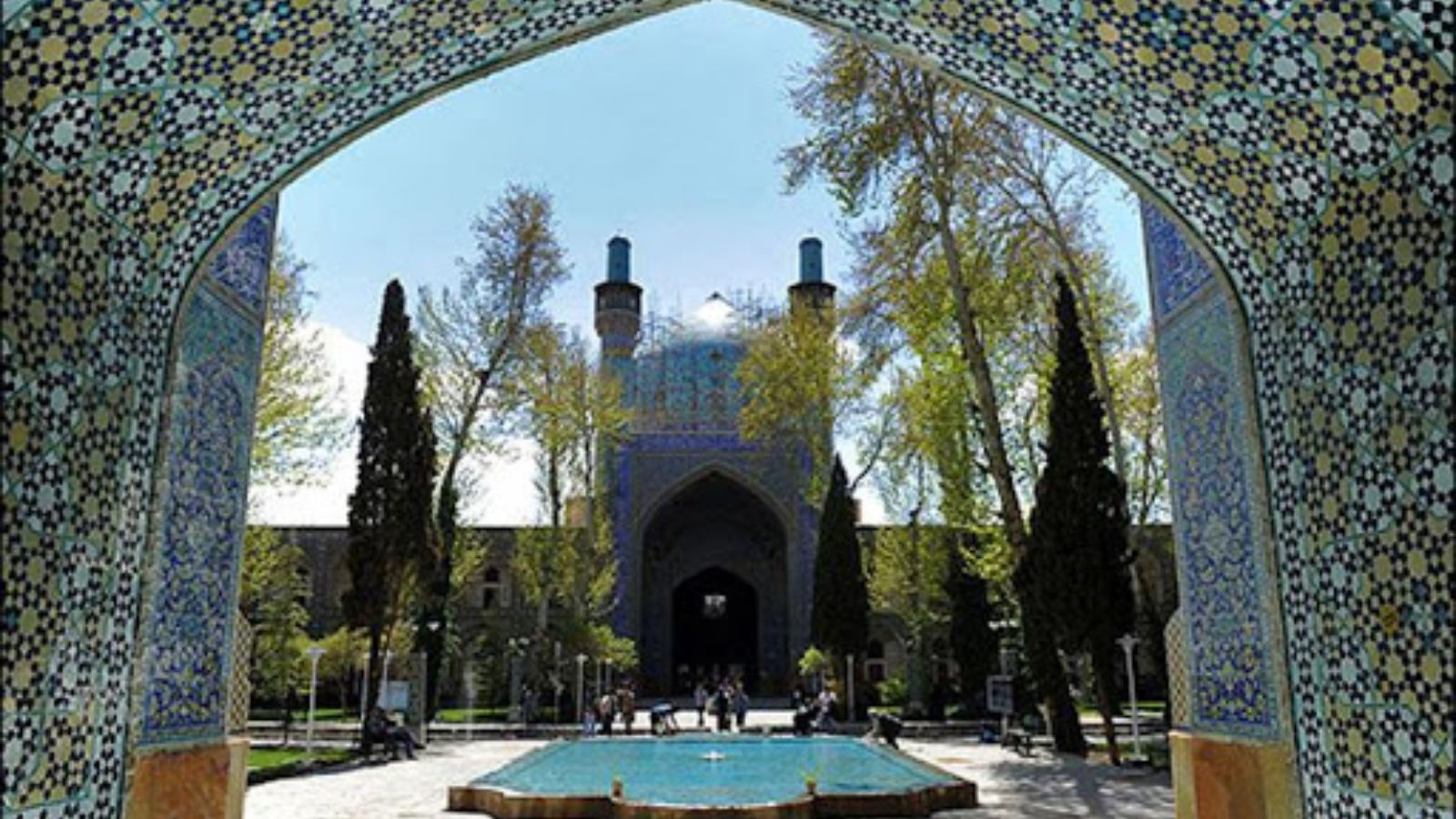
Code 38: Isfahan - Chaharbagh School
Your content goes here. Edit or remove this text inline or in the module Content settings. You can also style every aspect of this content in the module Design settings and even apply custom CSS to this text in the module Advanced settings.
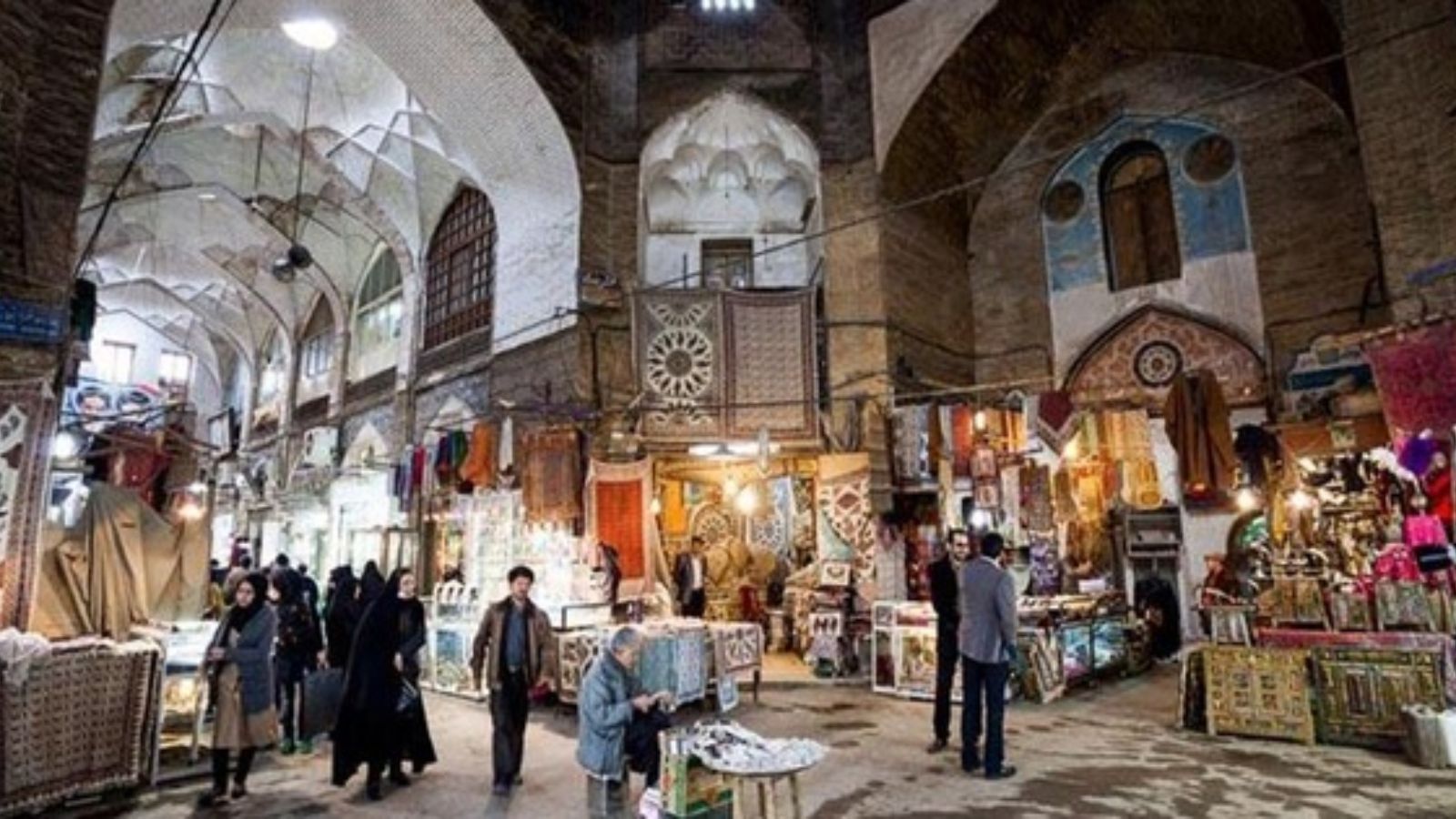
Code 39: Isfahan - Grand Bazaar
The Grand Bazaar is a historical market located in Isfahan, Iran, also known as the Qeysarriyeh Bazaar, Qeysarie bazaar or Soltani bazaar. The main commercial activities in the Qeysarie bazaar are carpet and kilim selling. The bazaar was one of the greatest and luxurious trading center in the safavid era. It was built in 1620 on the northern side of Naqsh-e Jahan Square. It connects the Naqsh-e Jahan Square to the Kohneh Square and seljukid part of Isfahan. The Qeysarie bazaar includes these parts: Orian bazaar Harounie Nimavard-e Golshan Makhlas Samavarsazha Maqsudbeyk In the Qeysarie bazaar, there are many historical buildings such as Nimavar school, Sadr school, Khayyatha mosque, No mosque, Zolfaghar mosque, Shishe mosque and Jarchi mosque. The Qeysarie gate is the main entrance of the bazaar.

Code 40: Isfahan - Soffeh Mountain Park
Park
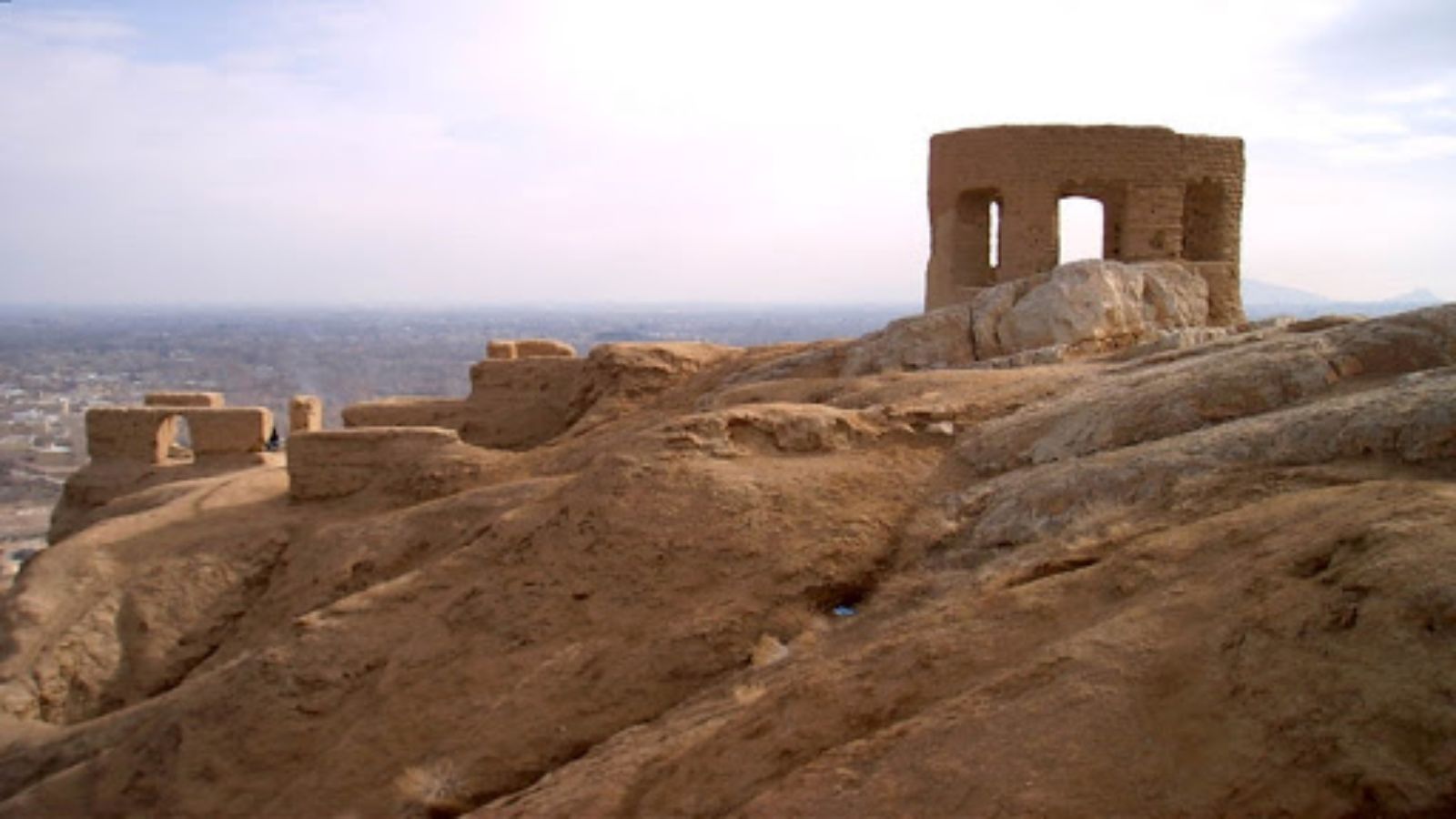
Code 41: Isfahan - Atashgah
The Fire Temple of Isfahan is a Sassanid-era archaeological complex located on a hill of the same name about eight kilometers west of city center of Isfahan, Iran.
The hill, which rises about 210 meters above the surrounding plain, was previously called Maras or Marabin after a village near there, and it is by that name that the site is referred to by Arab historians.
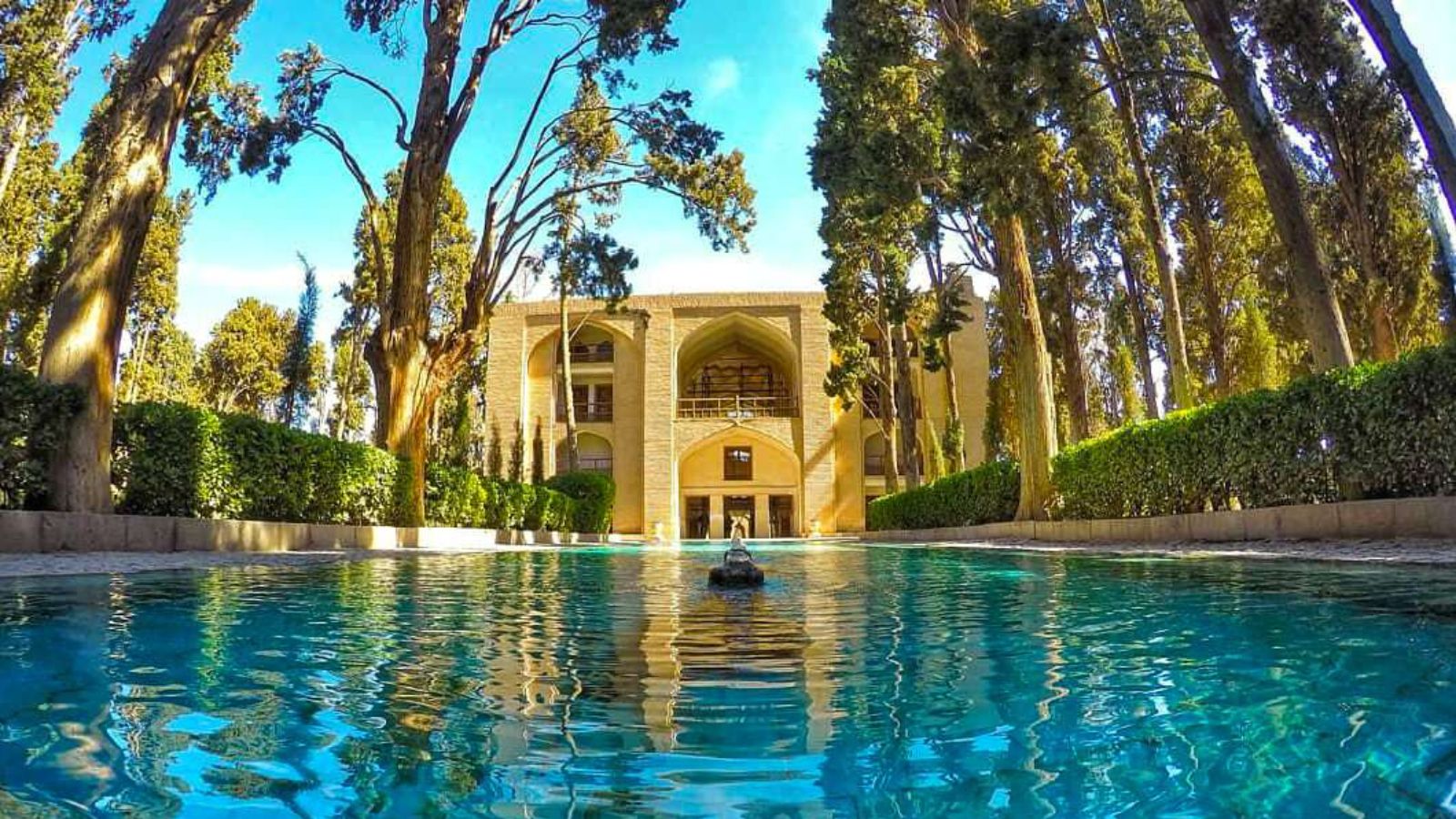
Code 42: Kashan - Fin Garden
Fin Garden located in Kashan, Iran, is a historical Persian garden. It contains Kashan’s Fin Bath, where Amir Kabir, the Qajarid chancellor, was murdered by an assassin sent by King Nasereddin Shah in 1852. Completed in 1590, the Fin Garden is the oldest extant garden in Iran.

Code 43: Kashan - Tabatabai House
The Tabatabai House is a historic house museum in Kashan, Iran. It was built around 1880, during the reign of the Qajar dynasty, for the affluent Tabātabāei family. It is one of the prominent historic houses of Kashan, together with the Āmeri House, the Borujerdi House, and others.
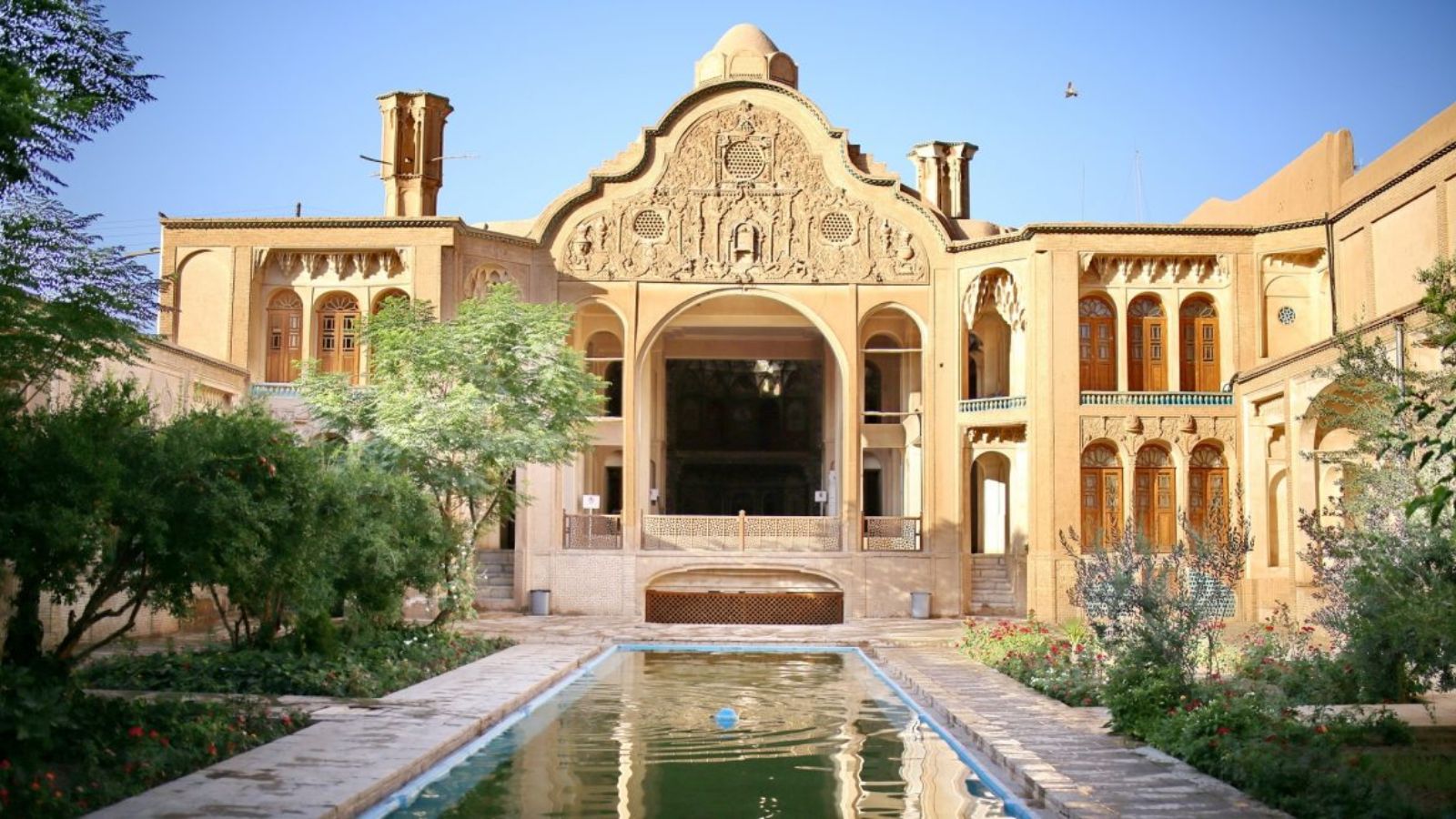
Code 44: Kashan - Borujerdi House
The Borujerdi House is a historic house museum in Kashan, Iran. It was built in 1857 by architect Ustad Ali Maryam for the bride of Borujerdi, a wealthy merchant. The bride came from the affluent Tabātabāei family, for whom the architect had built the nearby Tabātabāei House several years earlier.
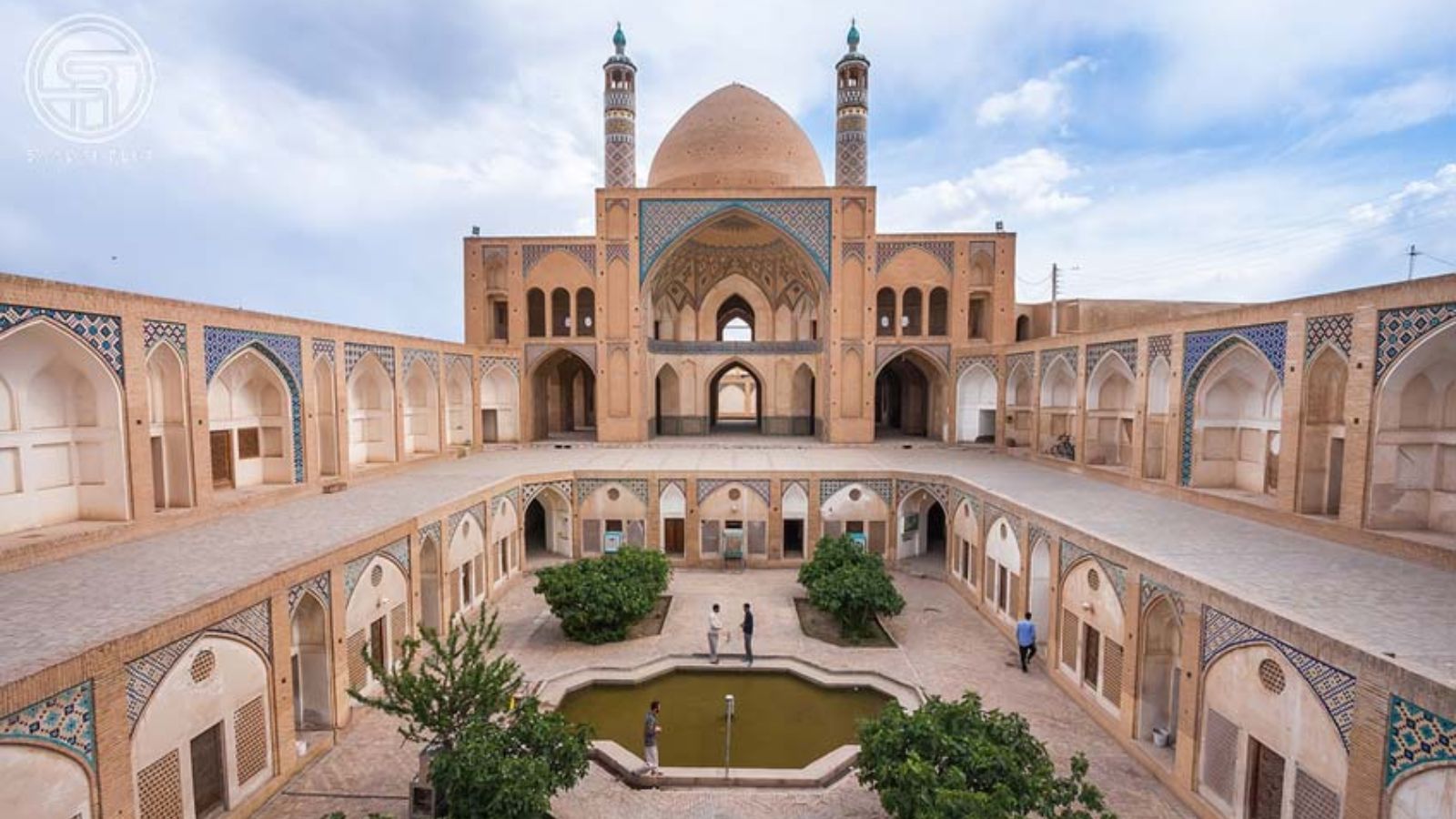
Code 45: Kashan - Agha Bozorg Mosque
Agha Bozorg mosque is a historical mosque in Kashan, Iran. The mosque was built in the late 18th century by master-mi’mar Ustad Haj Sa’ban-ali. The mosque and theological school is located in the center of the city. Agha Bozorgh Mosque was constructed for prayers, preaching and teaching sessions held by Molla Mahdi Naraghi II also known as Mulla Mohammad Naraqi, known famously by his title of Āghā Bozorgh given to him by the Shah himself. Molla Mahdi Naraghi II was the son of the legendary Mulla Ahmad Naraqi who was the second strongest person in Iran after the king himself, Fath-Ali Shah Qajar. Mulla Ahmad Naraqi is well known for rallying the Iranian forces against the Russian invasion of northern Iran and declaring “jihad” or “holy war” against the invading Russians. He was successfully able to reconquer the Iranian lands that the invading Russian forces had captured during that offensive. Mulla Ahmad Naraqi, his brothers, his sons, and his father Mulla Muhammad Mahdi Naraqi famously known as Muhaqqiq Naraqi; are some of the most prominent Shi’a clerics as well as some of the most famous Islamic Iranian scientists of their time
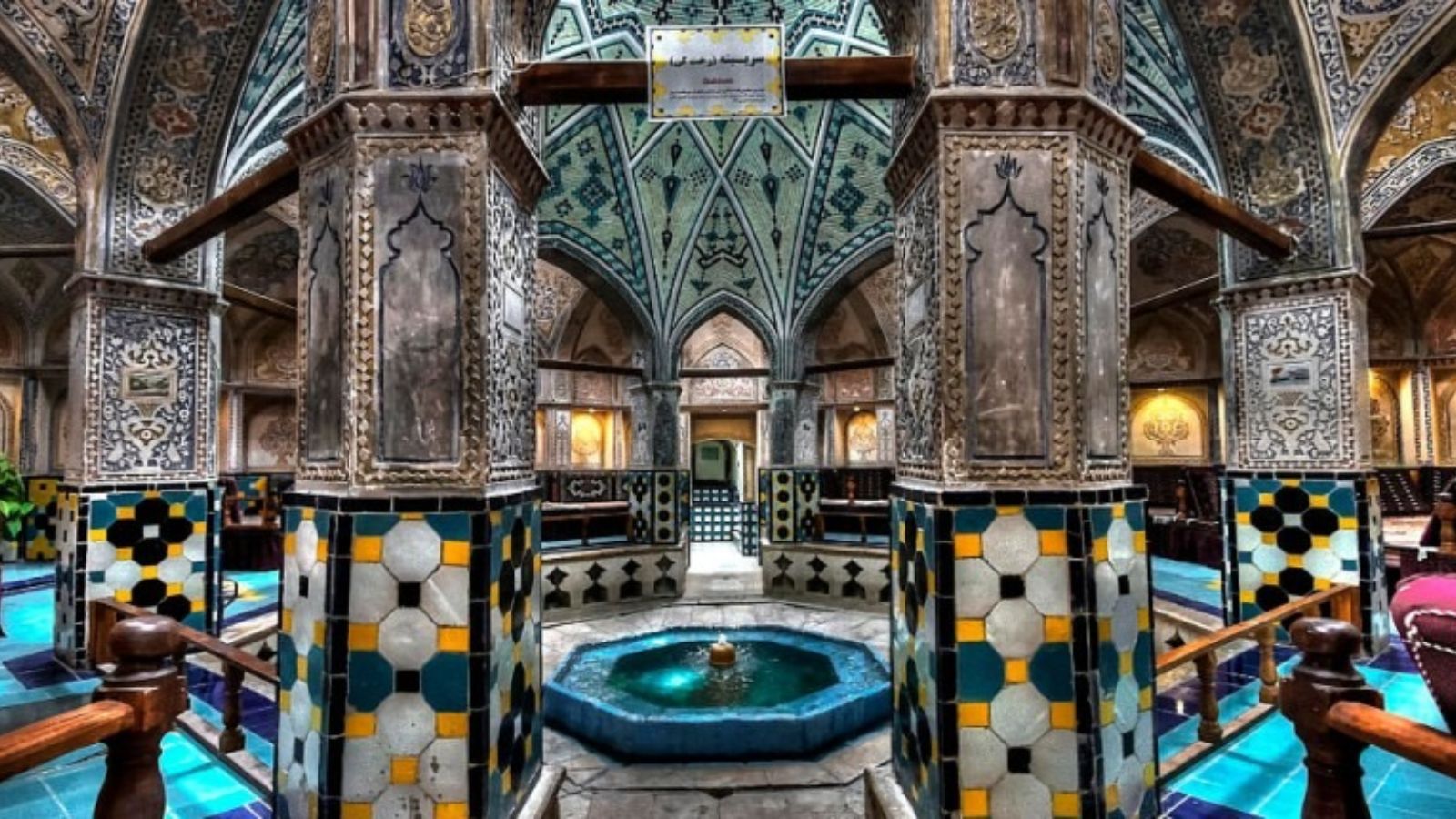
Code 46: Kashan - Sultan Amir Ahmad Bathhouse
Sultan Amir Ahmad Bathhouse, also known as the Qasemi Bathhouse, is a traditional Iranian public bathhouse in Kashan, Iran. It was constructed in the 16th century, during the Safavid era; however, the bathhouse was damaged in 1778 as a result of an earthquake and was renovated during the Qajar era. The bathhouse is named after Imamzadeh Sultan Amir Ahmad, whose mausoleum is nearby. Sultan Amir Ahmad Bathhouse, with an area of around 1000 square meters, consists of two main parts: the sarbineh and garmkhaneh. The sarbineh is a large octagonal hall and has an octagonal pool in the middle, separated by 8 pillars from the outer section. There are four pillars in the garmkhaneh, which make smaller bathing rooms all around as well as the entrance section to the khazineh in the middle. The interior of the bathhouse is decorated with turquoise and gold tilework, plasterwork, brickwork, as well as artistic paintings. The roof of the bathhouse is made of multiple domes that contain convex glasses to provide sufficient lighting to the bathhouse while concealing it from the outside.
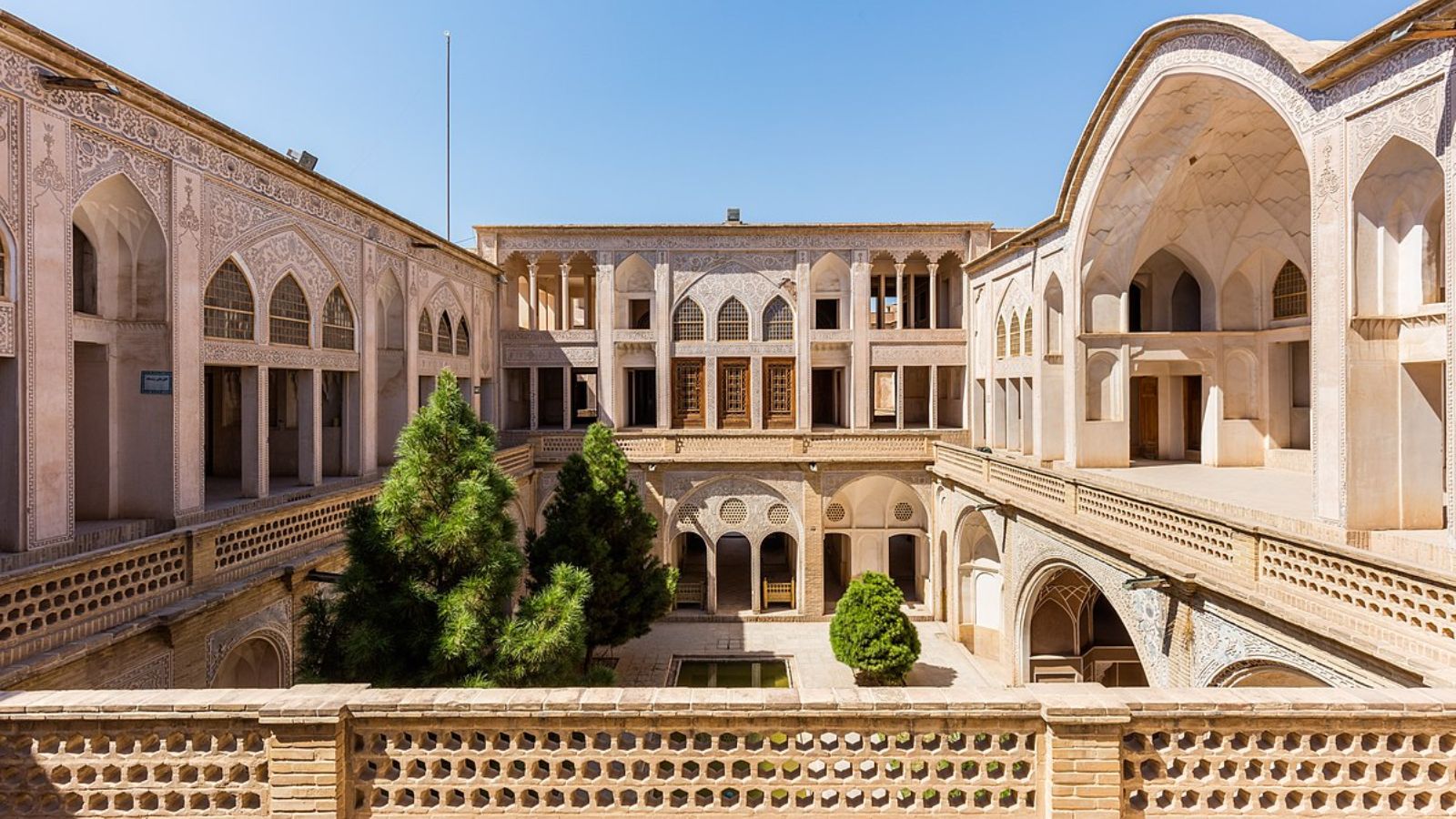
Code 47: Kashan - Abbāsi House
The Abbassian House is a large historic house museum in Kashan, Iran. It was built during the late 18th century and belonged to a wealthy glass merchant. It is partly converted into a teahouse, a traditional restaurant, and a small shop. Other such houses, including the Borujerdi House and the Tabātabāei House, are located nearby.
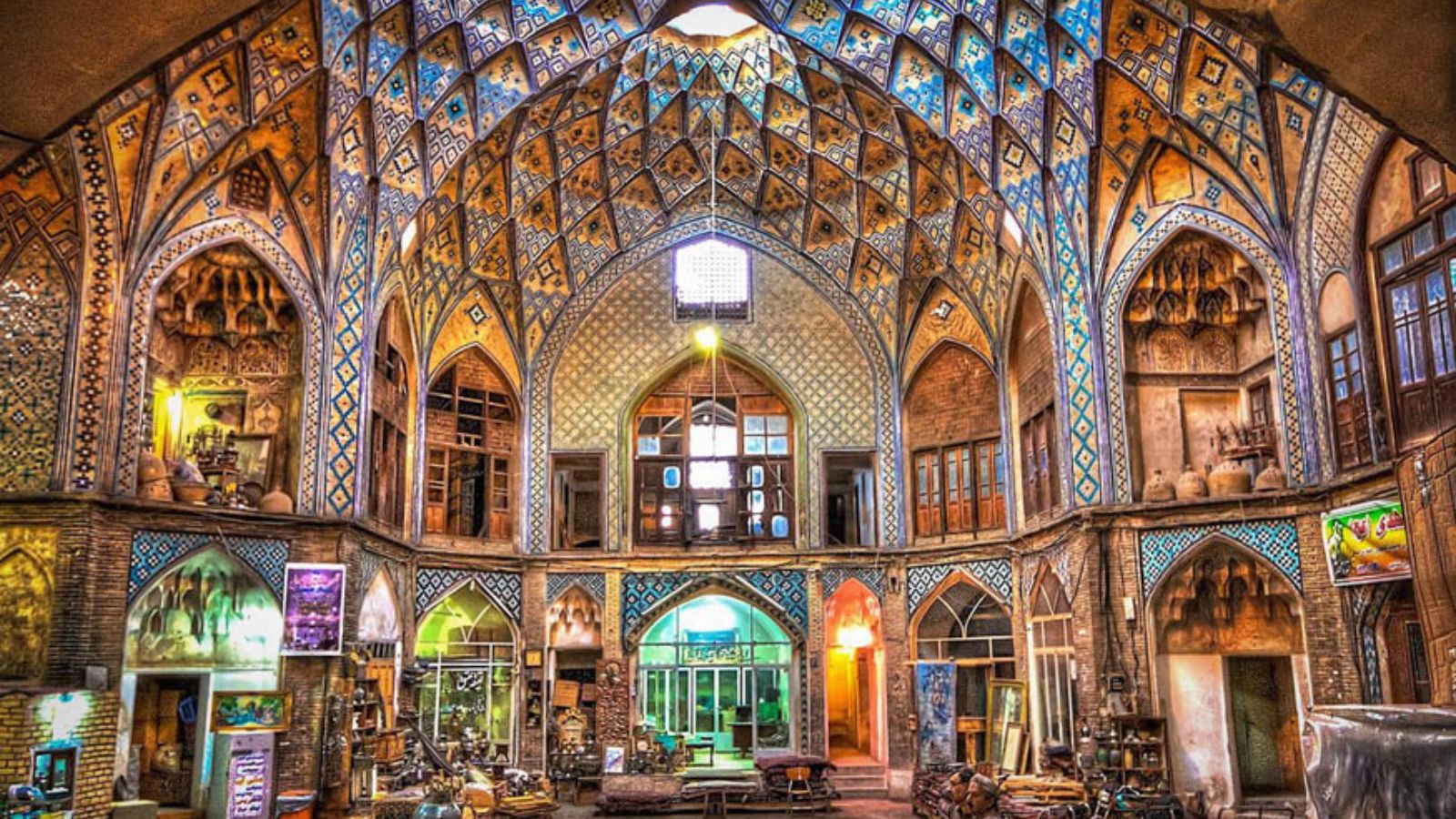
Code 48: Kashan - Bazaar of Kashan
Bazaar of Kashan is an old bazaar in the center of the city of Kashan, Iran. It is thought to have been built in the Seljuk era with renovations during the Safavid period. The bazaar has a famous architecture, especially at its Timche-ye Amin od-Dowleh section, where a grand light well was built in the 19th century. The bazaar is still in use and is a few miles in total length. In the bazaar’s complex beside the main bazaars, there are several mosques, tombs, plazas, arcades, baths, and water reservoirs that each were constructed in a different period.
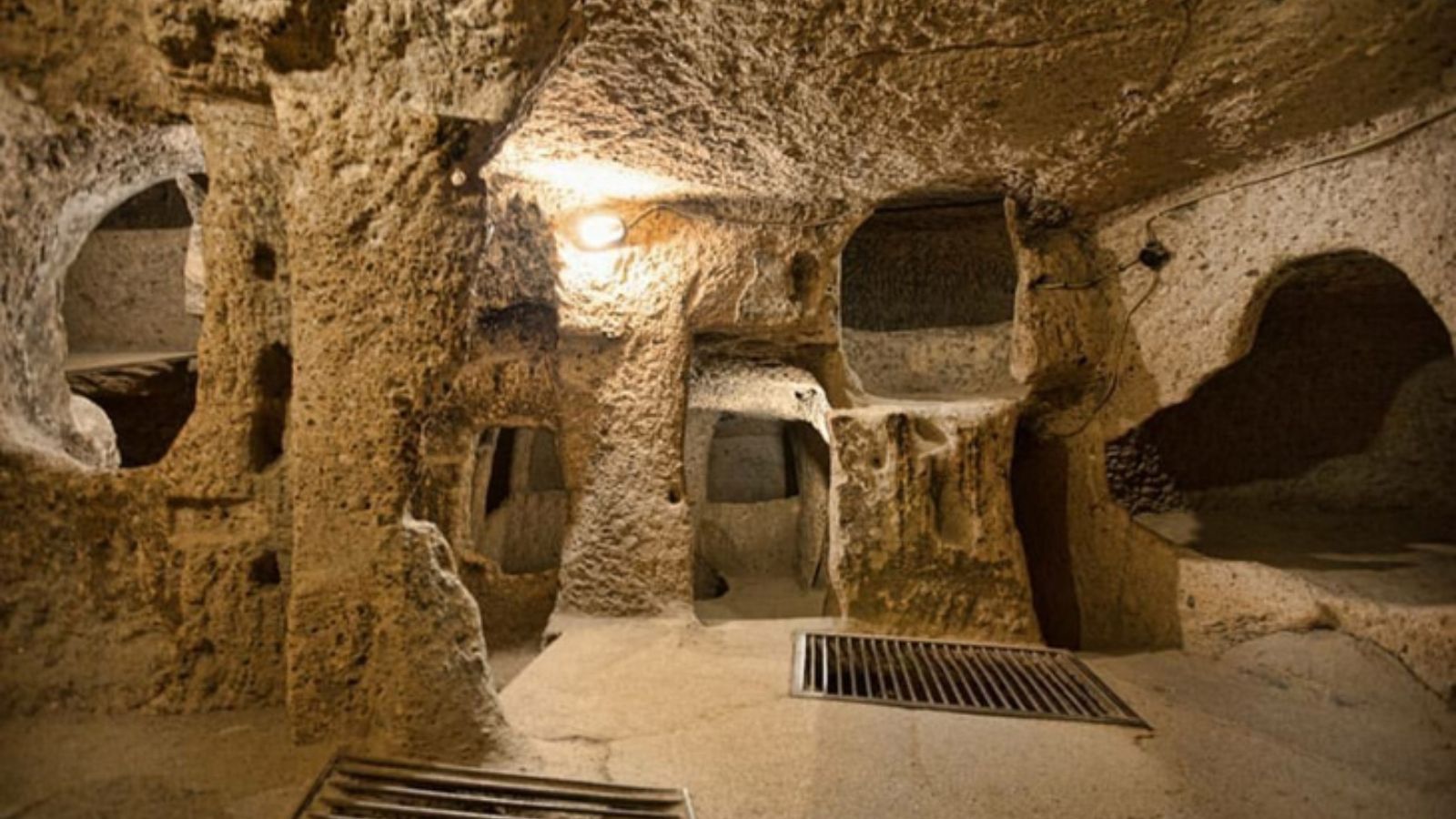
Code 49: Kashan - Noushabad Underground City
Ecotourism, history, and nature
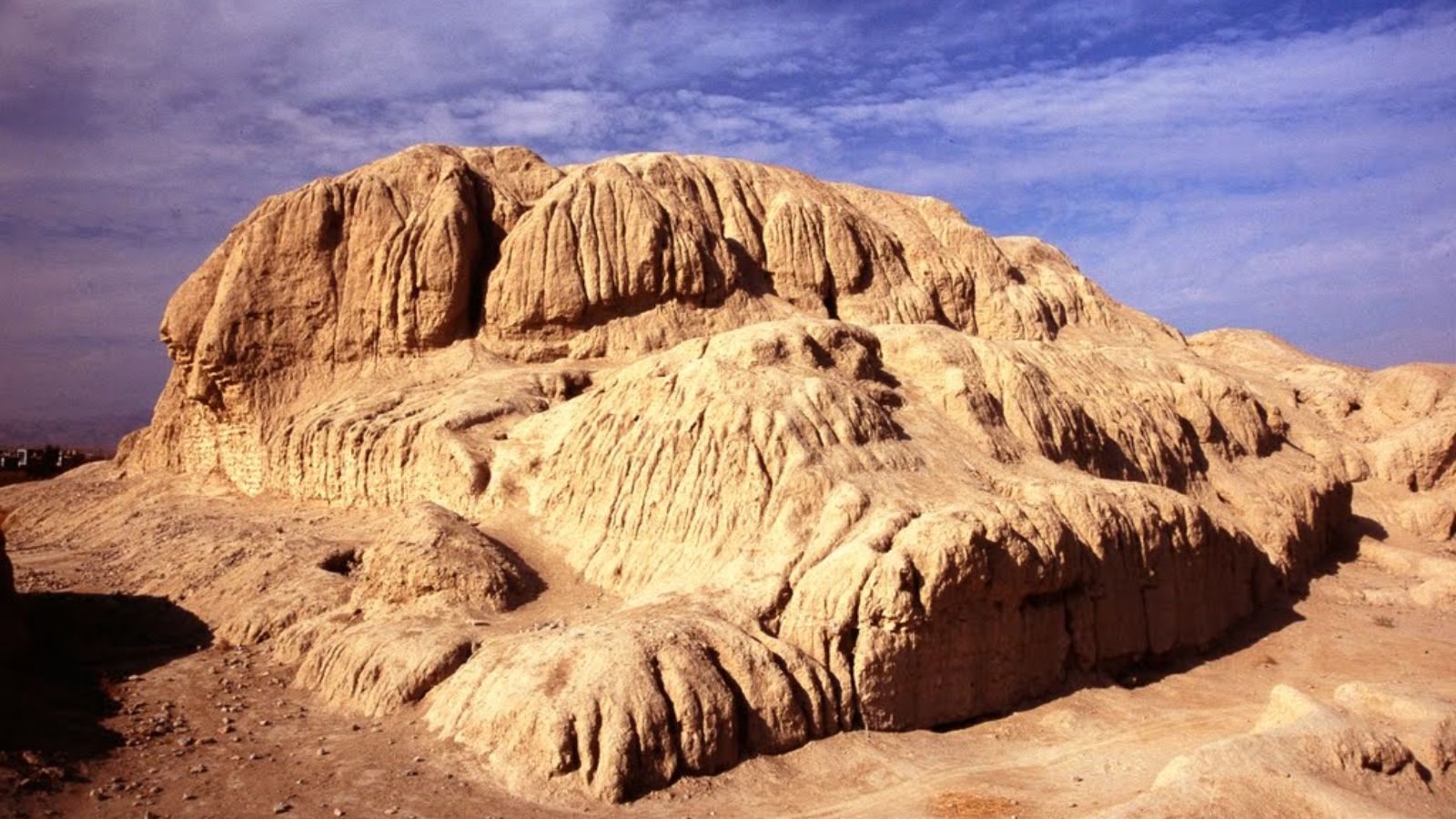
Code 50: Kashan - Sialk Hills
Sialk, and the entire area around it, is thought to have originated as a result of the pristine large water sources nearby that still run today. The Cheshmeh ye Soleiman (“Solomon’s Spring”) has been bringing water to this area from nearby mountains for thousands of years. The Fin garden, built in its present form in the 17th century, is a popular tourist attraction. It is here that the kings of the Safavid dynasty would spend their vacations away from their capital cities. It is also here that Piruz Nahavandi (Abu-Lu’lu’ah), the Persian assassin of Caliph Umar, is buried. All these remains are located in the same location where Sialk is.

Code 51: Kashan - Festival of Rose and Rose Water
Every year during the second half of May, festival of Rose and Rose Water is being held in Kashan. Many people from different parts of the country and abroad visit Kashan, the hub of Mohammadi Rose in Iran.
The season for picking rose and preparing rosewater is from early May to mid-June.
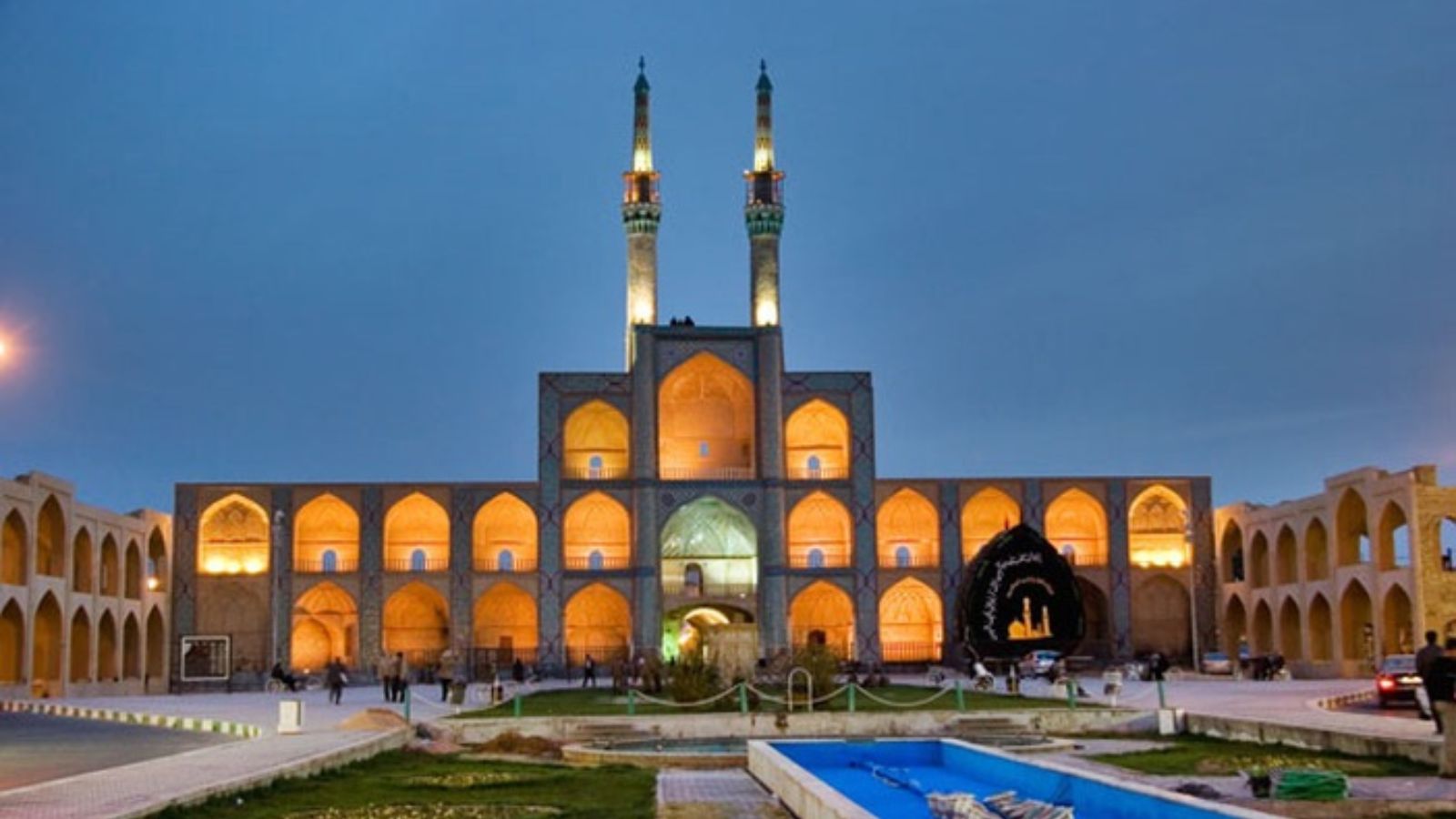
Code 52: Yazd - Amir Chakhmaq Complex
The Amir Chakhmaq Complex is a prominent structure in Yazd, Iran, noted for its symmetrical sunken alcoves. It is a mosque located on a square of the same name. It also contains a caravanserai, a tekyeh, a bathhouse, a cold water well, and a confectionery. At night, the building is lit up after twilight hours after sun set with orange lighting in the arched alcoves which makes it a spectacle. During the Iran–Iraq War and the Iraq wars with the United States and Afghanistan, many Iraqis and Afghanis came to inhabit the Amir Chakhmaq Square.
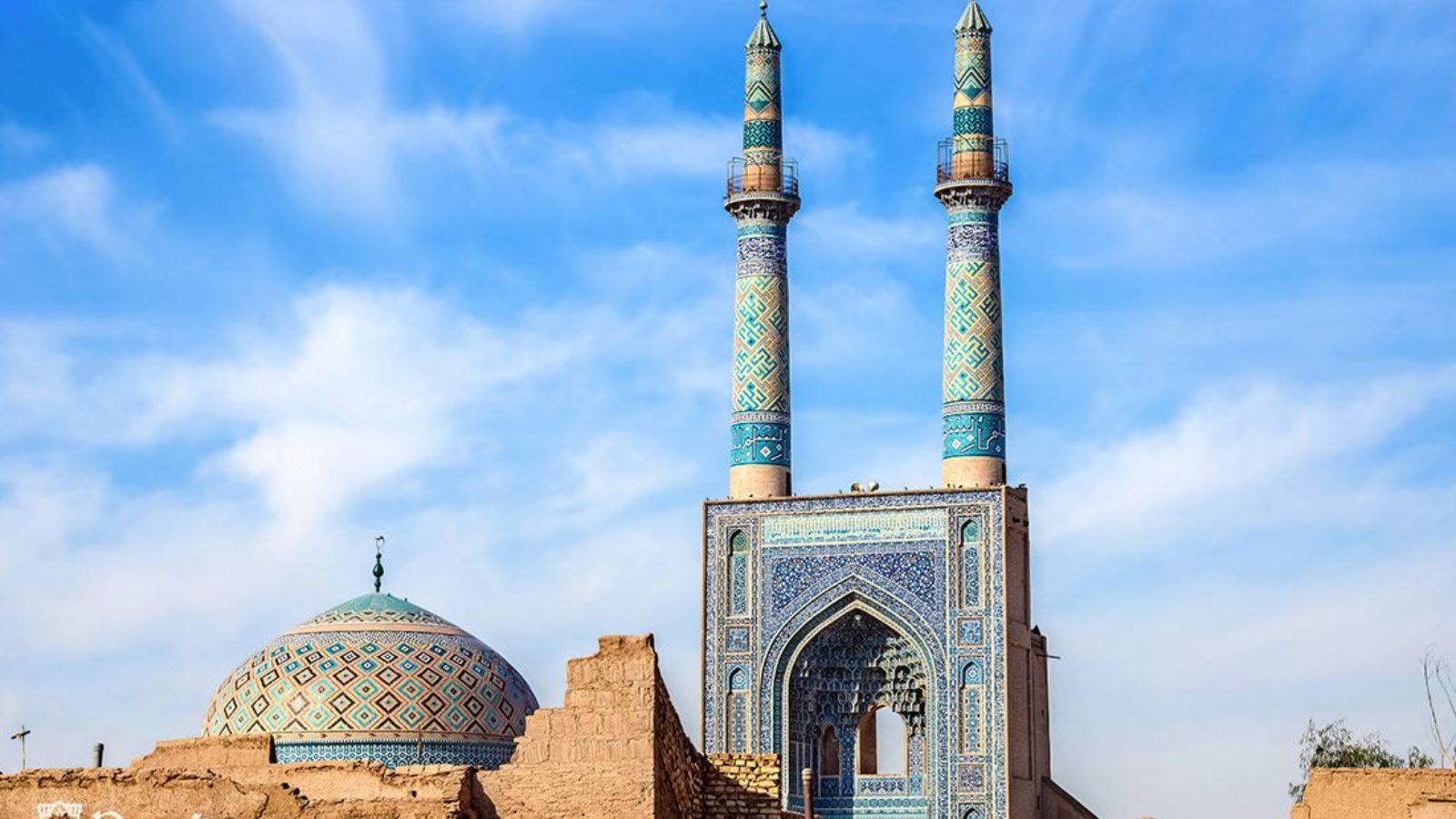
Code 53: Yazd - Jameh Mosque of Yazd
The Jāmeh Mosque of Yazd is the grand, congregational mosque of Yazd city, within the Yazd Province of Iran. The mosque is depicted on the obverse of the Iranian 200 rials banknote.
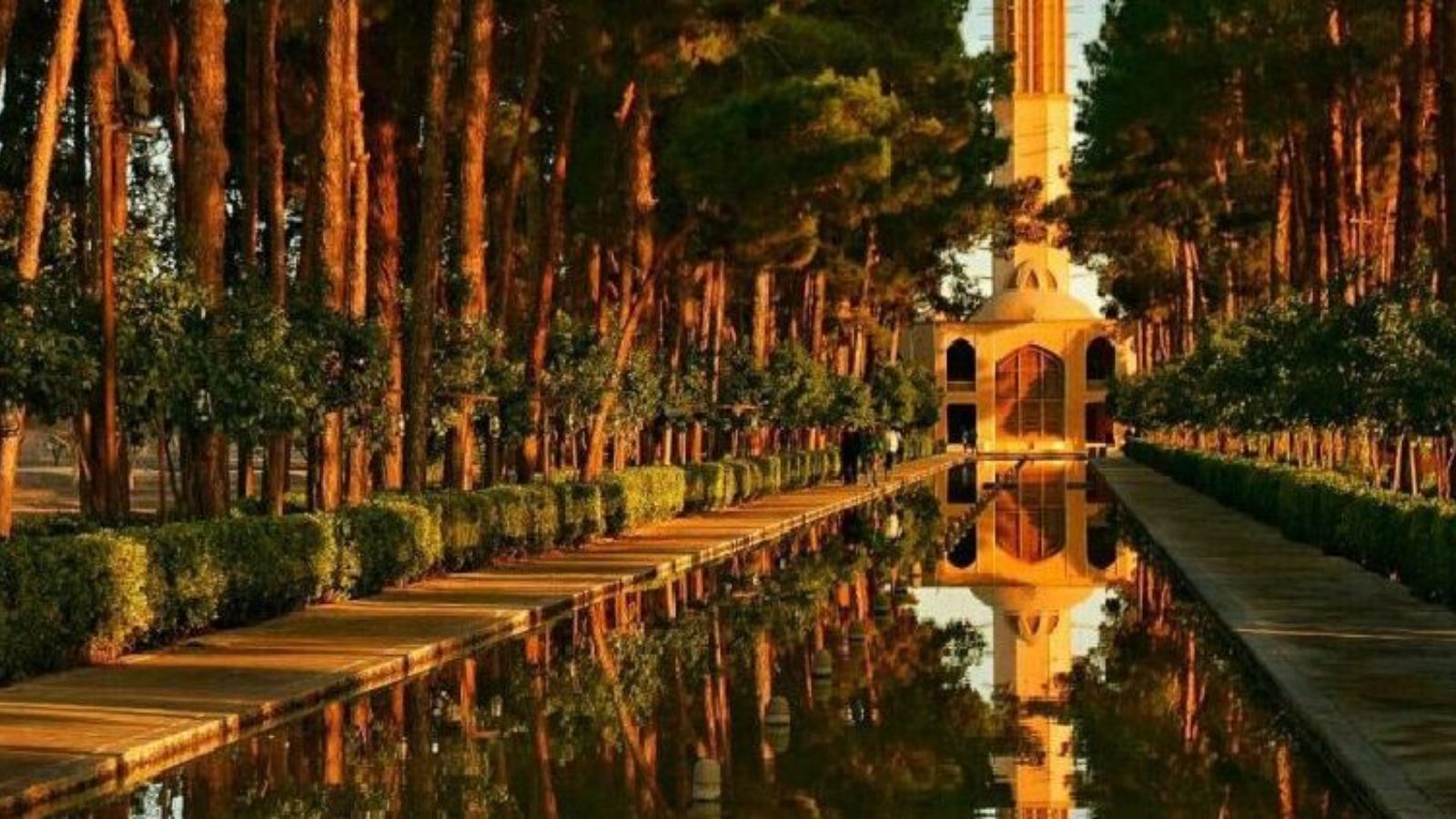
Code 54: Dowlat Abad Garden
18th-century complex with a wind tower
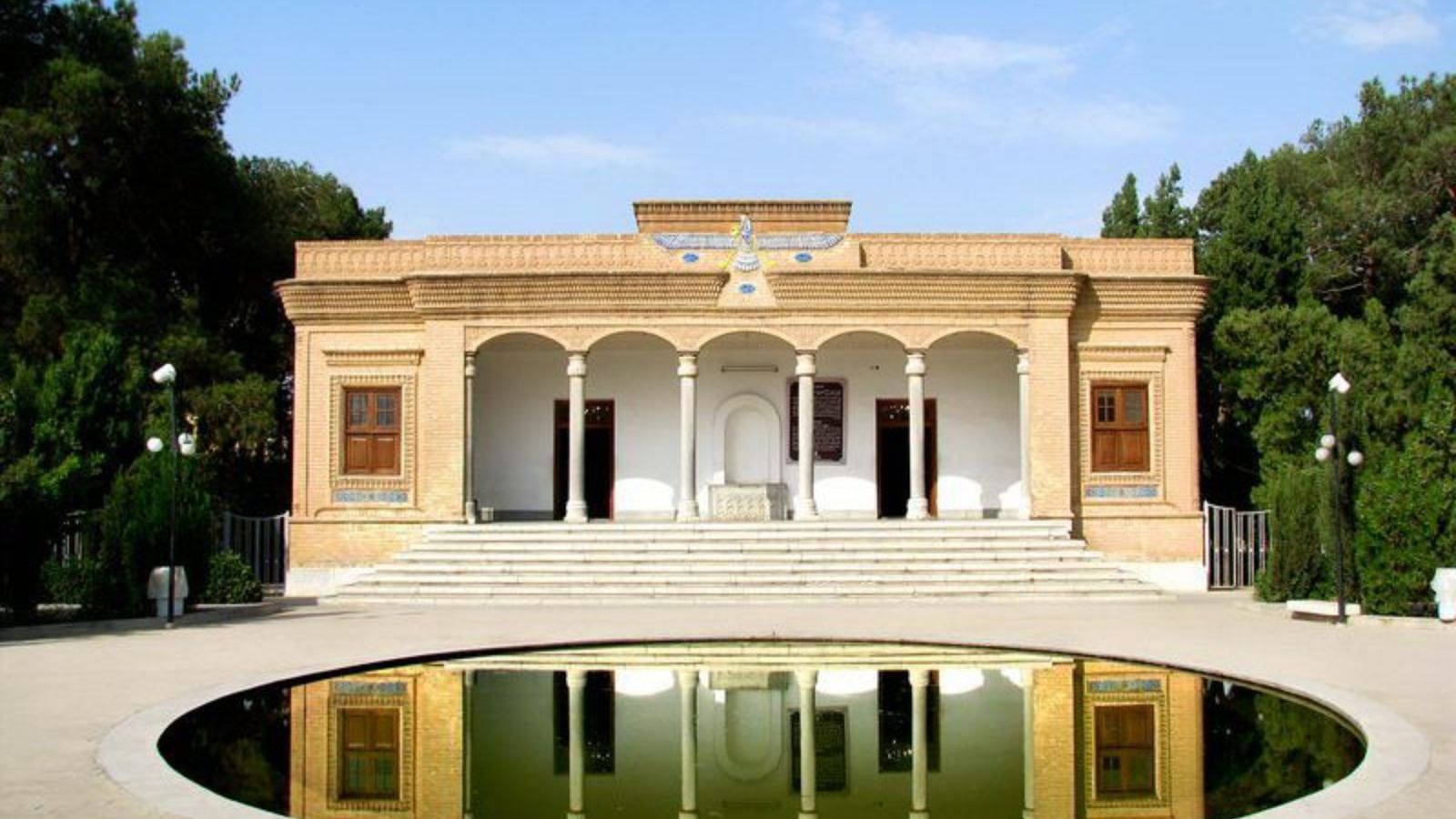
Code 55: Yazd -Atash Behram
The Fire Temple of Yazd, also known as Yazd Atash Behram, is a Zoroastrian fire temple in Yazd, Yazd province, Iran. It enshrines the Atash Bahram, meaning “Victorious Fire”, dated to 470 AD. It is one of the nine Atash Bahrams, the only one of the highest grade fire in ancient Iran where Zoroastrians have practiced their religion since 400 BC; the other eight Atash Bahrams are in India. According to Aga Rustam Noshiravan Belivani, of Sharifabad, the Anjuman-i Nasiri opened the Yazd Atash Behram in the 1960s to non-Zoroastrian visitors. Seeing a few children, firebox in their hand, and their occasional naughtiness but with caution not to fall into the ground was a common sight in ancient Iran. The children who like fire were the heat and kindness of every family. At that time, there was no match or other instrument to make fire. Thus, in one place, a fire was always on so that the people can take an amount of fire daily to turn on the firebox of their house. “Kadeh” in Dari Persian language means house, and “Atashkadeh” means the house of fire.
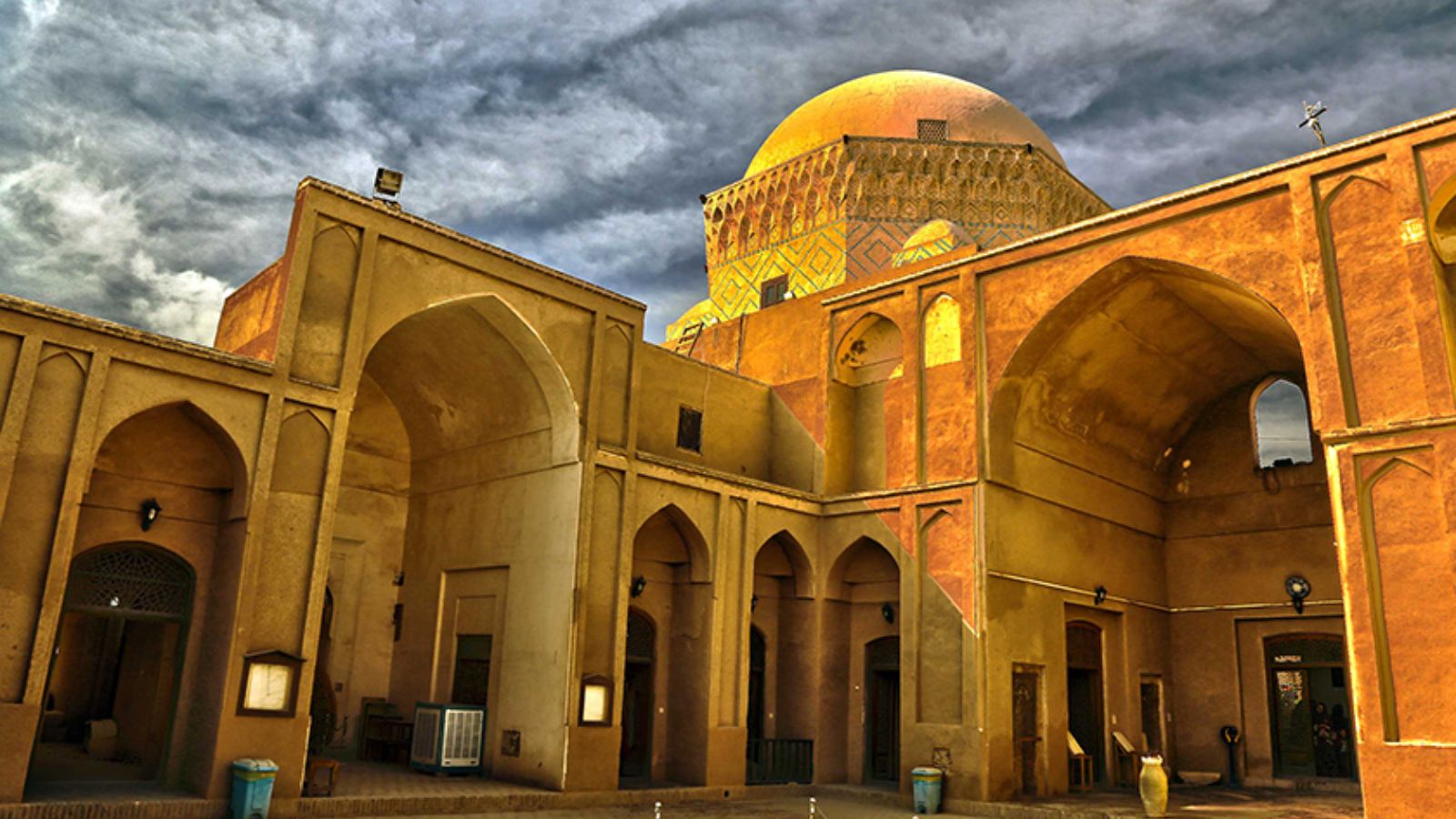
Code 57: Yazd - Alexander's Prison
Domed complex with museum & shops
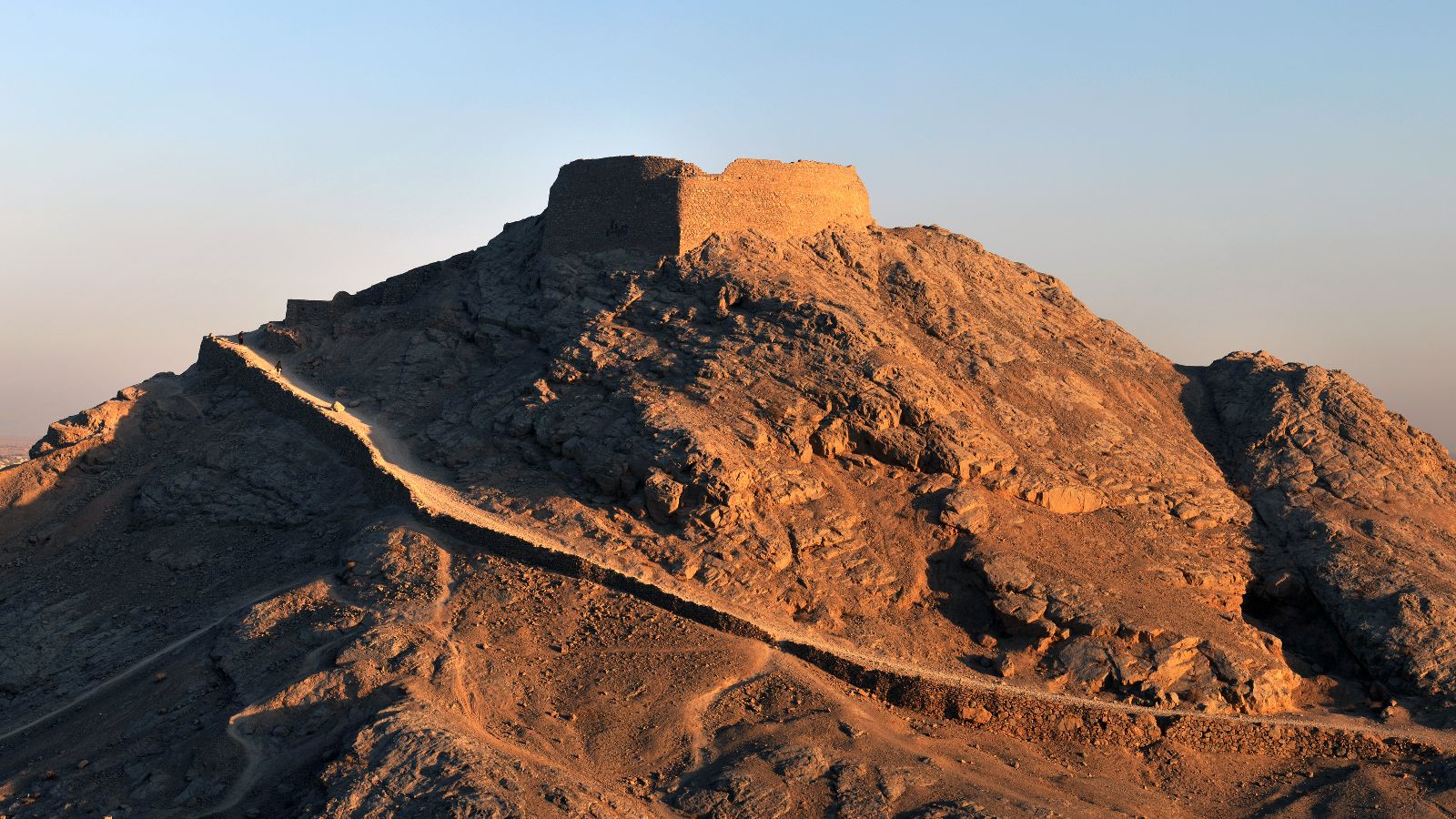
Code 58: Yazd - Zoroastrian Towers of Silence
First of all, let’s see what is a Dakhmeh or Towers of Silence? Basically, it is a cemetery for Zoroastrian’s people but with a slight difference. Based on Zoroastrian’s beliefs, human remaining is unclean. Also, they consider soil as a holy element, so no human shall be buried because the soil will be polluted. So, instead of putting the corpse into the soil (here it comes the scary part), they put them for predators and birds (usually vultures) to feed on them! Now you know why they built towers of silence in height.
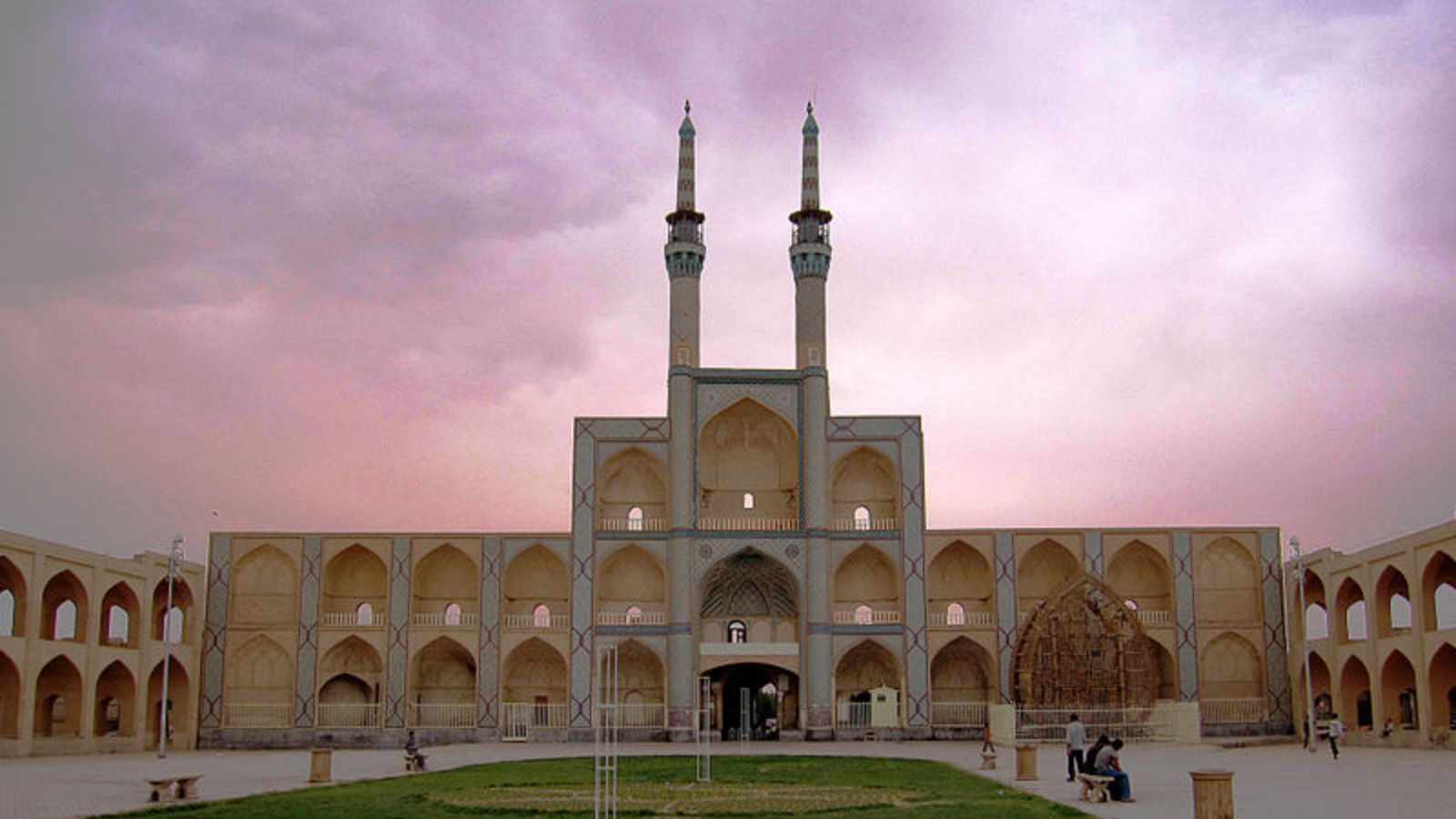
Code 59: Yazd - Amir Chakhmaq Mosque
The Amir Chakhmaq Mosque, also known as Dahouk mosque, is a historical mosque from the Timurid era in Yazd, in Iran. It was built on orders of Jalal ed-Din Amir Chakhmaq Shami, who was the governor of Yazd and a general of Shahrukh Mirza. The mosque was completed in 1438. From the viewpoint of aesthetics, dimension and importance, it is one of the most outstanding buildings in Yazd. The mosque is located south of Amir Chakhmaq Complex. There are inscriptions made of mosaic in Thuluth script of Mohammad al-Hakim on the eastern entrance. During the era of Fath Ali Shah, Hossein Attar added a part to its shabestan and restored some parts of the mosque.
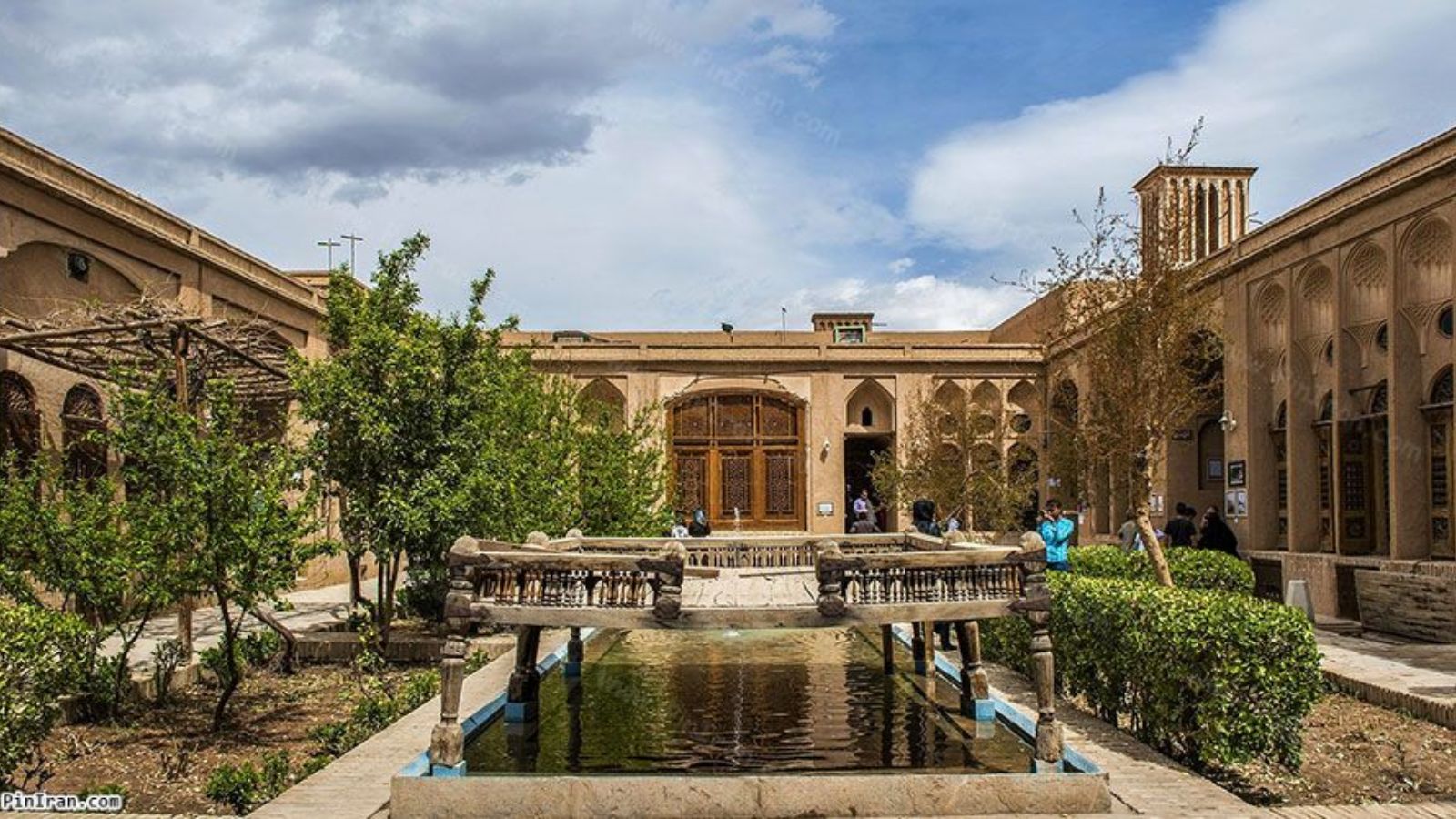
Code 60: Yazd - Lariha House
Architecture
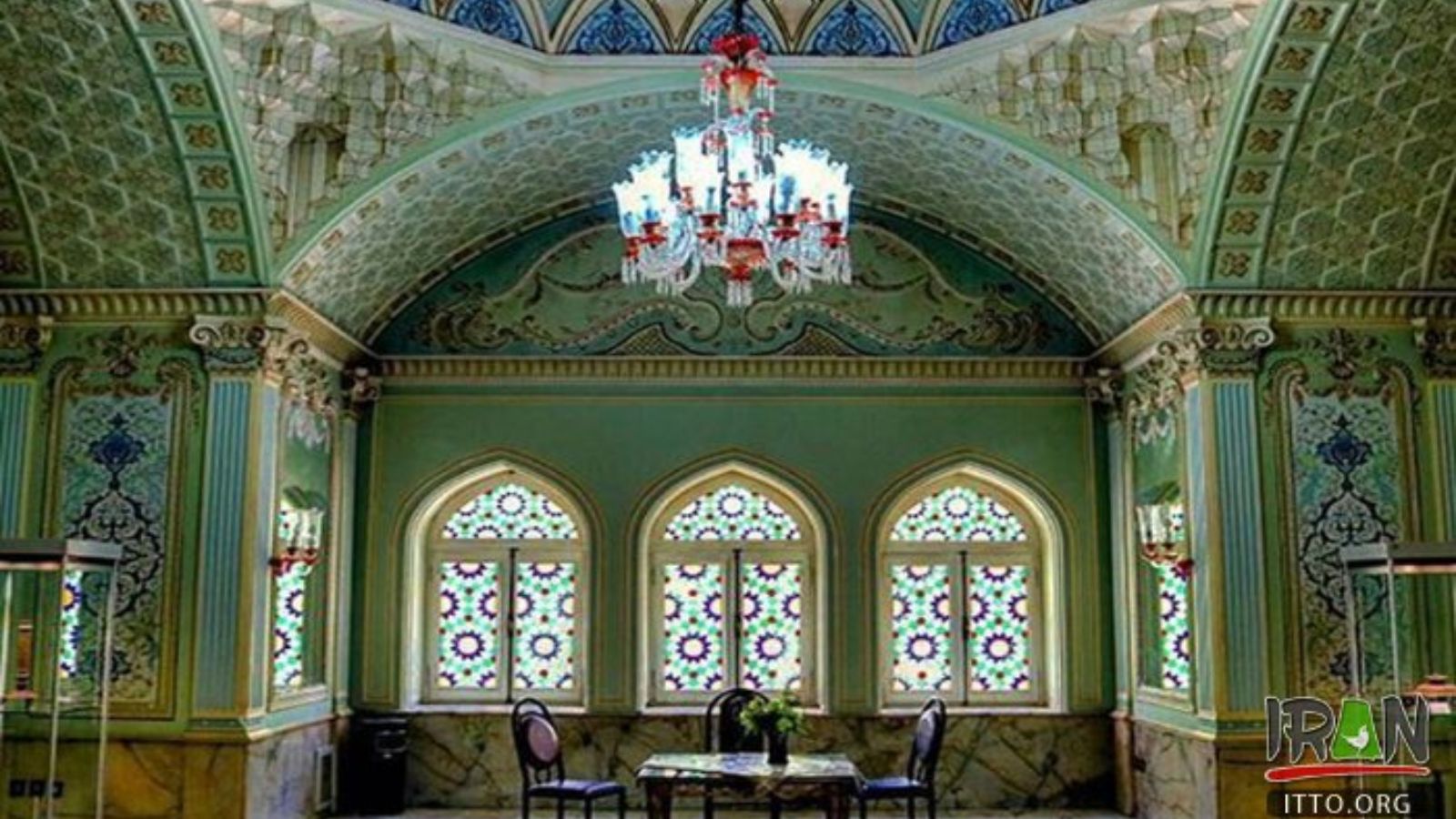
Code 61: Yazd - Museum of mirrors and lighting
Museum
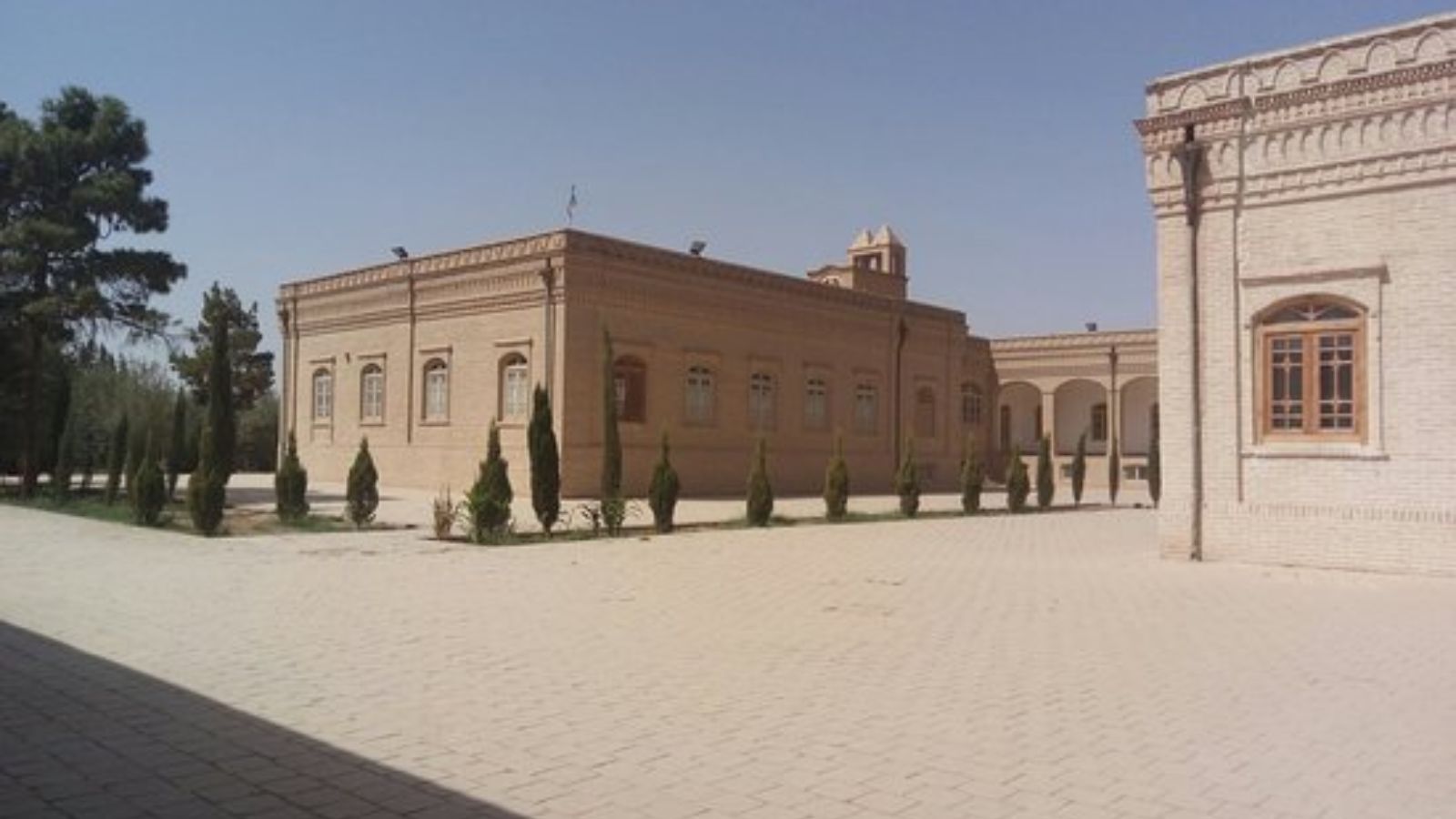
Code 62: Yazd - Zoroastrians History and Culture Museum
Your content goes here. Edit or remove this text inline or in the module Content settings. You can also style every aspect of this content in the module Design settings and even apply custom CSS to this text in the module Advanced settings.
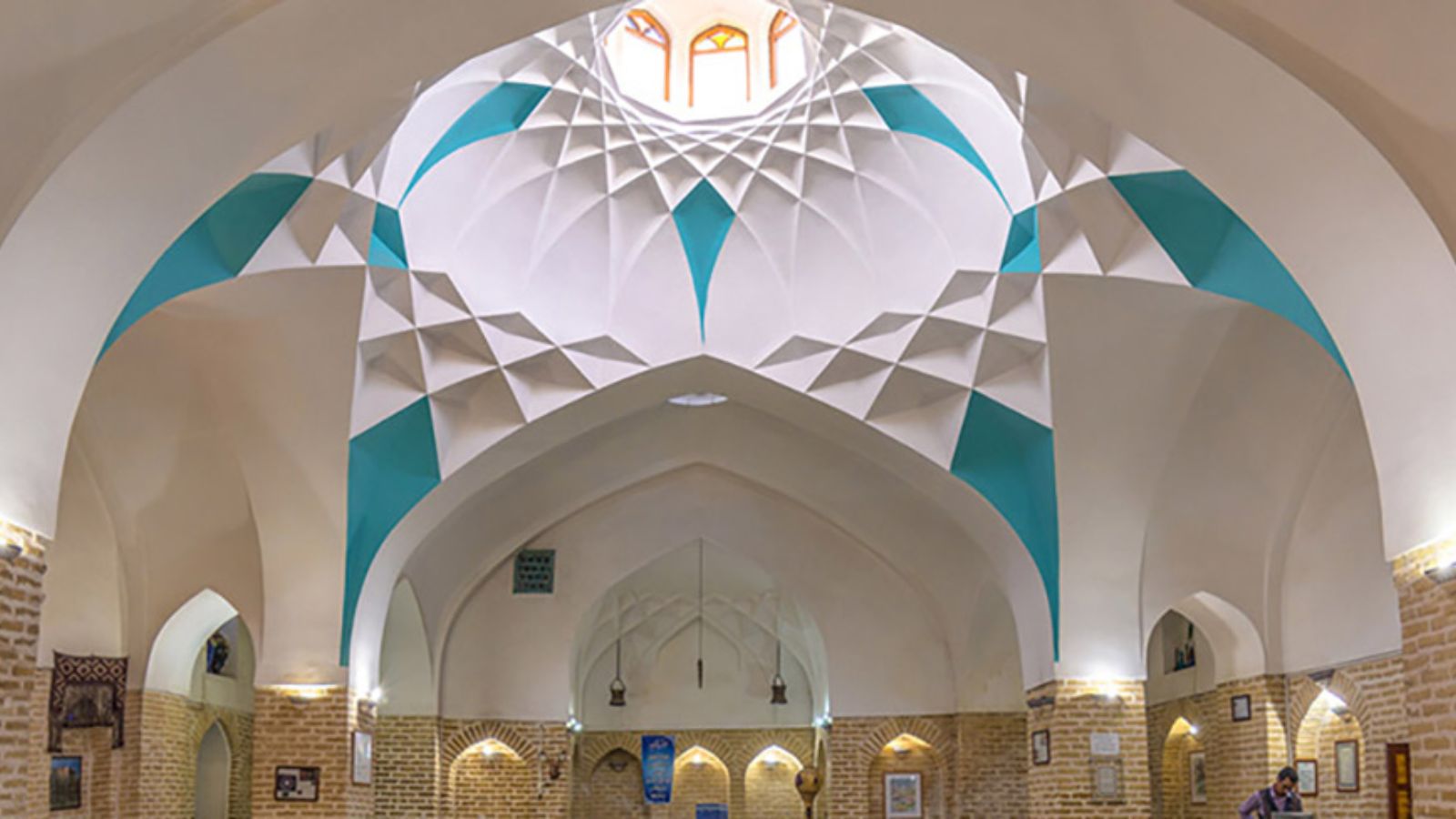
Code 63: Yazd - Khan bath
Historical place
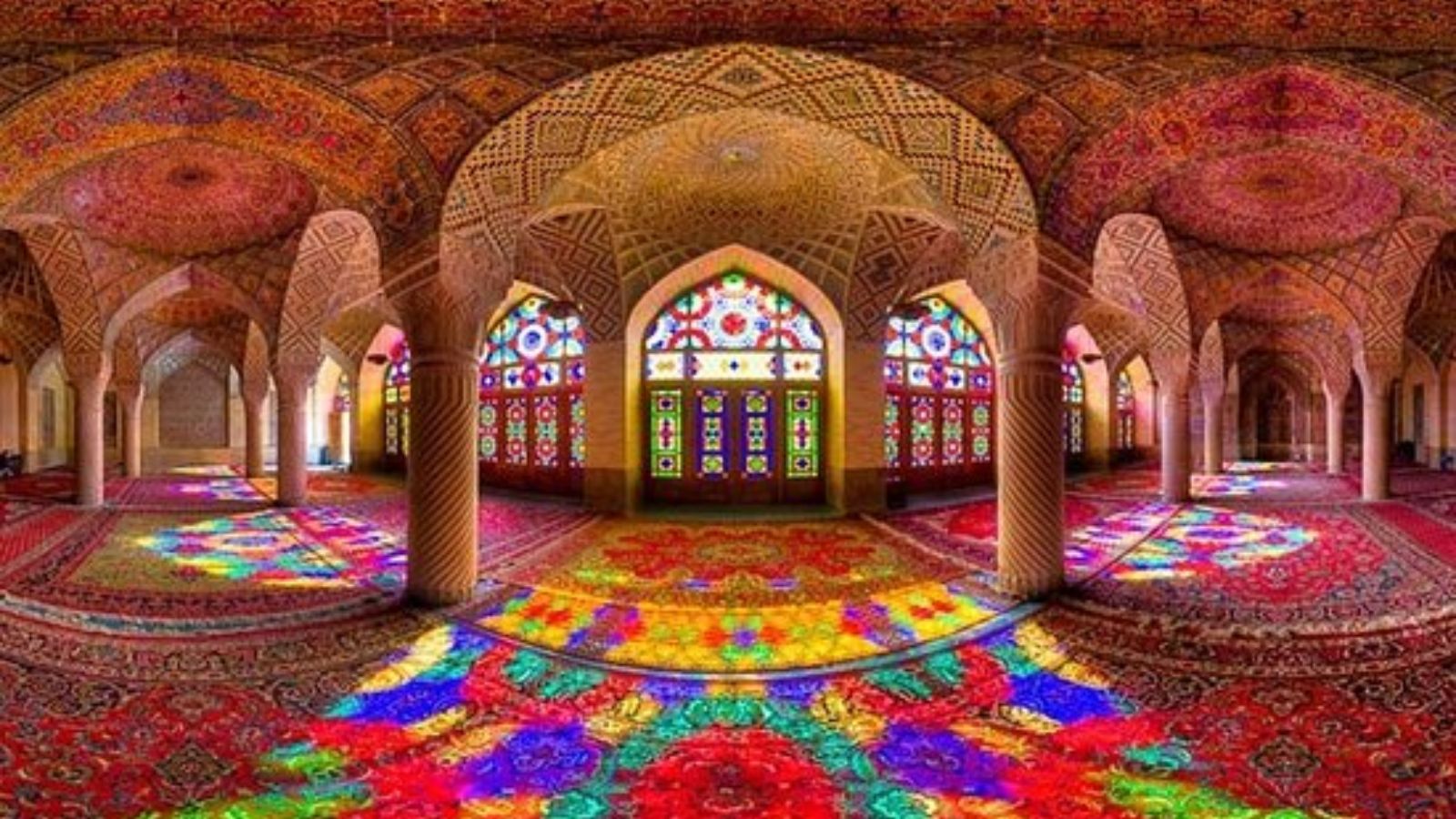
Code 64:Shiraz- Nasir-ol-molk Mosque
The Nasir al-Mulk Mosque, also known as the Pink Mosque, is a traditional mosque in Shiraz, Iran. It is located in Gawd-i Arabān quarter, near Shāh Chérāgh Mosque. It was built during Qajar dynasty rule of Iran. The mosque includes extensive coloured glass in its facade, and displays other traditional elements such as the Panj Kāse design. It is named in popular culture as the ‘Pink Mosque’, due to the usage of a considerable number of pink-colored tiles for its interior design
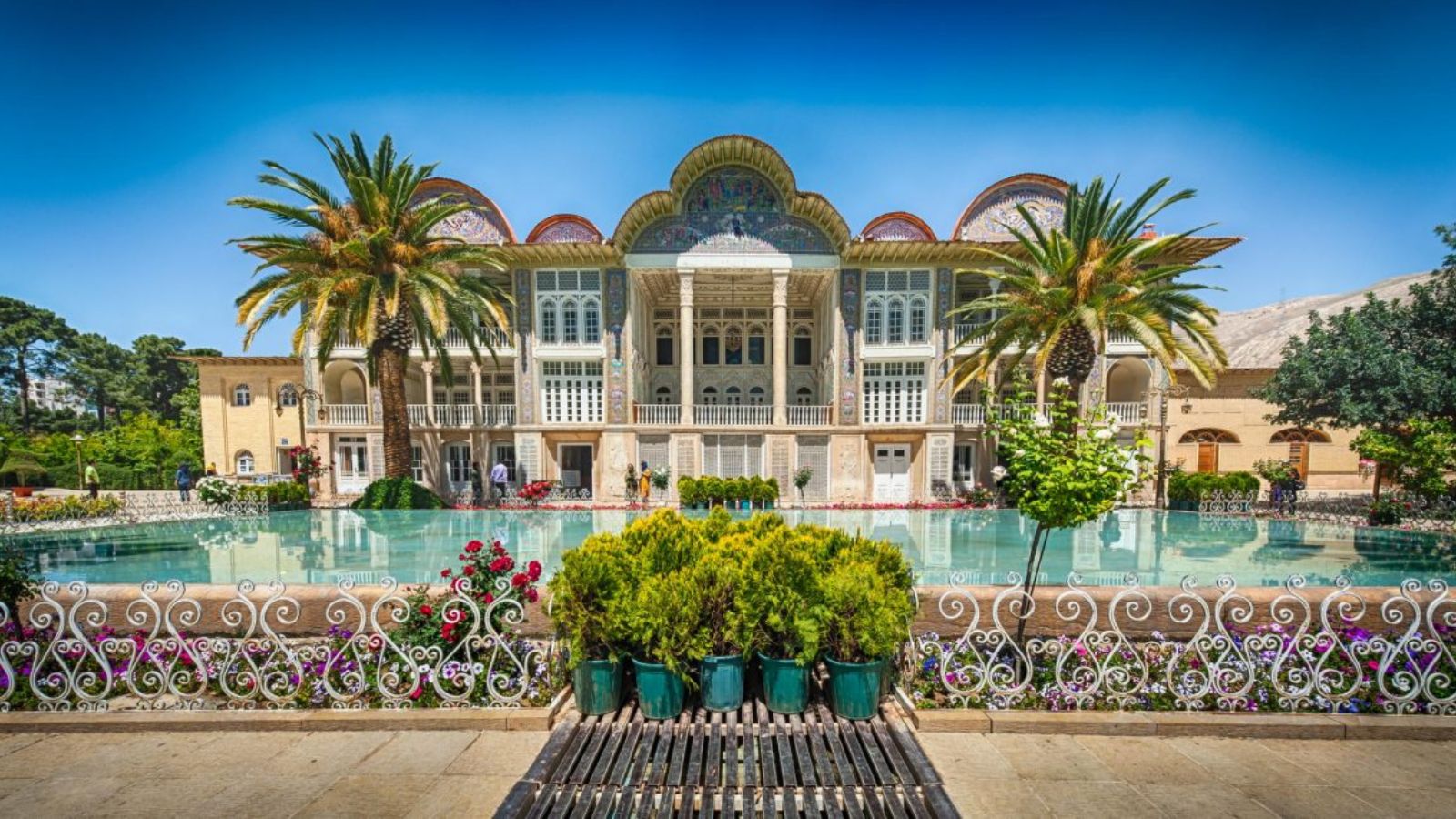
Code 65: Shiraz - Eram Garden
Eram Garden is a historic Persian garden in Shiraz, Iran. It belonged to the leaders of Qashqai tribe before being confiscated by the central government. The garden, and the building within it, are located at the northern shore of the Khoshk River in the Fars province.
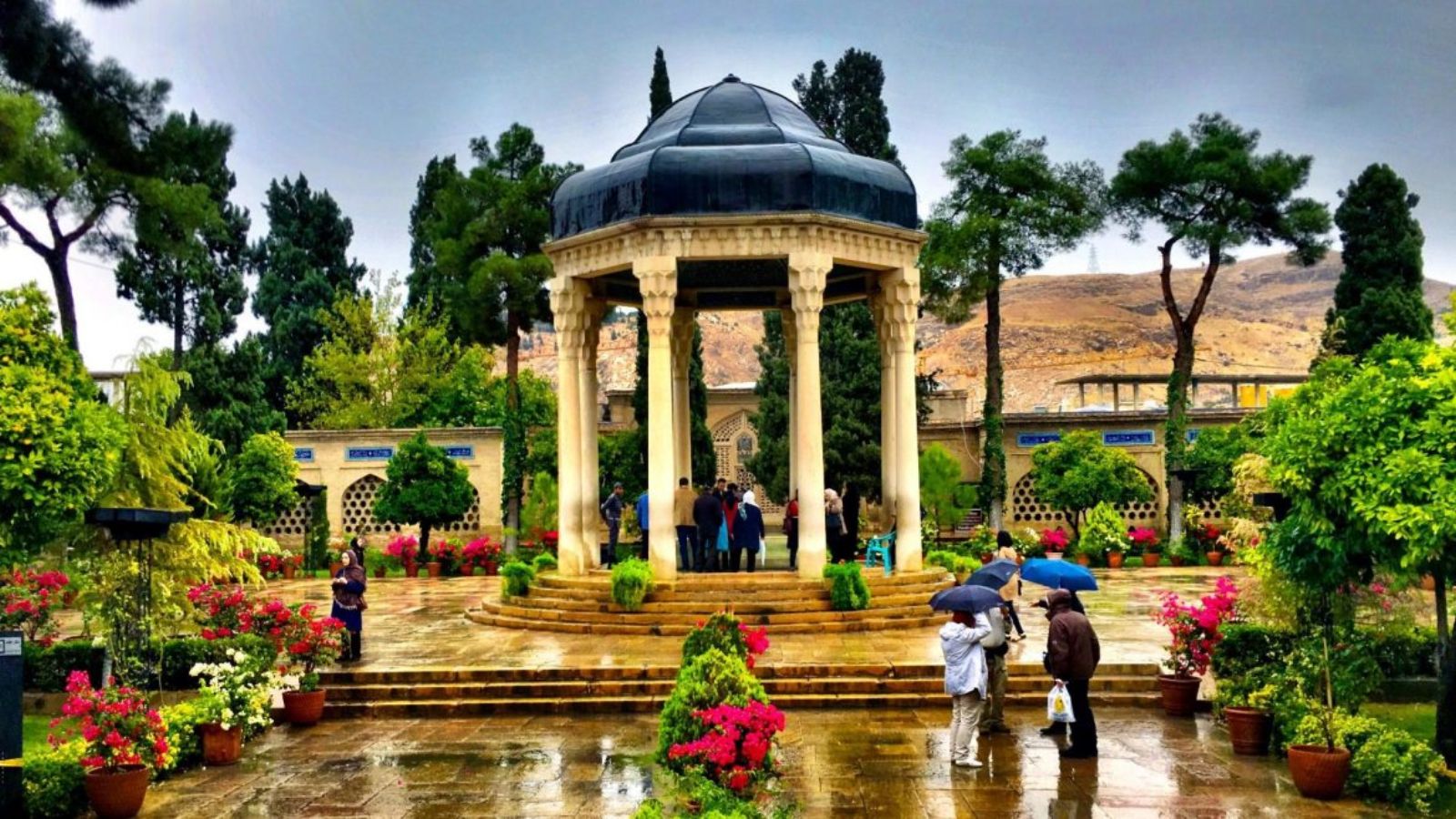
Code 66: Shiraz - Tomb of Hafez
The Tomb of Hafez and its associated memorial hall, the Hāfezieh, are two memorial structures erected in the northern edge of Shiraz, Iran, in memory of the celebrated Persian poet Hafez. The open pavilion structures are situated in the Musalla Gardens on the north bank of a seasonal river and house the marble tomb of Hafez. The present buildings, built in 1935 and designed by the French architect and archaeologist André Godard, are at the site of previous structures, the best-known of which was built in 1773. The tomb, its gardens, and the surrounding memorials to other great figures are a focus of tourism in Shiraz.
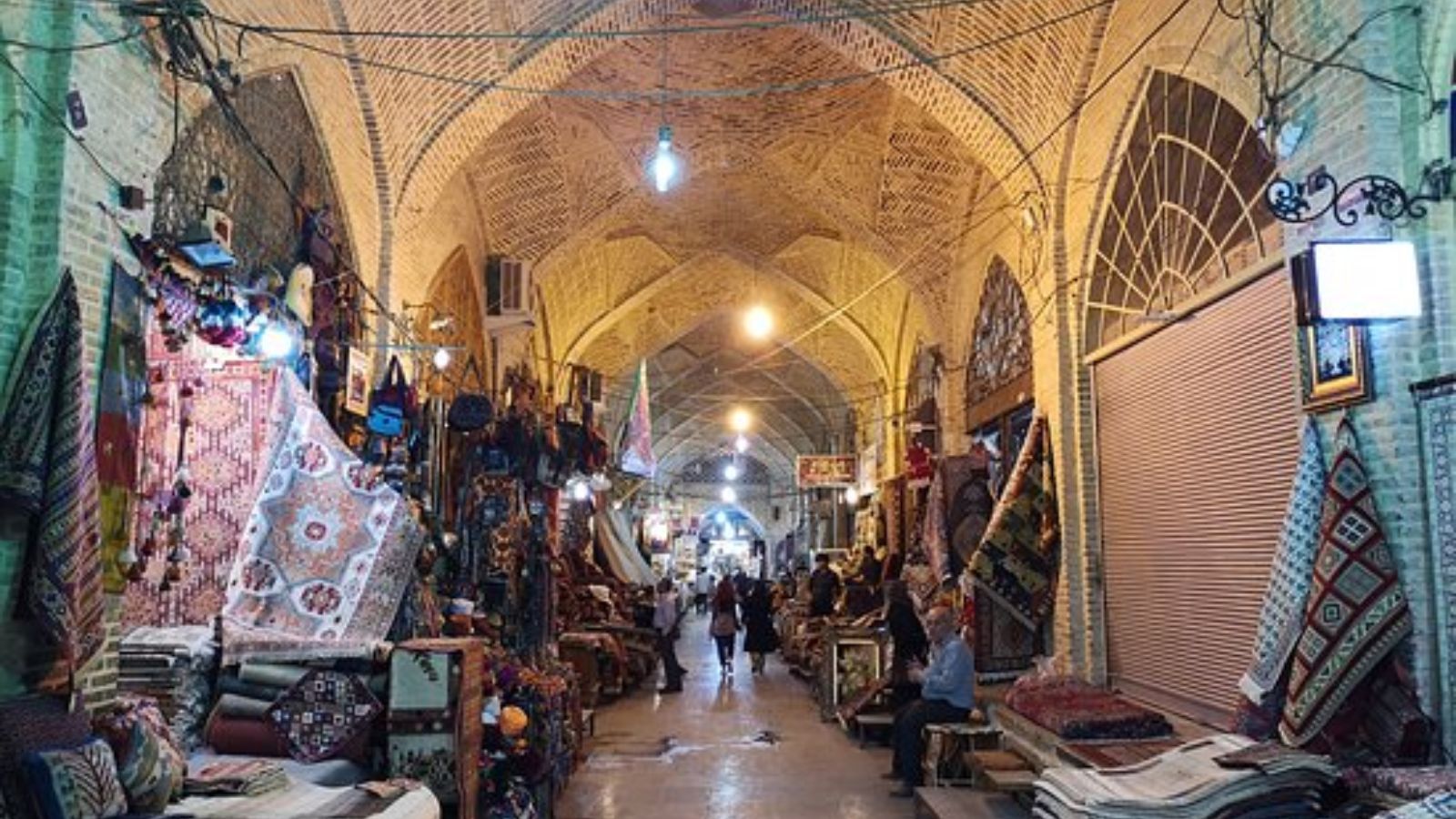
Code 67: Shiraz - Vakil Bazaar
Vakil Bazaar is the main bazaar of Shiraz, Iran, located in the historical center of the city. It is thought that the market originally was established by the Buwayhids in the 11th century AD, and was completed mainly by the Atabaks of Fars, and was renamed after Karim Khan Zand only in the 18th century. The bazaar has beautiful courtyards, caravansarais, bath houses, and old shops which are deemed among the best places in Shiraz to buy all kinds of Persian rugs, spices, copper handicrafts and antiques. Like other Middle Eastern bazaars, there are a few mosques and Imamzadehs constructed beside or behind the bazaar.
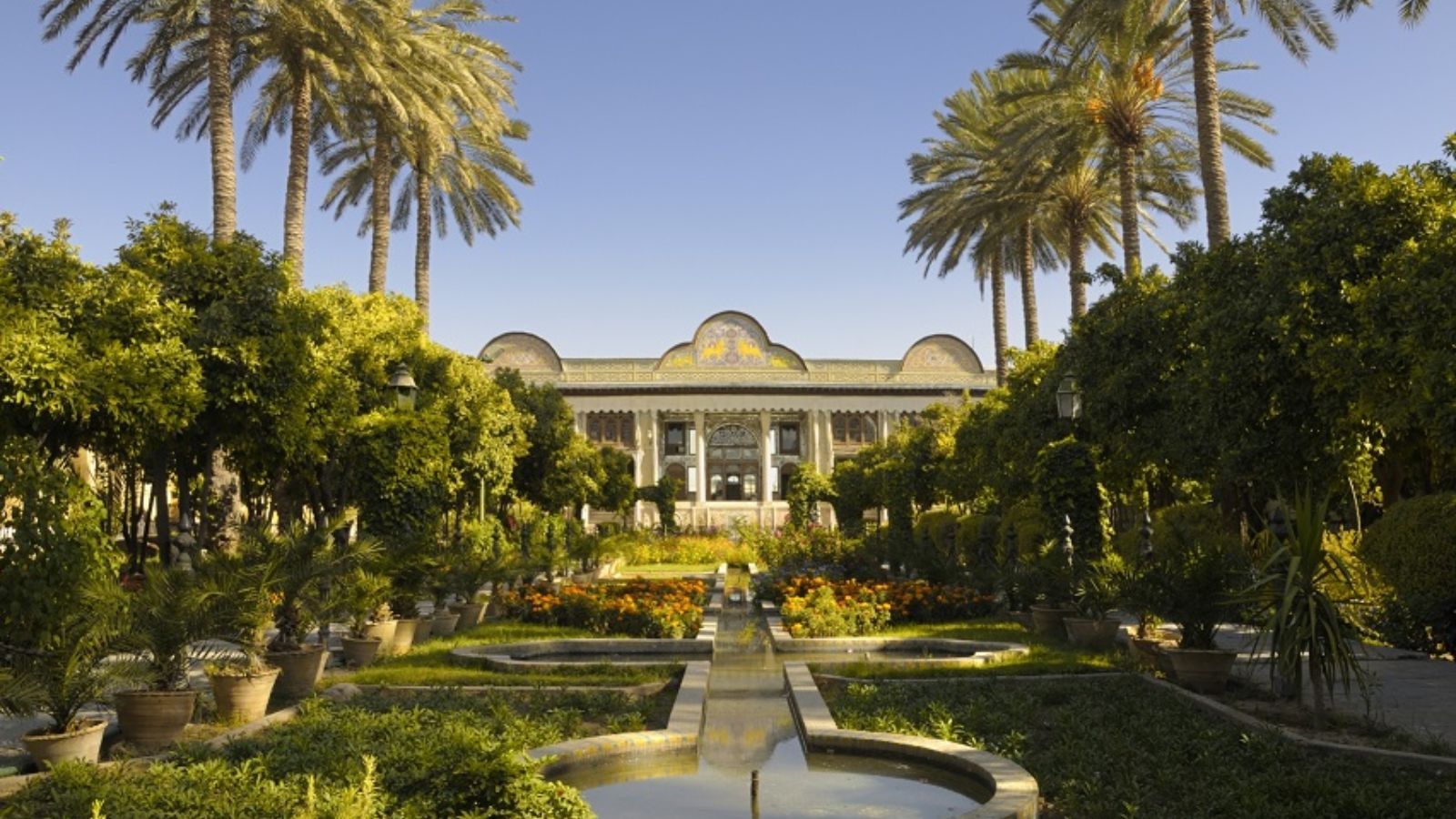
Code 68: Shiraz - Qavam House
Qavam House is a traditional and historical house in Shiraz, Iran. It is at walking distance from the Khan Madrassa. It was built between 1879 and 1886 by Mirza Ibrahim Khan. The Qavam family were merchants originally from Qazvin. But they soon became active in the government during the Zand dynasty, followed by the Qajar, and Pahlavi dynasty as well. The Qavam “Naranjestan” preserves the elegance and refinement enjoyed by the upper-class families during the 19th century. The paintings on the low ceilings of the house are inspired by Victorian era Europe. The mirrored porch was a focal point of the house, overlooking a small garden that was designed with fountains, date palms, and flowering plants. During the second Pahlavi era, the House became the headquarters of Pahlavi University’s Asia Institute, directed by Arthur Upham Pope and Richard Nelson Frye. Frye and his family also lived in the house for a while. The house today is a museum and is open to the public.
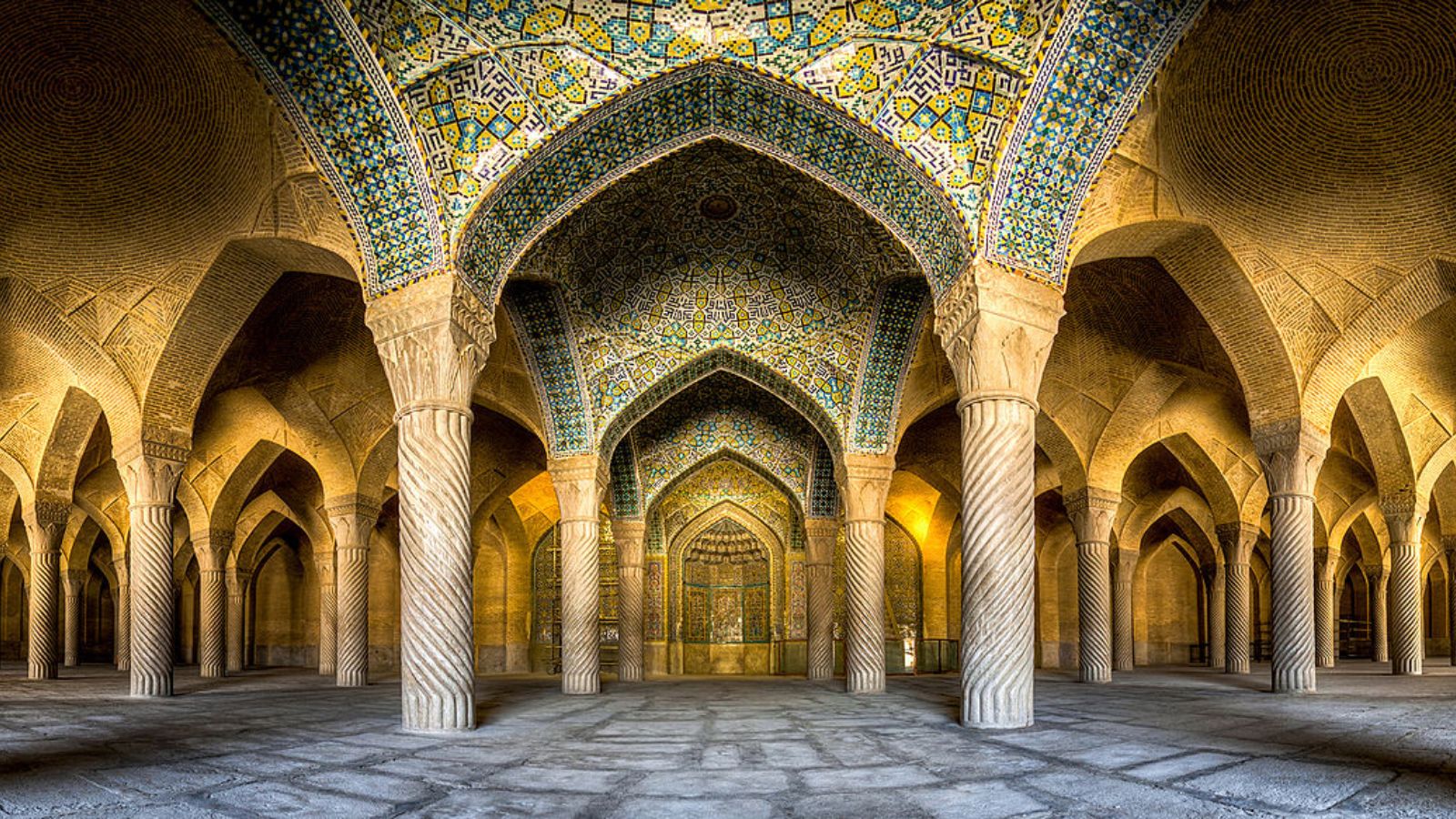
Code 69: Shiraz - Vakil Mosque
The Vakil Mosque is a mosque in Shiraz, southern Iran, situated to the west of the Vakil Bazaar next to its entrance. This mosque was built between 1751 and 1773, during the Zand period; however, it was restored in the 19th century during the Qajar period. Vakil means regent, which was the title used by Karim Khan, the founder of Zand Dynasty. Shiraz was the seat of Karim Khan’s government and he endowed many buildings, including this mosque.

Code 70: Shiraz -Tomb of Saadi
The Tomb of Saadi commonly known as Saadie, is a tomb and mausoleum dedicated to the Persian poet Saadi in the Iranian city of Shiraz. Saadi was buried at the end of his life at a Khanqah at the current location. In the 13th century a tomb built for Saadi by Shams al-Din Juvayni, the vizir of Abaqa Khan. In the 17th century, this tomb was destroyed. During the reign of Karim Khan was built a mausoleum of two floors of brick and plaster, flanked by two rooms. The current building was built between 1950 and 1952 to a design by the architect Mohsen Foroughi and is inspired by the Chehel Sotoun with a fusion of old and new architectural elements. Around the tomb on the walls are seven verses of Saadi’s poems.
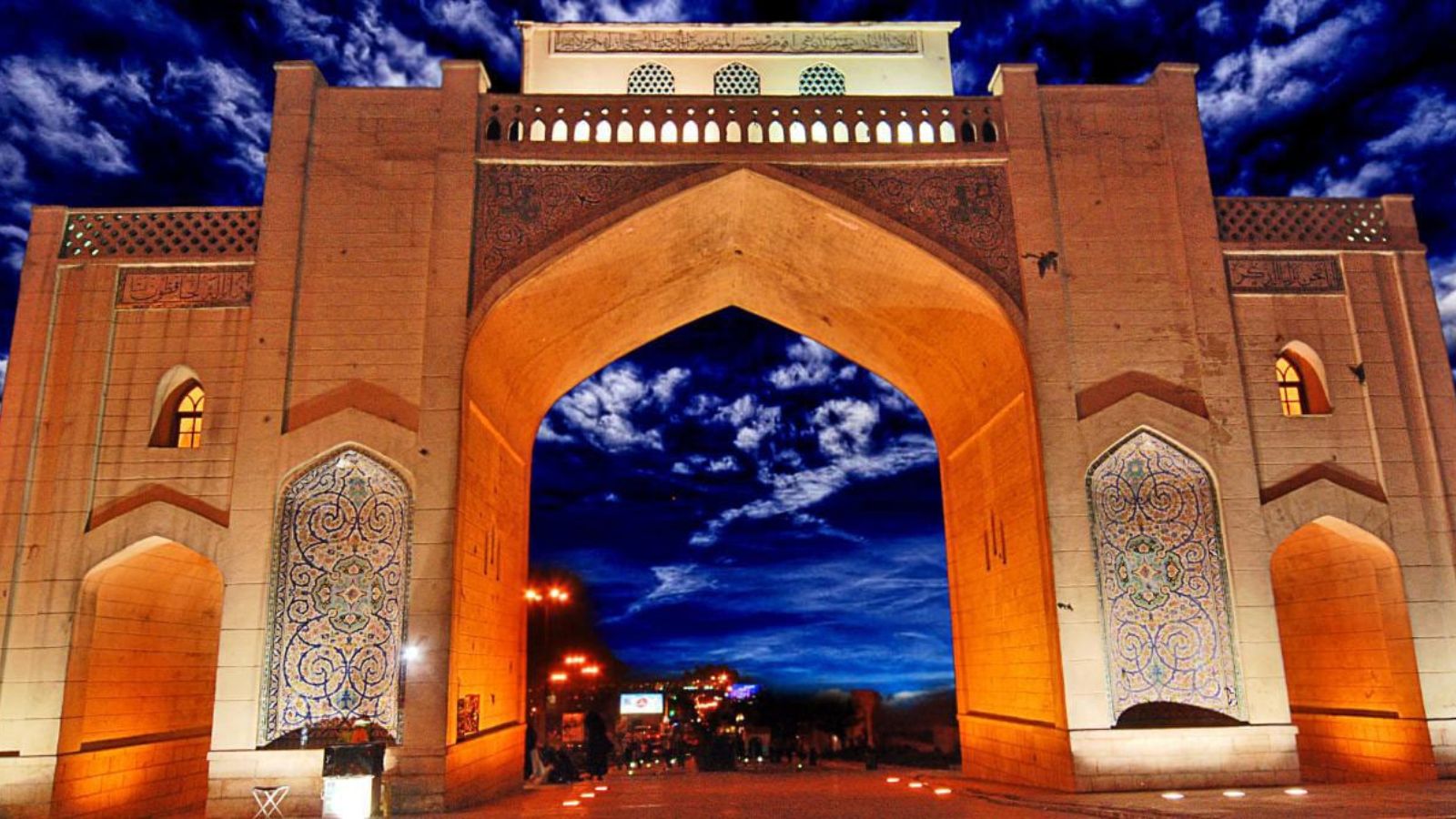
Code 71: Shiraz - Qur'an Gate
Qur’an Gate or Shiraz Gate is a historic gate in the north of Shiraz, Iran. It is located at the northeastern entrance of the city, on the way to Marvdasht and Isfahan, between Baba Kouhi and Chehel Maqam Mountains near Allahu Akbar gorge.
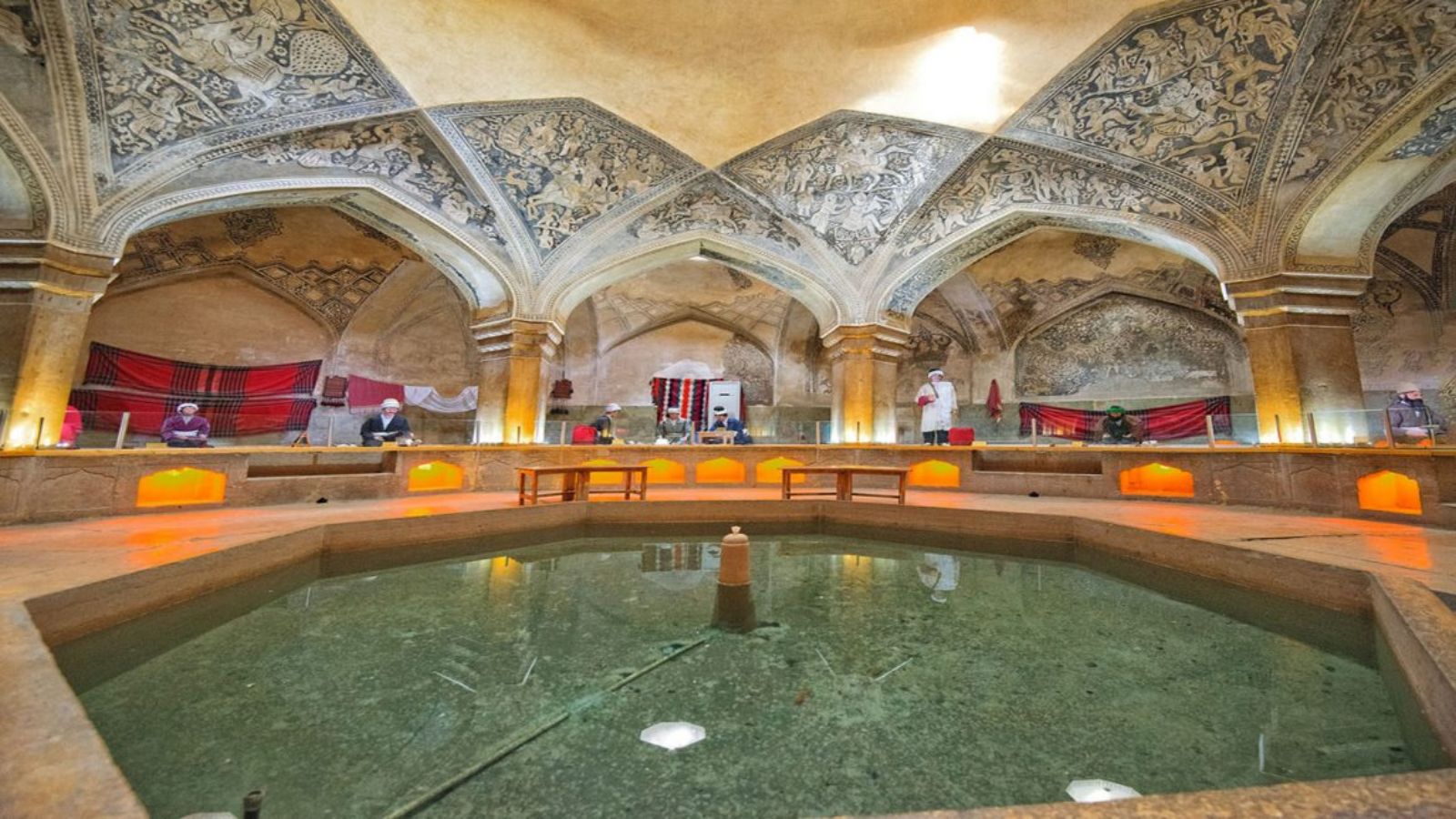
Code 72: Shiraz - Vakil Bath
Vakil Bath is an old public bath in Shiraz, Iran. It was a part of the royal district constructed during Karim Khan Zand’s reign, which includes Arg of Karim Khan, Vakil Bazaar, Vakil Mosque and many administrative buildings. The monument is inscribed with the number 917 on the list of national works of Iran.
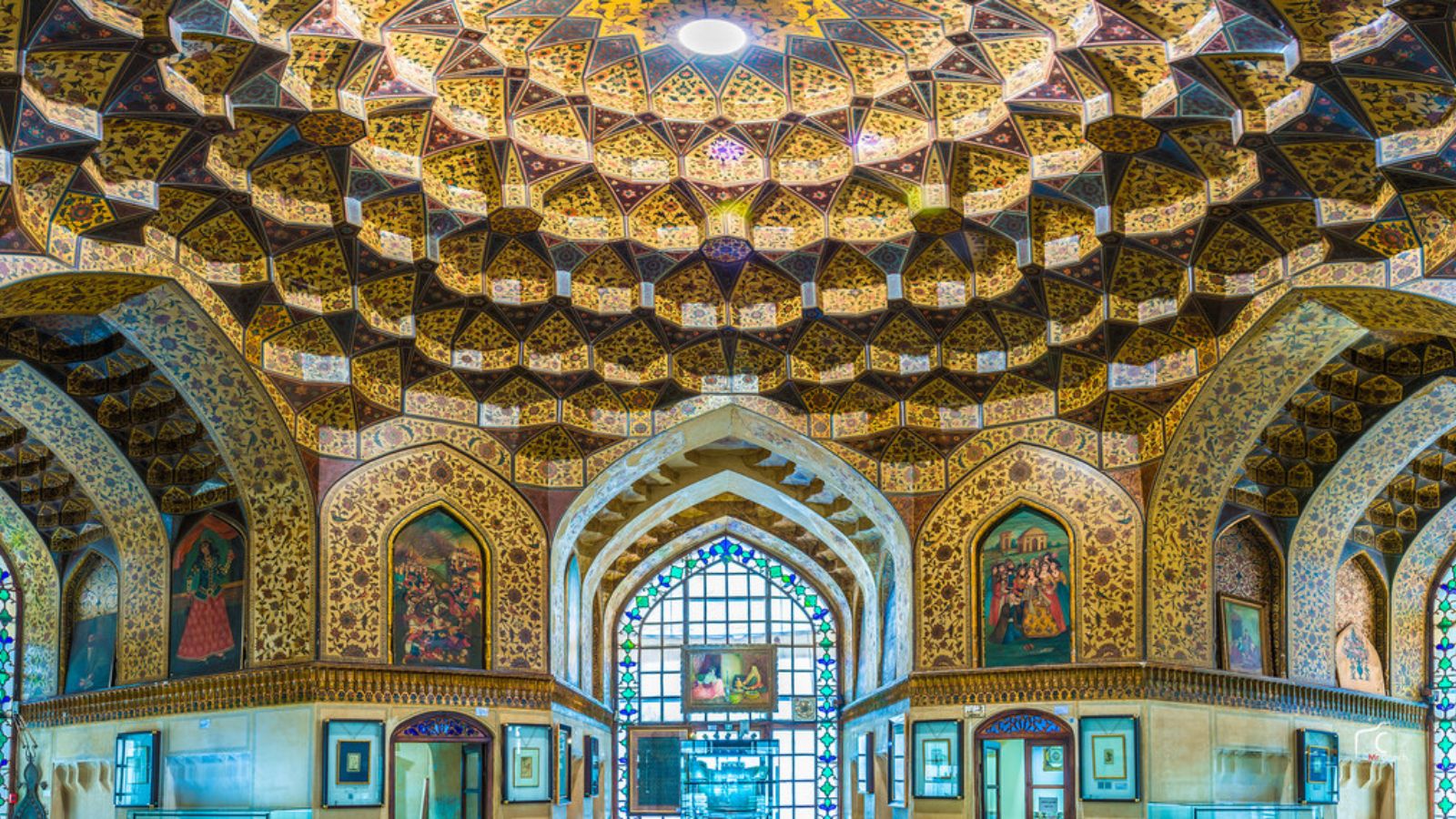
Code 73: Shiraz - Pars Museum
The Pars Museum is a museum in Shiraz, Fars Province, southern Iran. Founded in 1936 under Reza Shah Pahlavi, it is located in Nazar Garden. The octagonal building was the place in which royal guests were hosted during the Zand dynasty of Iran. It was also used for holding official ceremonies. It is also the burial place of Karim Khan Zand.
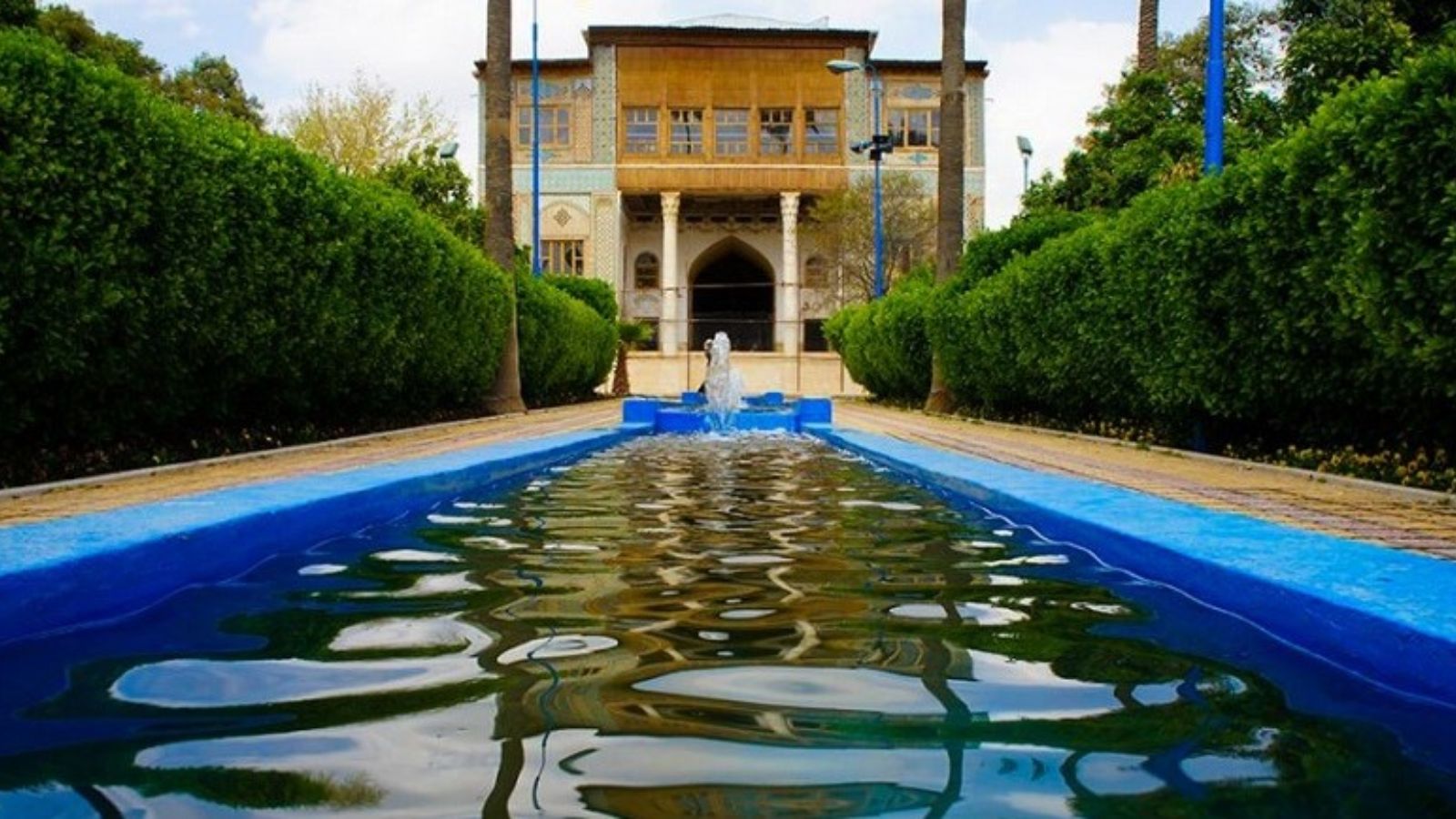
Code 74: Shiraz - Delgosha Garden
Delgosha Garden is one of the historical gardens in Shiraz, Iran near Tomb of Sa’di and it belongs to the pre-Islamic era of the Sassanian Empire. In Safavid dynasty, Delgosha Garden was one of the most famous gardens in Shiraz. Some of the buildings in this garden were constructed in Qajar dynasty. Most of the trees in this 7.5 hectare garden are citrus such as Orange and sour orange. The main building which has three stories with two entrances in two sides and a porch in the middle floor with a view of pool is a sign of glorious days. The Sa’di’s Tomb Canal is passing through this garden.
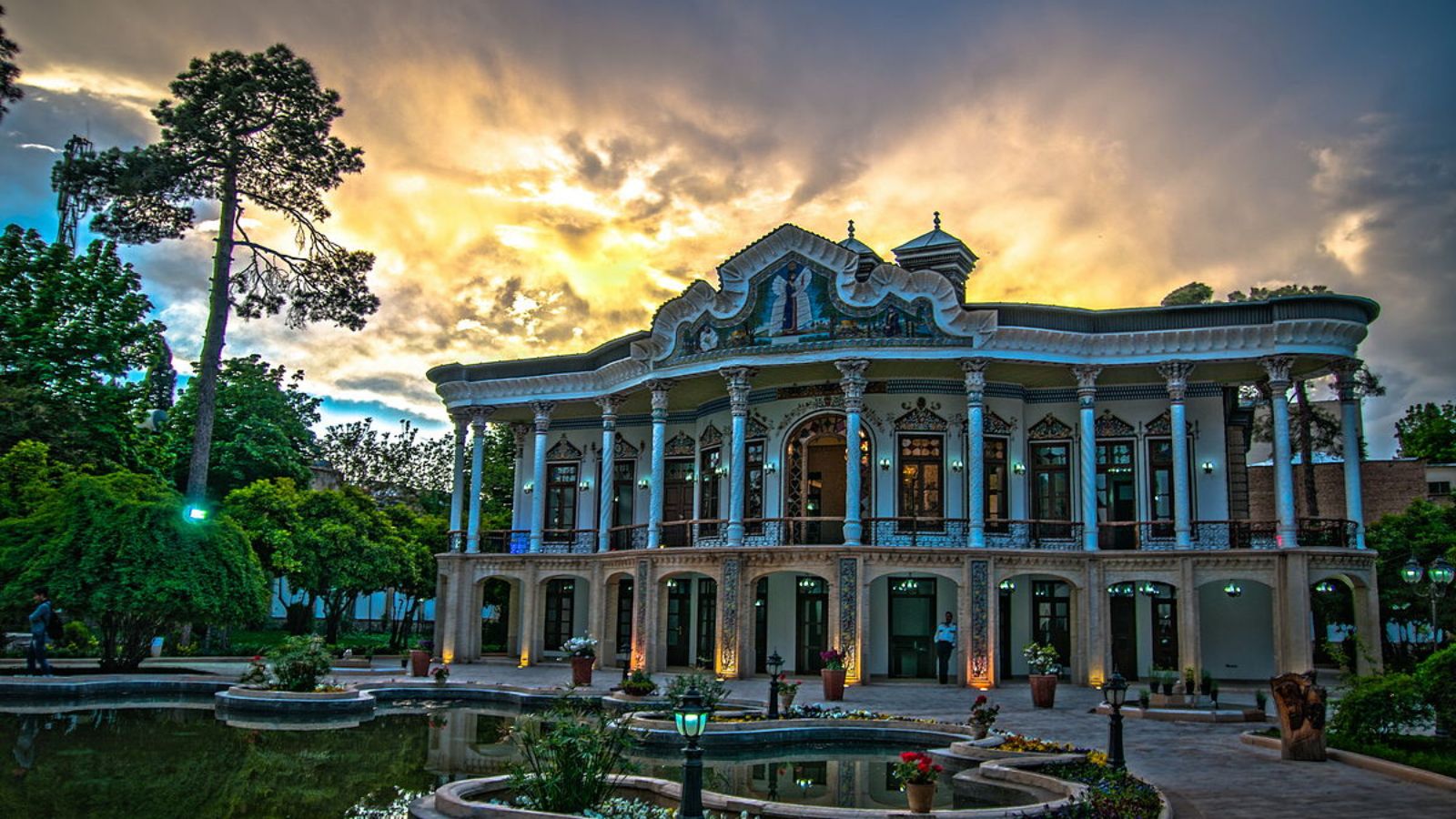
Code 75: Shiraz - Shapouri House
Shapouri House or Shapouri Pavilion and Garden is an early 20th-century Persian building and garden in the city of Shiraz, Iran. It has 840 square metres of underpinning and 4635 square metres of garden area. This building is in the old central region of Shiraz, known as Anvari. This mansion was registered as a national building in 2000 with registration number 2781. Shapouri mansion was designed by Abolghasem Mohandesi and built between 1930 and 1935; the owner was Abdolsaheb Shapuori. This building is unique and very innovative. The historical house of Shapouri belongs to the early Pahlavi dynasty in Persia, c. 1925. This nice house is located in city centre of Shiraz and is recorded as an Iranian national monument.
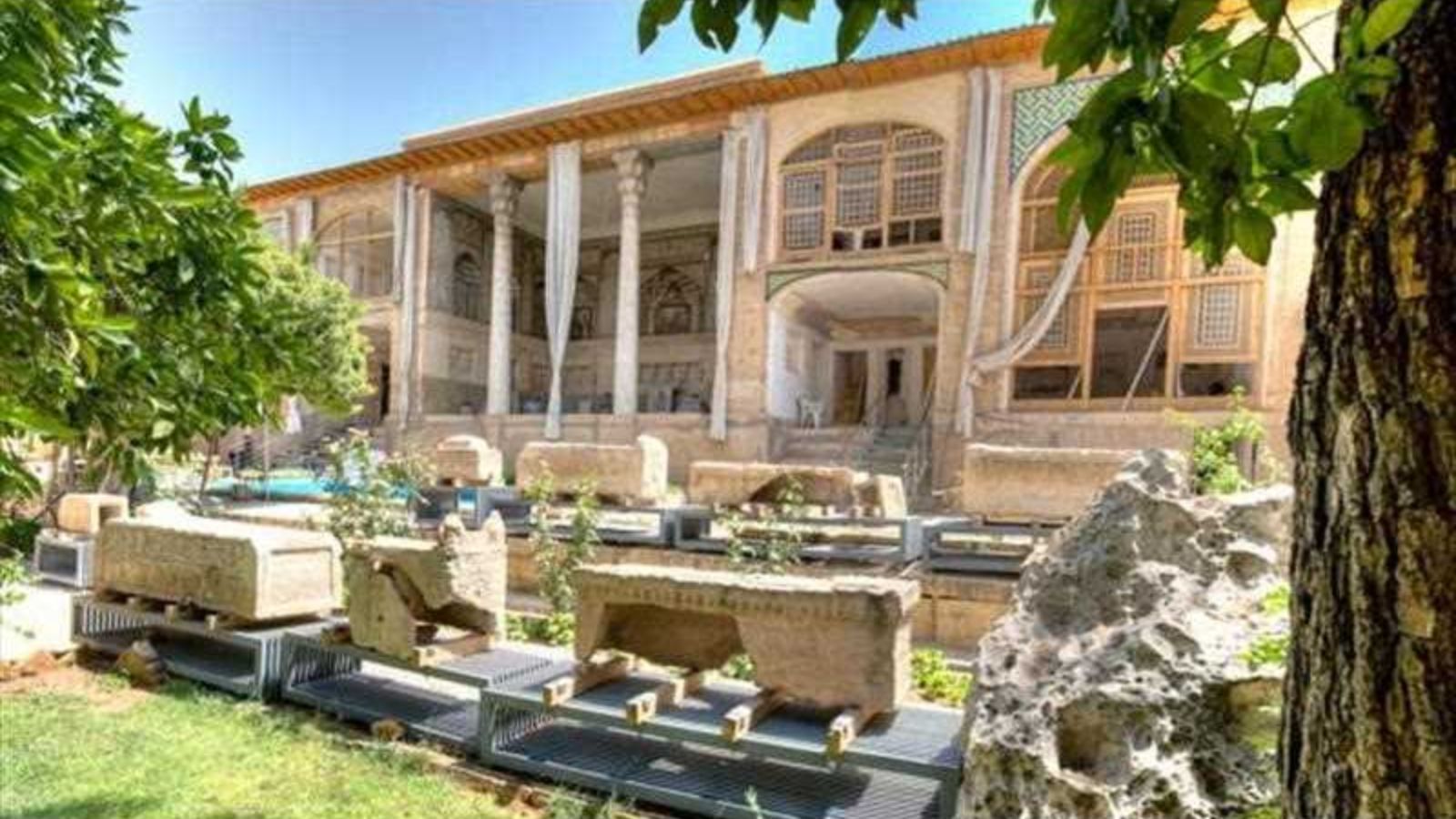
Code 76: Shiraz - Haft Tanan Museum
Museum and tomb
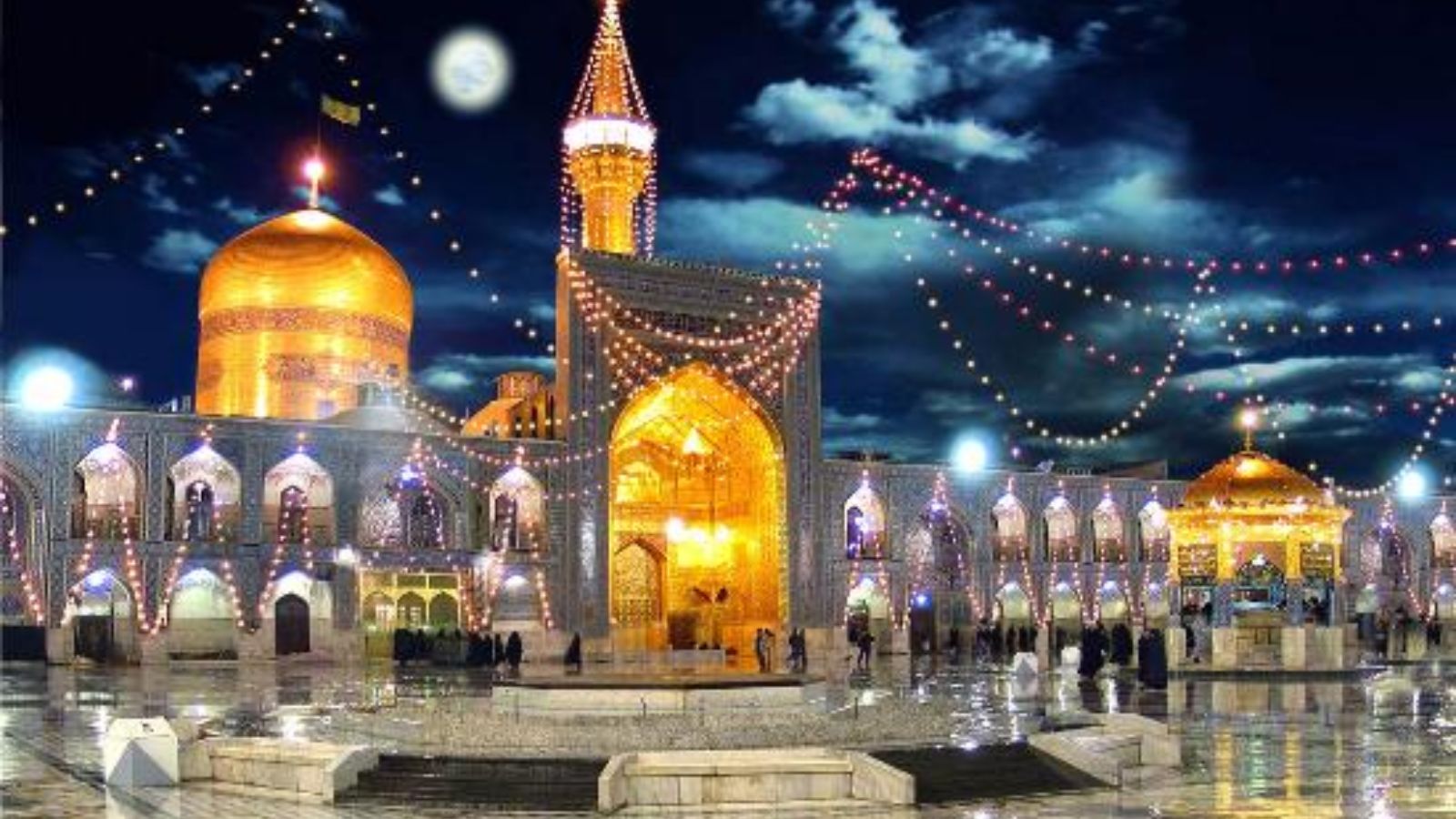
Code 77: Mashhad- Imam Reza shrine
The Imam Reza shrine in Mashhad, Iran is a complex which contains the mausoleum of Imam Reza, the eighth Imam of Twelver Shiites. It is the largest mosque in the world by area. Also contained within the complex are the Goharshad Mosque, a museum, a library, four seminaries, a cemetery, the Razavi University of Islamic Sciences, a dining hall for pilgrims, vast prayer halls, and other buildings. The complex is one of the tourism centers in Iran and has been described as “the heart of the Shia Iran” with 25 million Iranian and non-Iranian Shias visiting the shrine each year, according to a 2007 estimate. The complex is managed by Astan Quds Razavi Foundation currently headed by a prominent Iranian cleric, Ahmad Marvi. The shrine itself covers an area of 267,079m² while the seven courtyards which surround it cover an area of 331,578m² – totaling 598,657 m². Every year the ceremony of Dust Clearing is celebrated in the Imam Reza shrine.

Code 78: Mashad - Goharshad Mosque
Goharshad Mosque is a grand congregational mosque built during the Timurid period in Mashhad, Razavi Khorasan Province, Iran, which now serves as one of the prayer halls within the Imam Reza shrine complex.
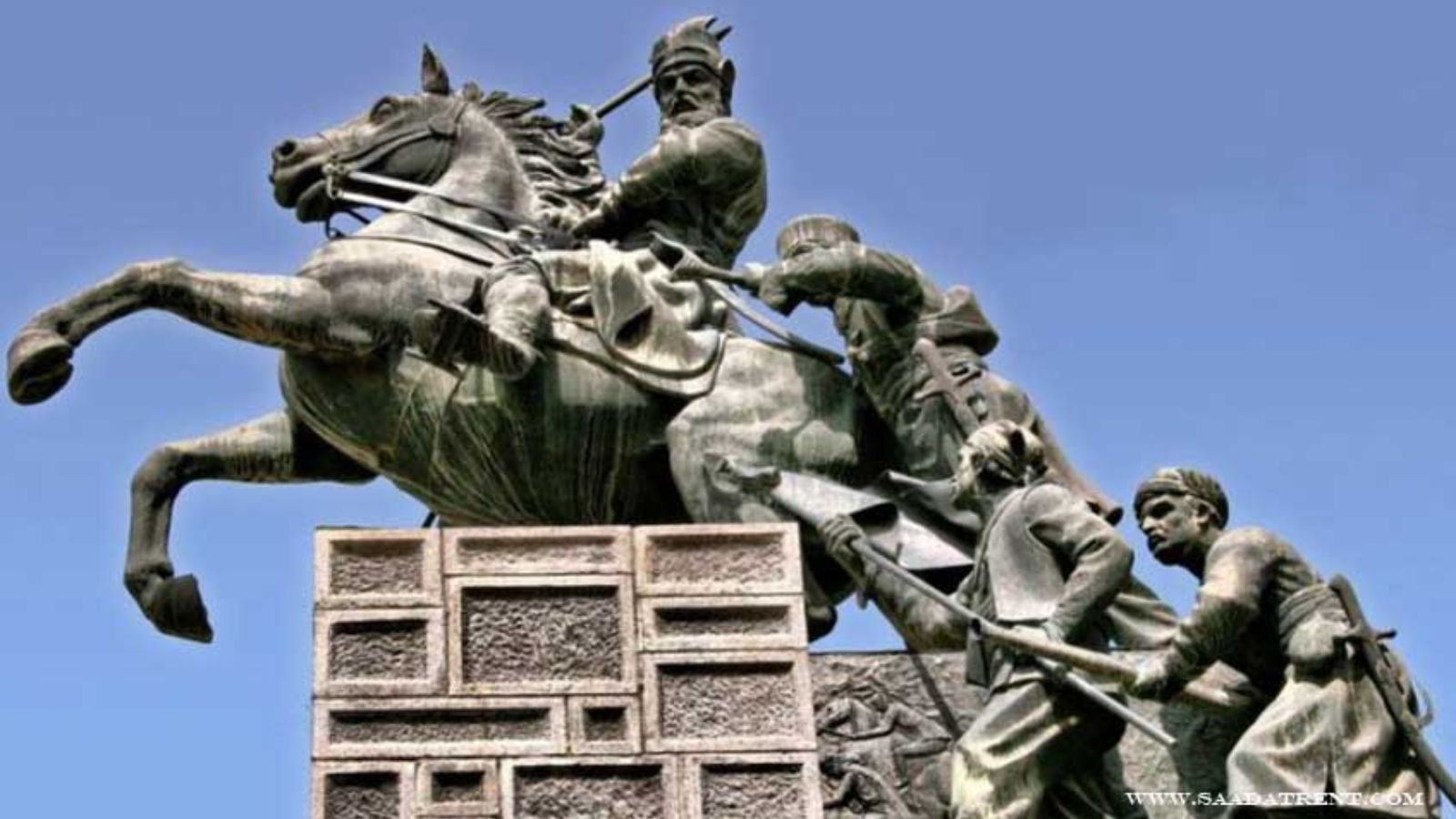
Code 79: Mashhad- Tomb of Nader Shah
Tomb of Nader Shah is a building in Mashhad designed by Hooshang Seyhoun.
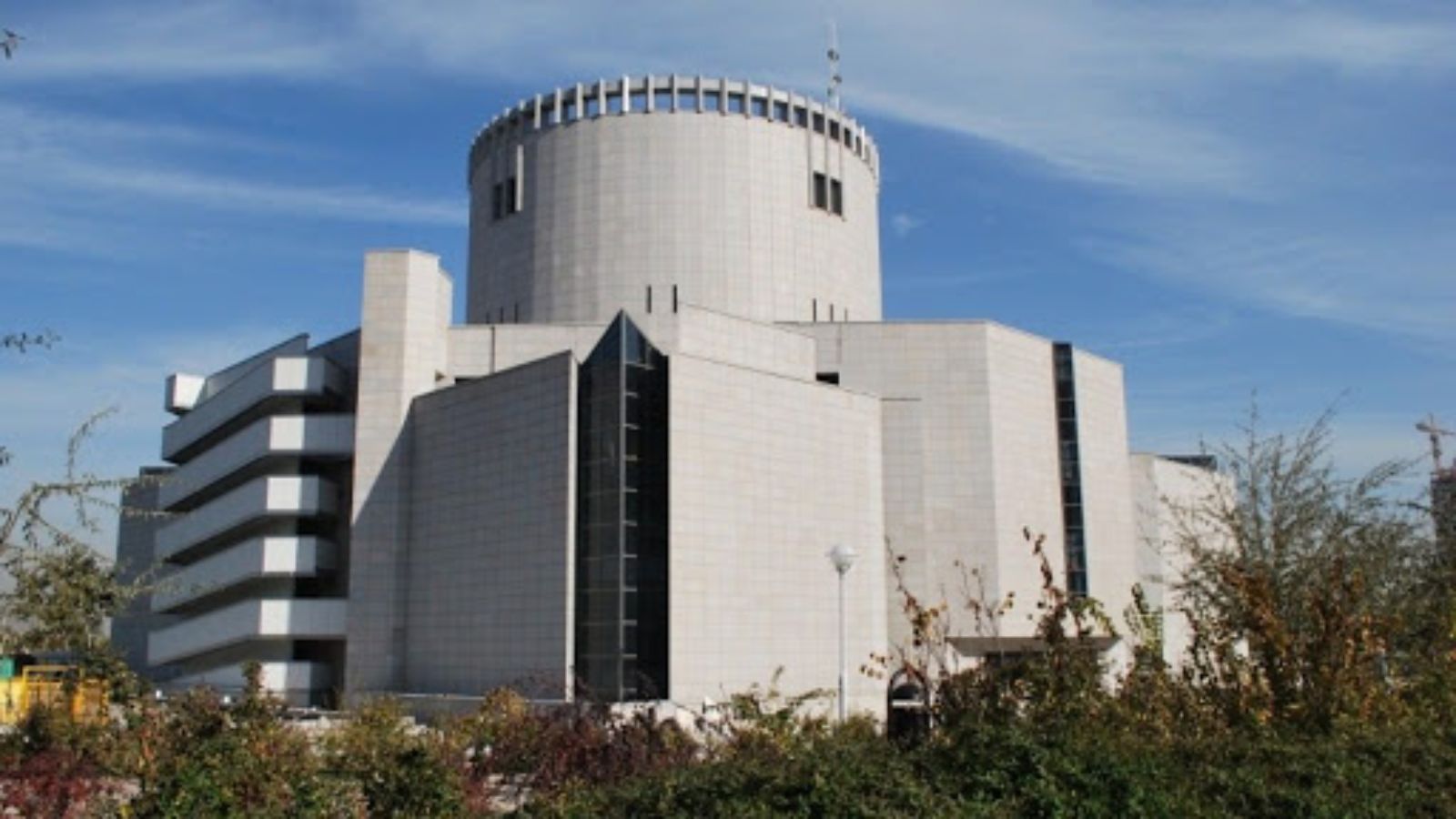
Code 80: Mashhad- Great Museum of Khorasan
Museum, natural history, and history
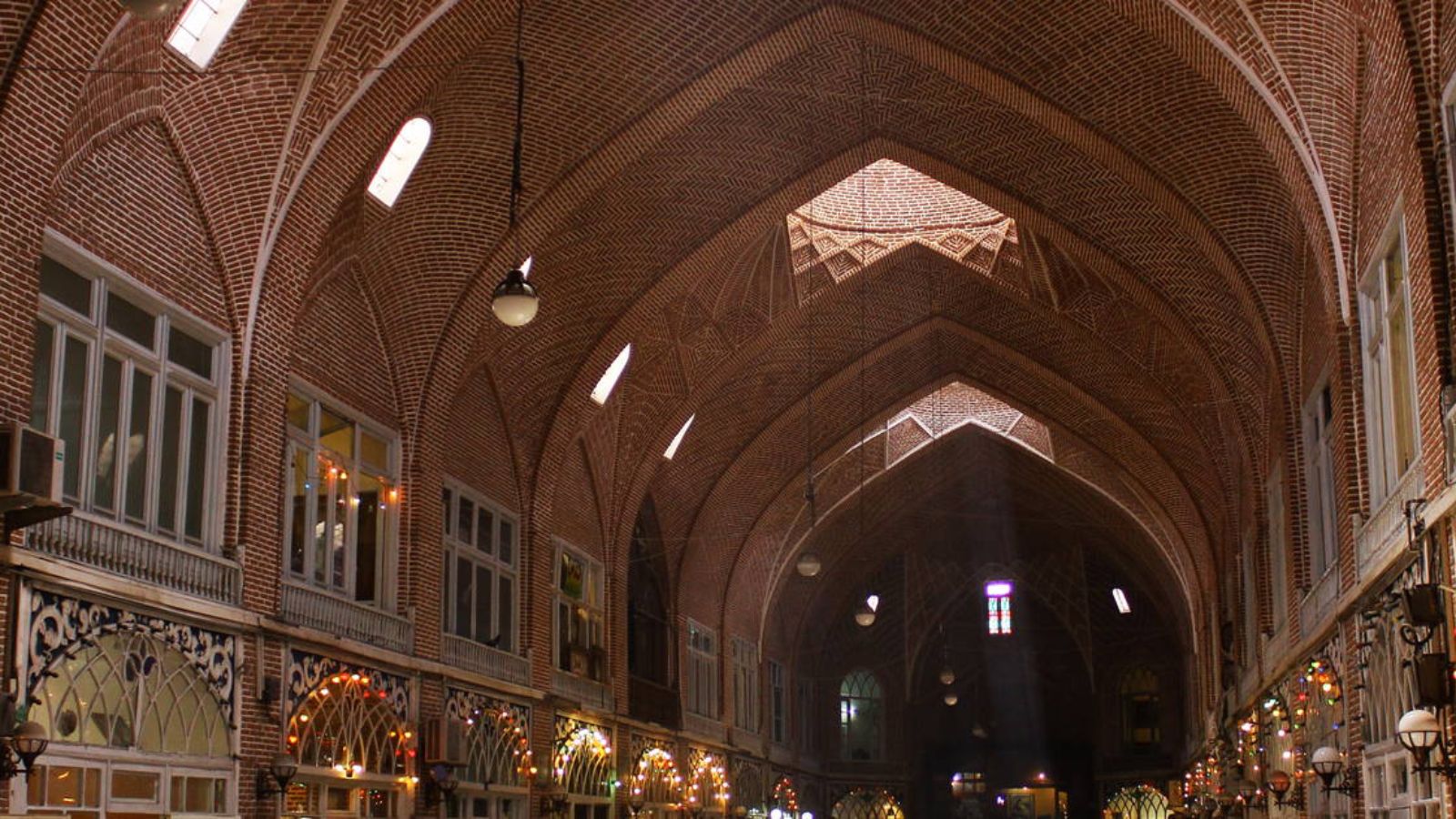
Code 81: Tabriz - Bazaar of Tabriz
The Bazaar of Tabriz is a historical market situated in the city center of Tabriz, Iran. It is one of the oldest bazaars in the Middle East and the largest covered bazaar in the world. It is one of Iran’s UNESCO World Heritage Sites.
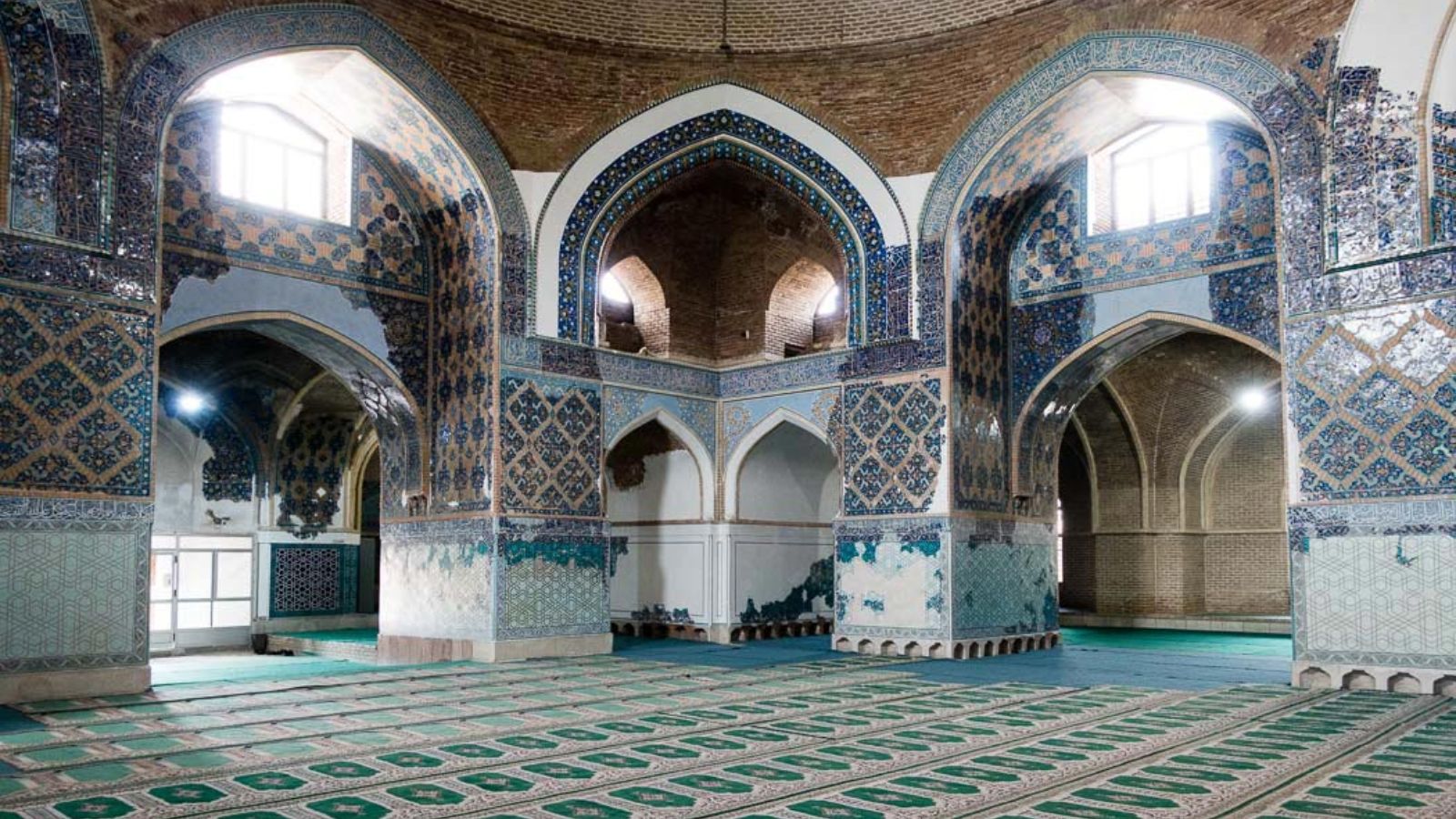
Code 82: Tabriz - Blue Mosque
The Blue Mosque is a historic mosque in Tabriz, Iran. The mosque and some other public buildings were constructed in 1465 upon the order of Jahan Shah, the ruler of Kara Koyunlu. The mosque was severely damaged in an earthquake in 1780, leaving only the iwan. Reconstruction began in 1973 by Reza Memaran Benam under the supervision of Iranian Ministry of Culture. However, it is still incomplete
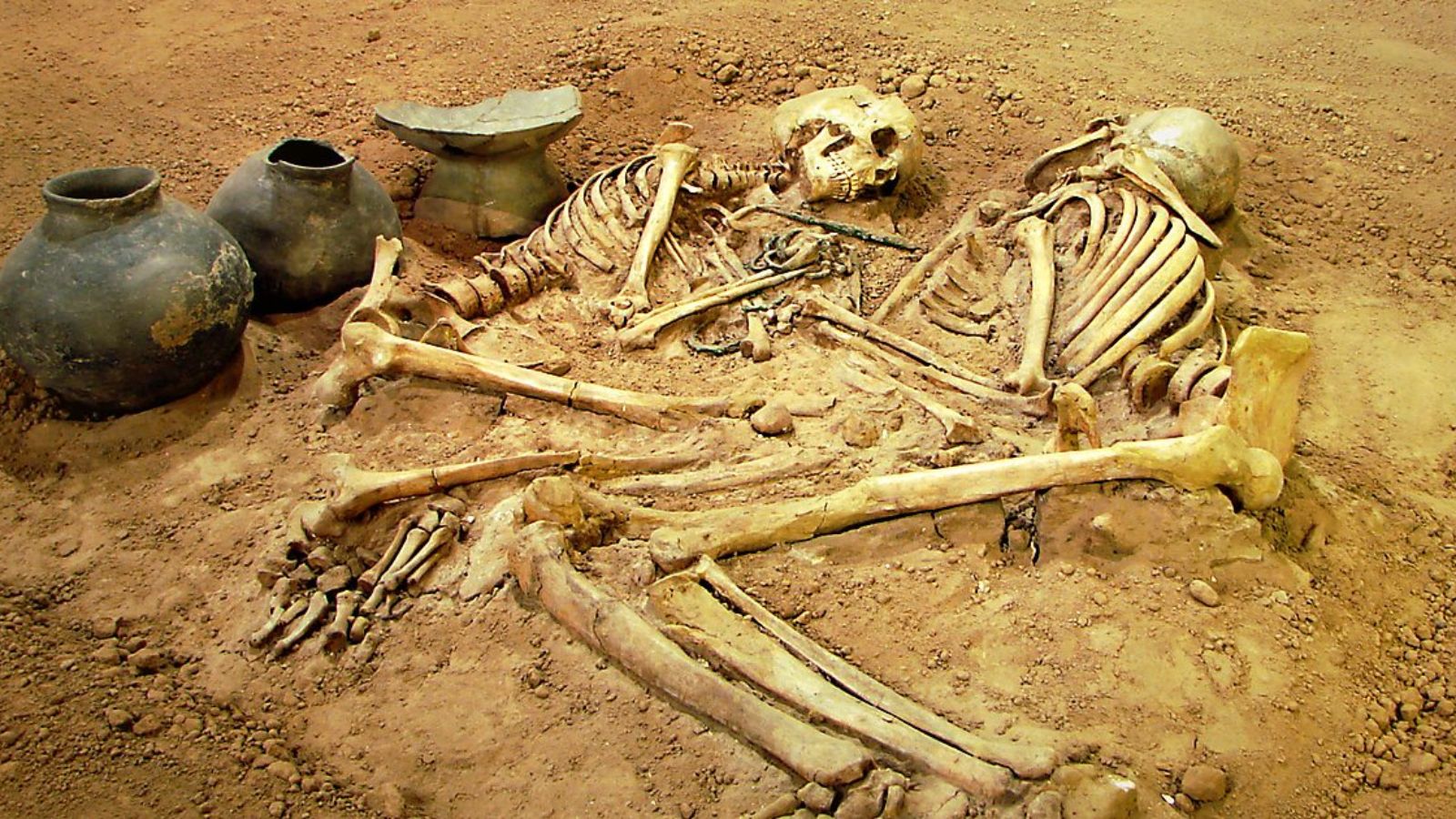
Code 83: Tabriz - Azerbaijan Museum
Azerbaijan Museum is the major archaeological and historical museum in Tabriz, in the northwest part of Iran. It was established on April 1958. The museum consists of three major halls, a side yard, office rooms and a library. It mostly contains objects discovered from excavations in Iranian Azerbaijan, also some artworks and sculptures of artists. Its library contains more than 2500 books, both handwritten and printed, about history, archaeology, art and Iranian culture. Apart from National Museum of Iran in Tehran, Azerbaijan Museum has the largest collection belonging to different periods of Iran’s history.

Code 84: Ahvaz -Chogha Zanbil
Chogha Zanbil is an ancient Elamite complex in the Khuzestan province of Iran. It is one of the few existing ziggurats outside Mesopotamia. It lies approximately 30 km southeast of Susa and 80 km north of Ahvaz.
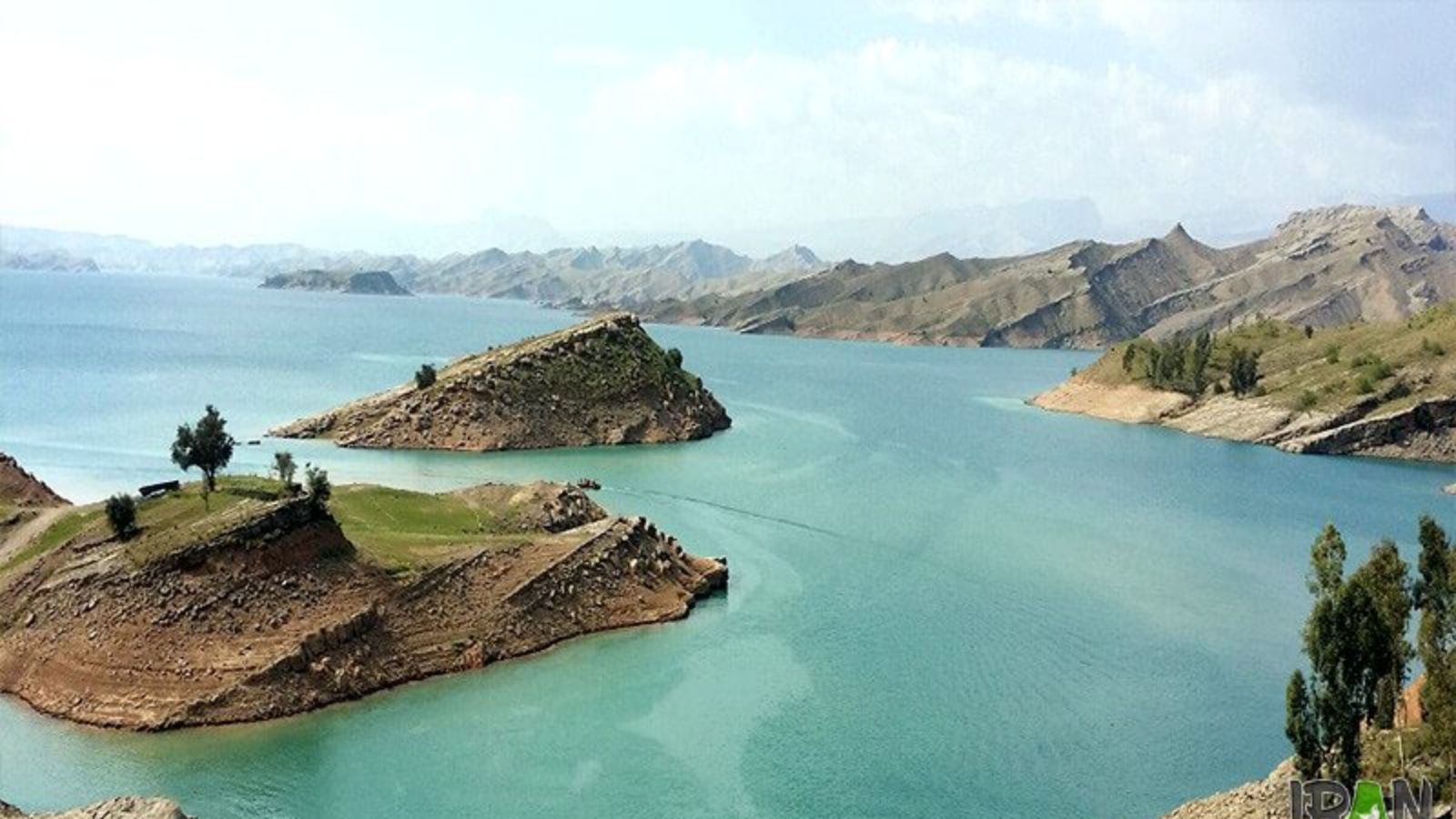
Code 85: Ahvaz - Dez Dam
The Dez Dam, formerly known as Mohammad Reza Shah Pahlavi Dam before 1979 Revolution, is an arch dam on the Dez River in the southwestern province of Khuzestan, Iran. It is about 15 km of dezful city. It was built between 1959 and 1963 under the rule of Mohammad Reza Pahlavi, the last Shah of Iran, with contacting an Italian consortium and is owned by the Khuzestan Water & Power Authority. The dam is 203 metres high, making it one of the highest in the country, and has a reservoir capacity of 3,340,000,000 m³. At the time of construction the Dez Dam was Iran’s biggest development project. The primary purpose of the dam is hydroelectric power production and irrigation. It has an associated 520 MW power station and its reservoir helps irrigate up to 80,500 ha of farmland. US$42 million of the cost to construct the dam came from the World Bank.
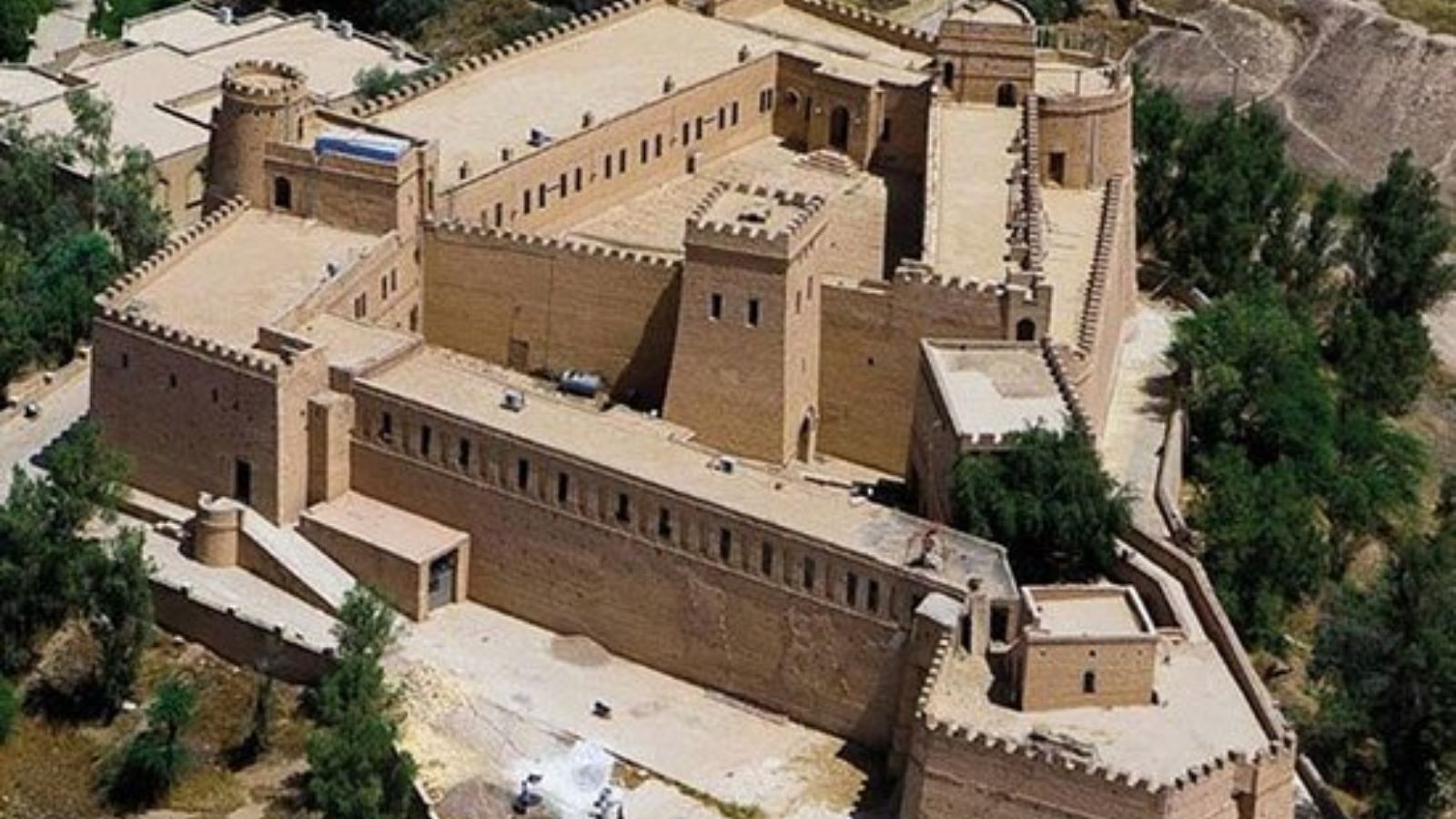
Code 86: Ahvaz - Shush Castle
Shush Castle is located in the ruins of the ancient city of Susa in the Khuzestan Province of Iran. It was constructed by French archaeologist Jean-Marie Jacques de Morgan in the late 1890s, as a secure base for archaeological exploration and excavation. The Castle is similar to medieval monuments in France. The structure was built by local craftsmen with bricks taken from two other archaeological sites, the Achaemenid Darius/Dariush castle and the Elamite Choqazanbil ziggurat. It is built atop a hill which may contain other relics of past times. It is an example of the pre-scientific era of archaeology, when explorers mutilated or destroyed sites in the process of examining them. The former French government property was taken over by the Islamic Republic after the Iranian Revolution in 1979. It is now used as a museum. Its best-known holding is a cuneiform tablet inscribed with the Code of Hammurabi, however this is now on display in the Louvre Museum in Paris, France. The castle was heavily damaged by Iraqi bombs during the recent Iran–Iraq War, but has since been completely restored by the Iranian government.
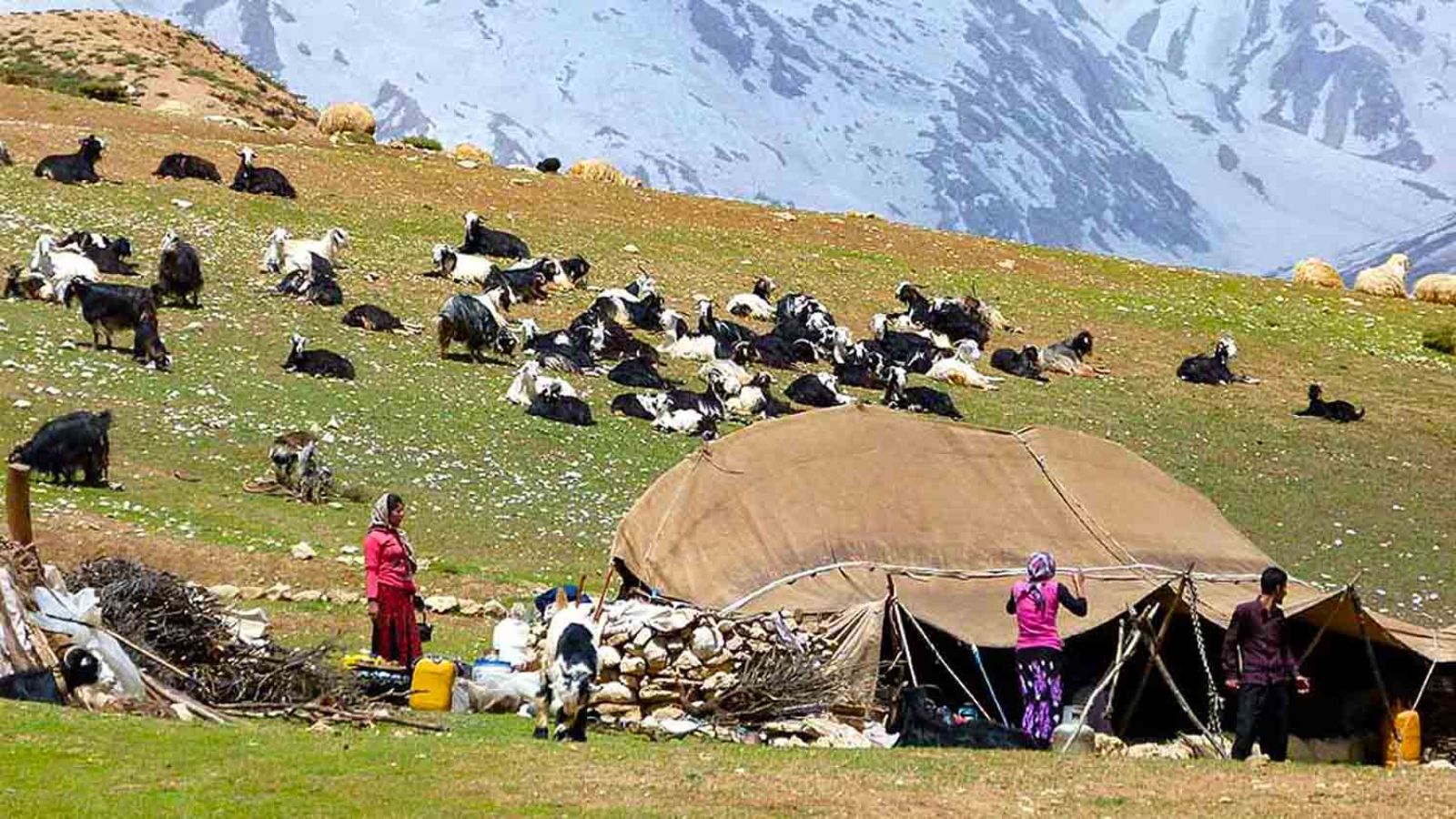
Code 87: Sihiraz/ Ahavaz -Nomands
Nomads (Kooch Neshinan) in Iran are a group of people who travel and move from one place to another along with their tribe, family and all their belongings. Kooch Neshini (Nomadism) is the tribal lifestyle and their economy is based on herding. Shifting from one place to another and moving as a large group are the most important aspects of Nomadic life.Nomads move to Yeylagh (cooler countryside) in summer and back to Gheshlagh (warmer areas) in winter throughout their yearly and shift with the seasons Iran’s Nomadic tour is an opportunity to visit this great attraction that is still present in the 21st century.
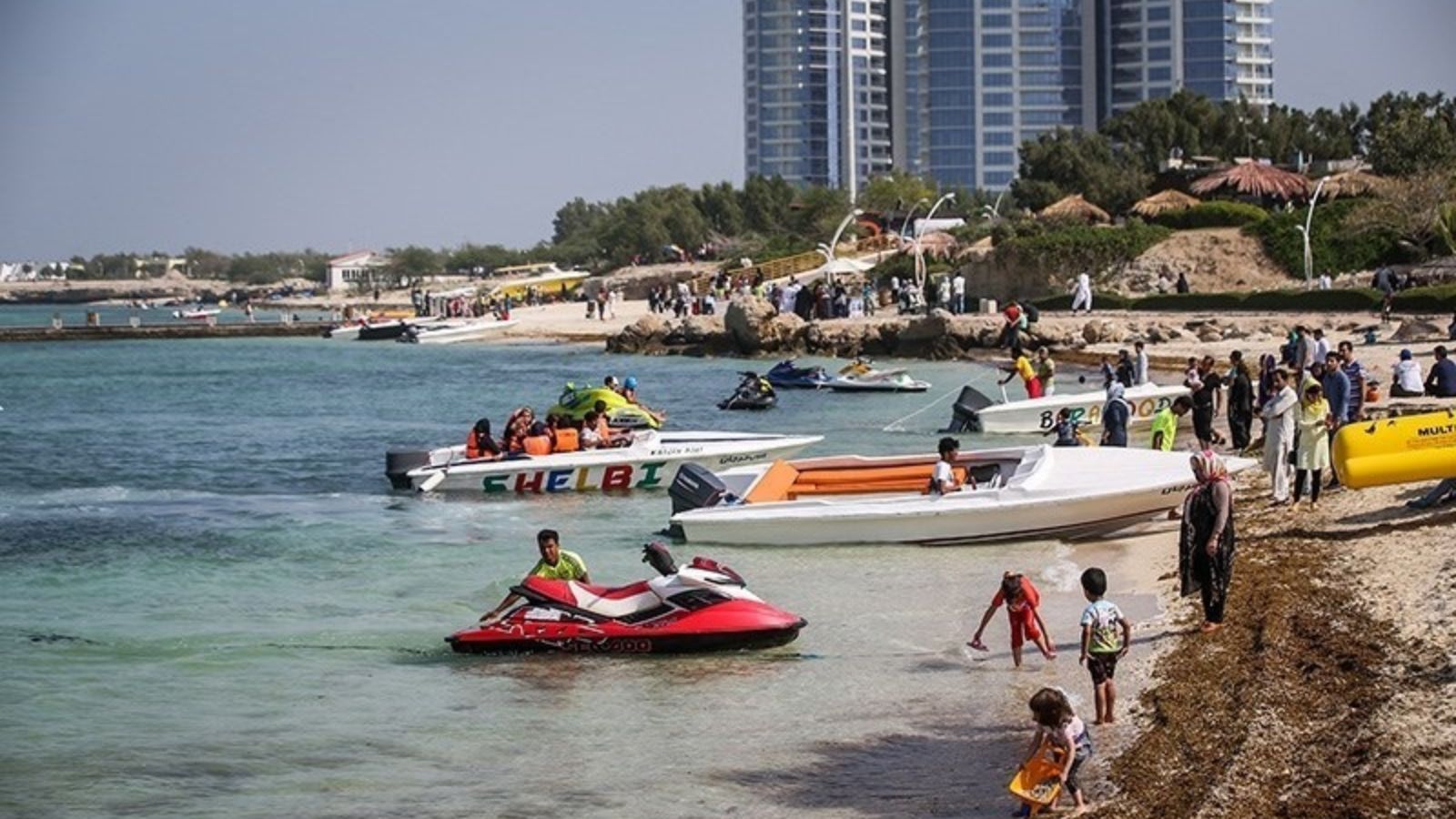
Code 88: Persian Gulf - Kish Island
Kish is a 91.5-square-kilometre resort island in Bandar Lengeh County, Hormozgān Province off the southern coast of Iran in the Persian Gulf. Owing to its free trade zone status, the island is touted as a consumer’s paradise, with numerous malls, shopping centres, tourist attractions, and resort hotels.
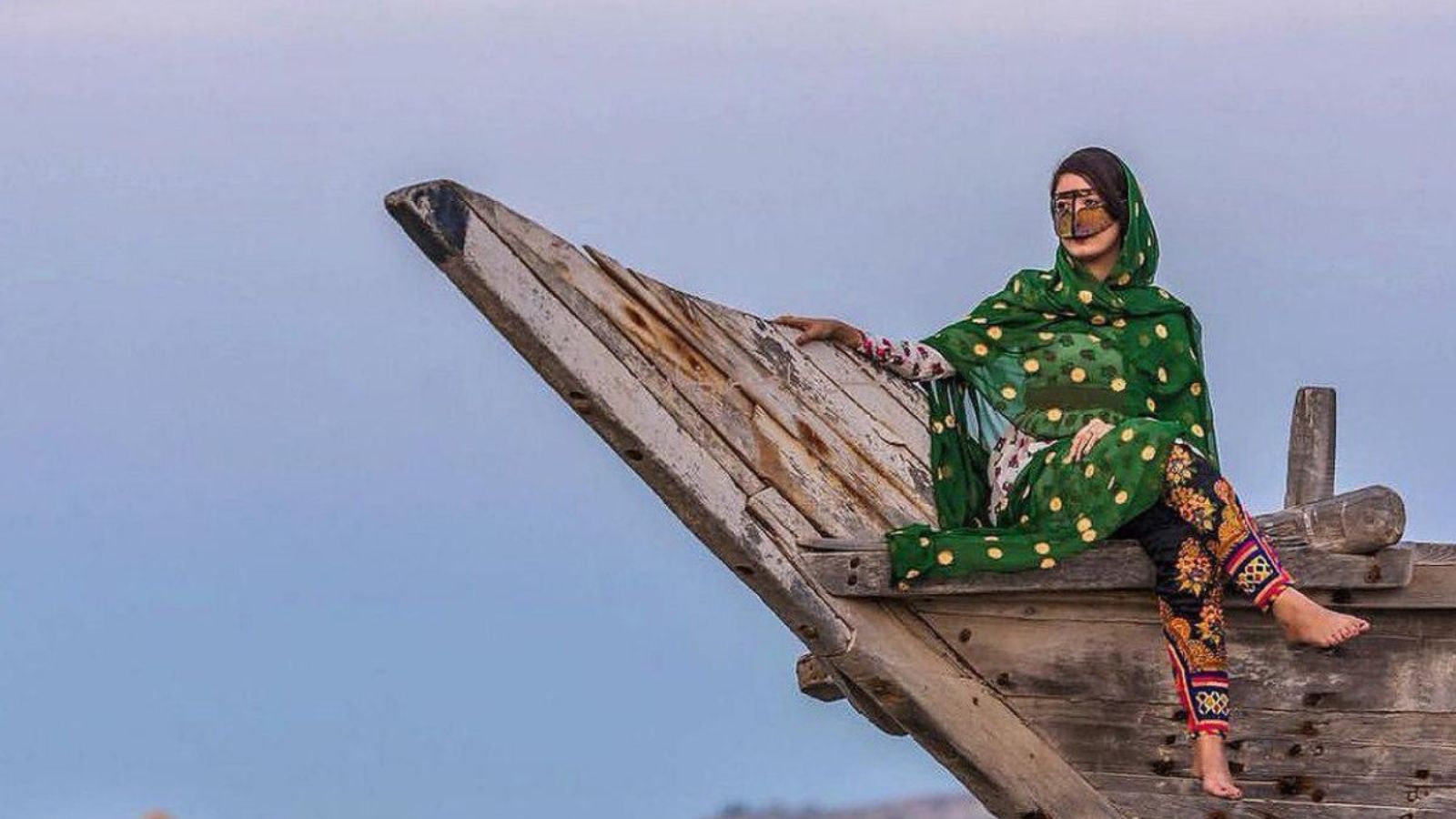
Code 89: Persian Gulf - Qeshm Island
Qeshm, formerly also known as Kishm, is an Iranian island in the Strait of Hormuz, separated from the mainland by the Clarence Strait/Khuran in the Persian Gulf. It is the largest island in Iran. This island is also touted as a consumer’s paradise, with numerous malls, shopping centres, tourist attractions, and resort hotels.
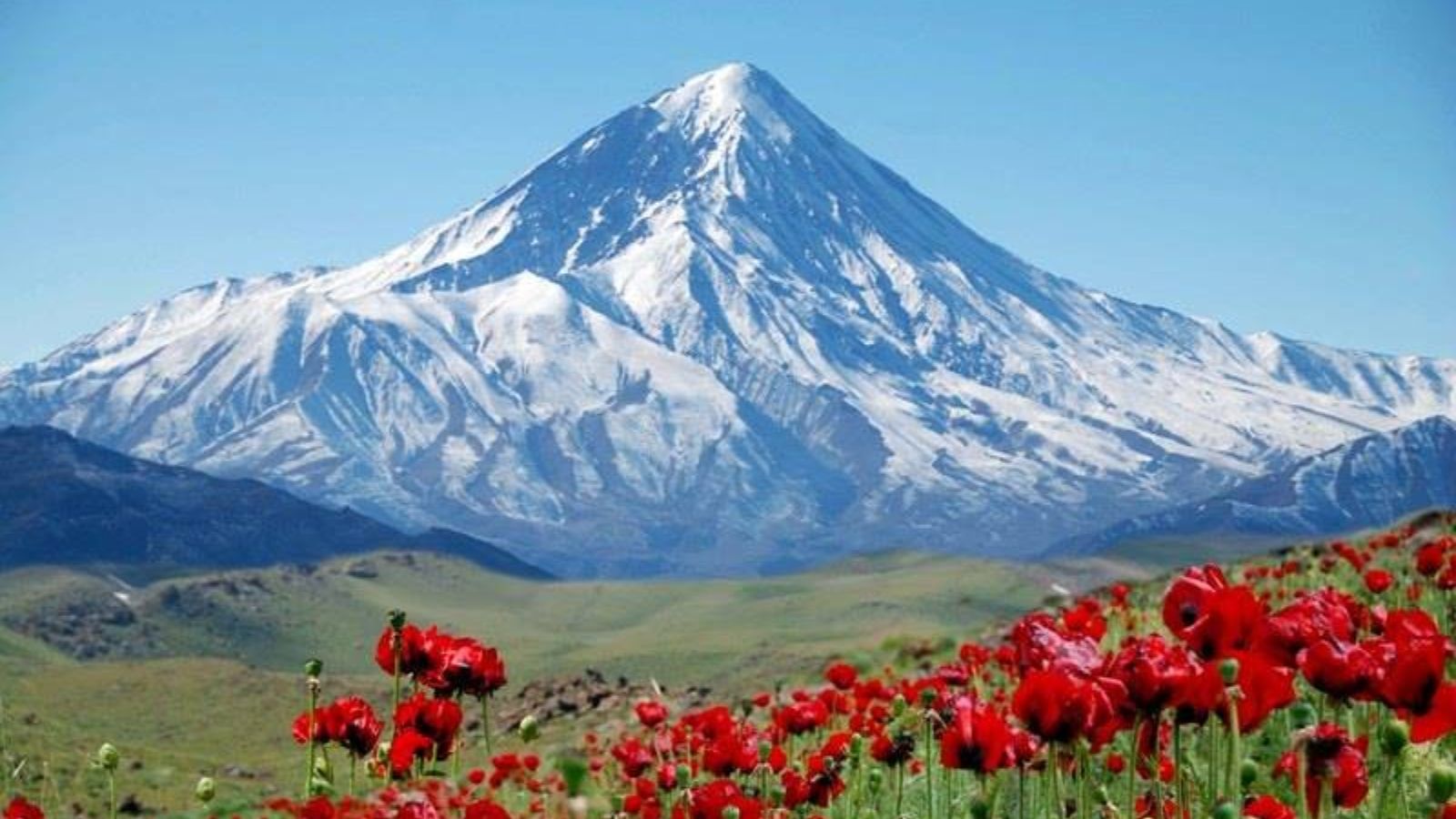
Code 90: North of Iran - Damavand Mount
Mount Damavand, a potentially active volcano, is a stratovolcano which is the highest peak in Iran and the highest volcano in Asia. Damāvand has a special place in Persian mythology and folklore. It is in the middle of the Alborz range, adjacent to Varārū, Sesang, Gol-e Zard, and Mīānrūd. It is near the southern coast of the Caspian Sea, in Amol County, Mazandaran Province, 66 kilometres northeast of the city of Tehran. Mount Damāvand is the 12th most prominent peak in the world, and the second most prominent in Asia after Mount Everest. It is part of the Volcanic Seven Summits mountaineering challenge.
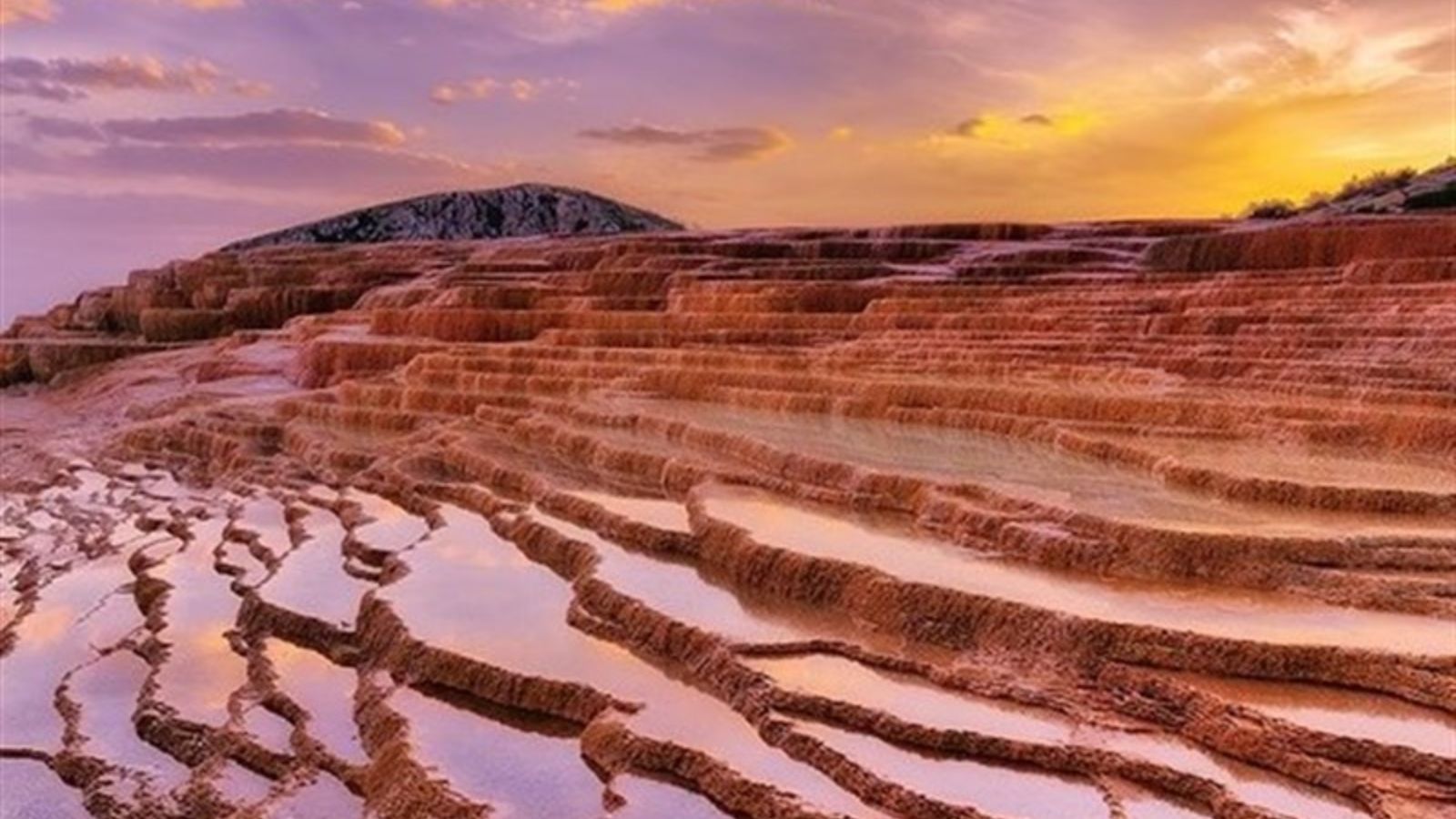
Code 91: North of Iran - Badab-e Surt
Badab Soort is a natural site in Mazandaran Province in northern Iran, 95 kilometres south of the city of Sari, and 7 kilometres west of Orost village. It comprises a range of stepped travertine terrace formations that have been created over thousands of years as flowing water from two mineral hot springs cooled and deposited carbonate minerals on the mountainside
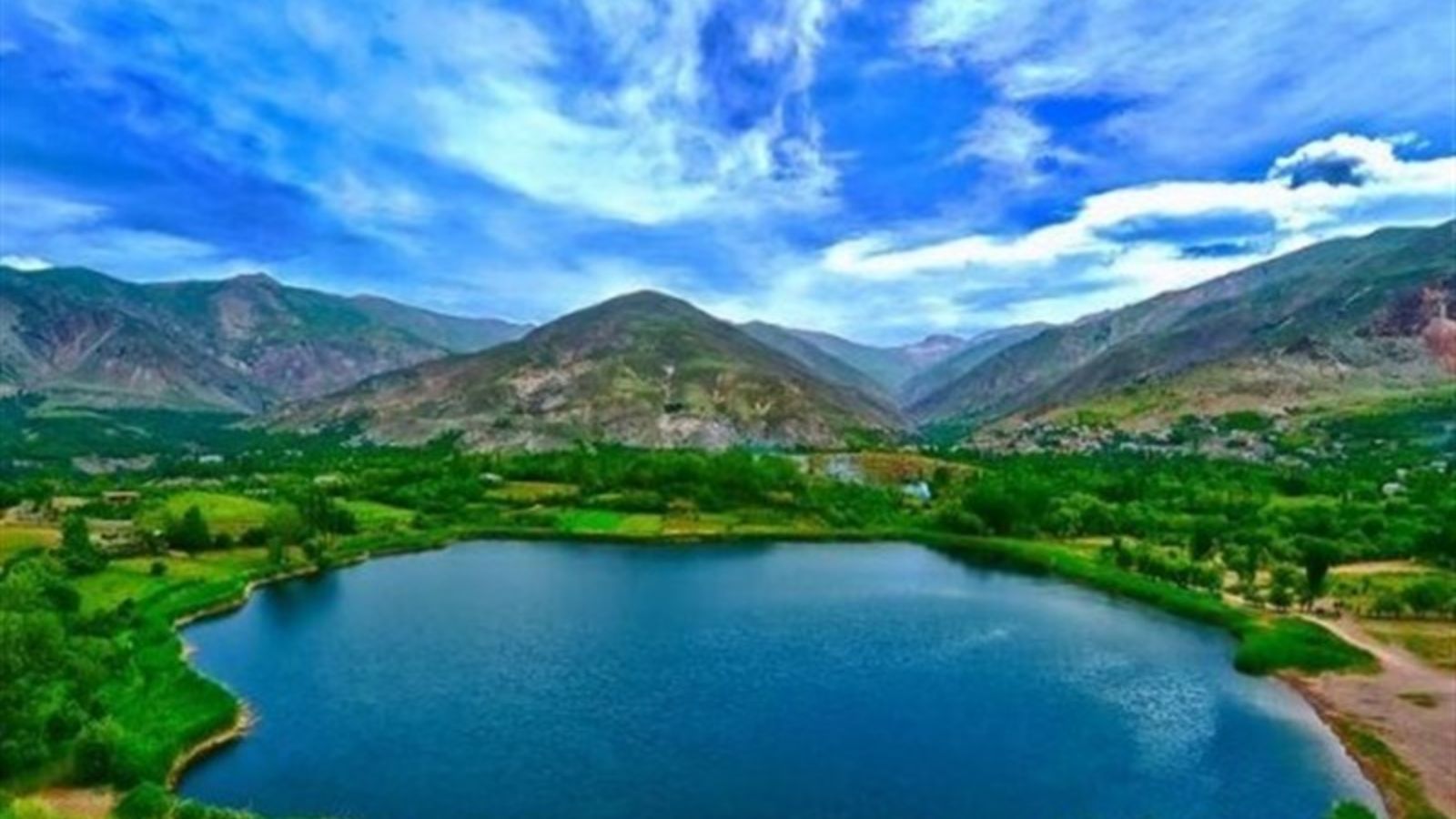
Code 92: North of Iran - Valasht Lake
Lake, ecotourism, and nature
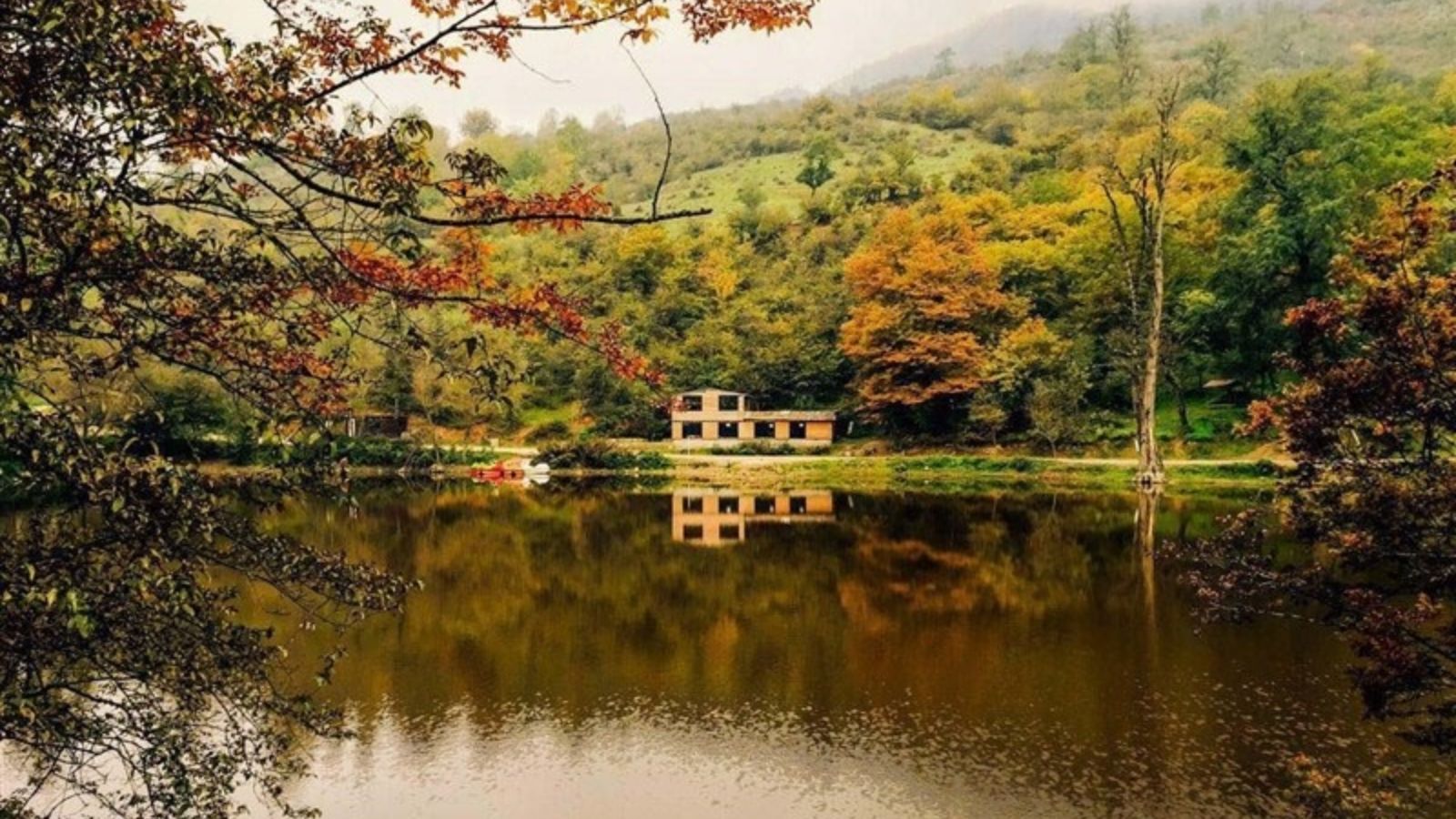
Code 93: North of Iran - Shur Mast Lake
Lake, ecotourism, and forest
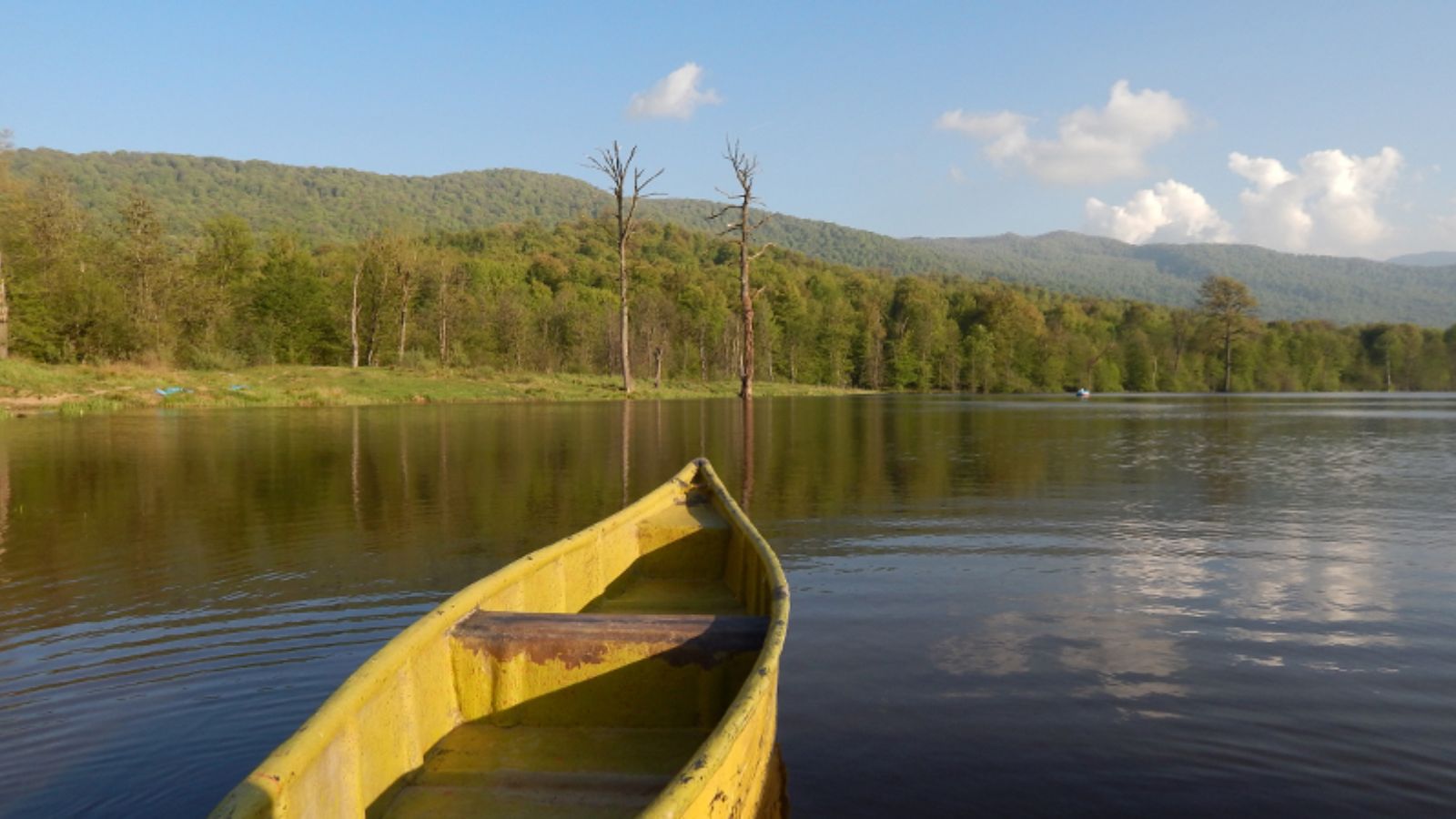
Code 94: North of Iran - Alendan lake
Alendan lake is a lake with 17 hectare span located in Sari County. This lake belongs to Quaternary era and has recorded in The national index of Iran in 2015. This lake is also called Pelle Azni because of the nearby village, Azni. The best way for going the lake is through Azni village, which has a flat way to the lake. The lake has a 70 km distance from Sari and located in Sari-Semnan road. The lake is 1200 m higher than sea level. This lake is the main source of water for paddy fields of near villages like Azni, Mazarostaq, Konta, Didu and Zalam. However no river water comes to the lake, rain full fills the lake. In recent years, fish farming has developed in the lake. Plenty of various trees, including carpinus betulus, oak, ulmus glabra and tilia, surrounded the lake
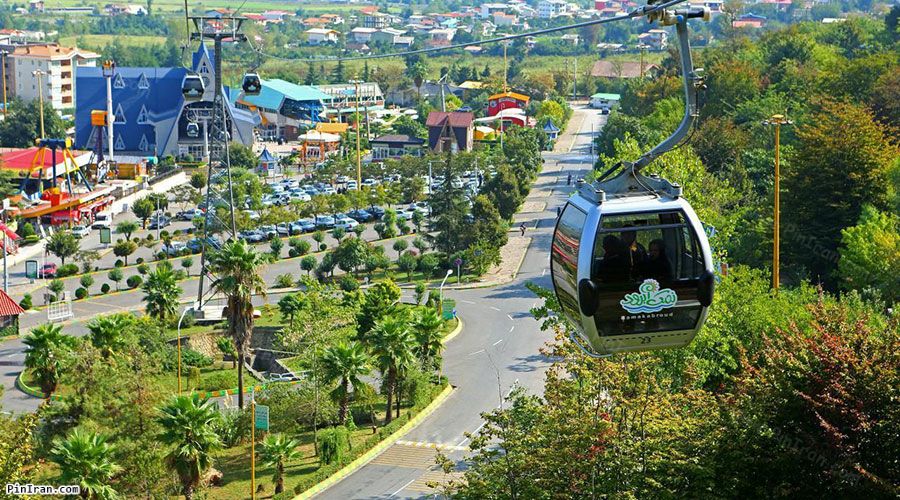
Code 95: North of Iran - Namakabrud Telecabin
Tourist attraction
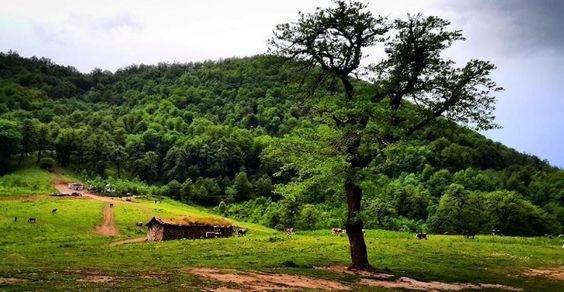
Code 96: North of Iran - Dalkhani Jungle
Forest and nature
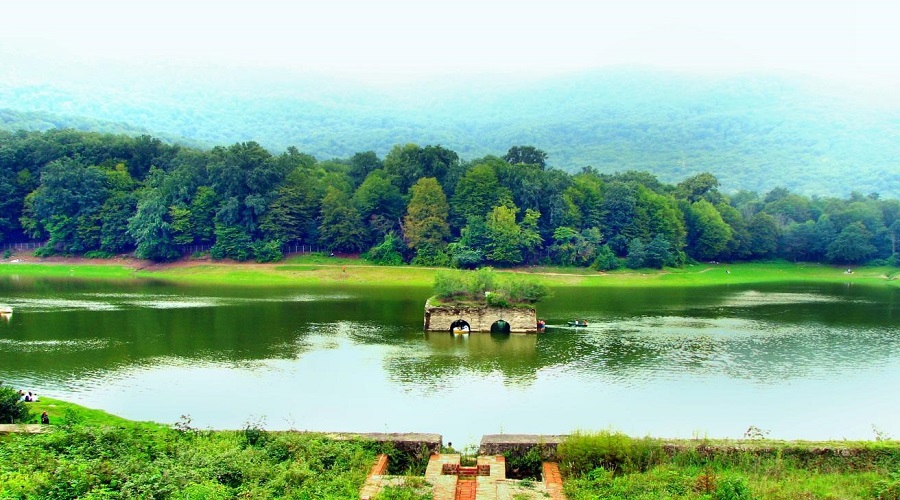
Code 97: North of Iran - Abbas Abad Historical and Tourism Complex
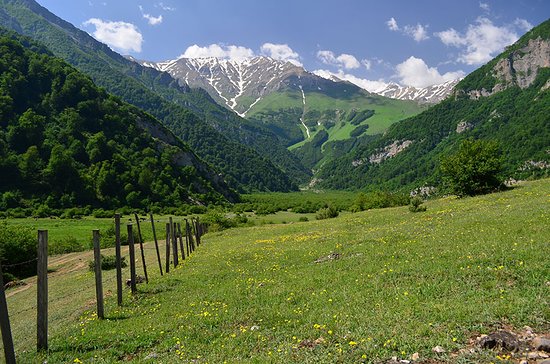
Code 98: North of Iran - Daryasar Plain
Forest and nature
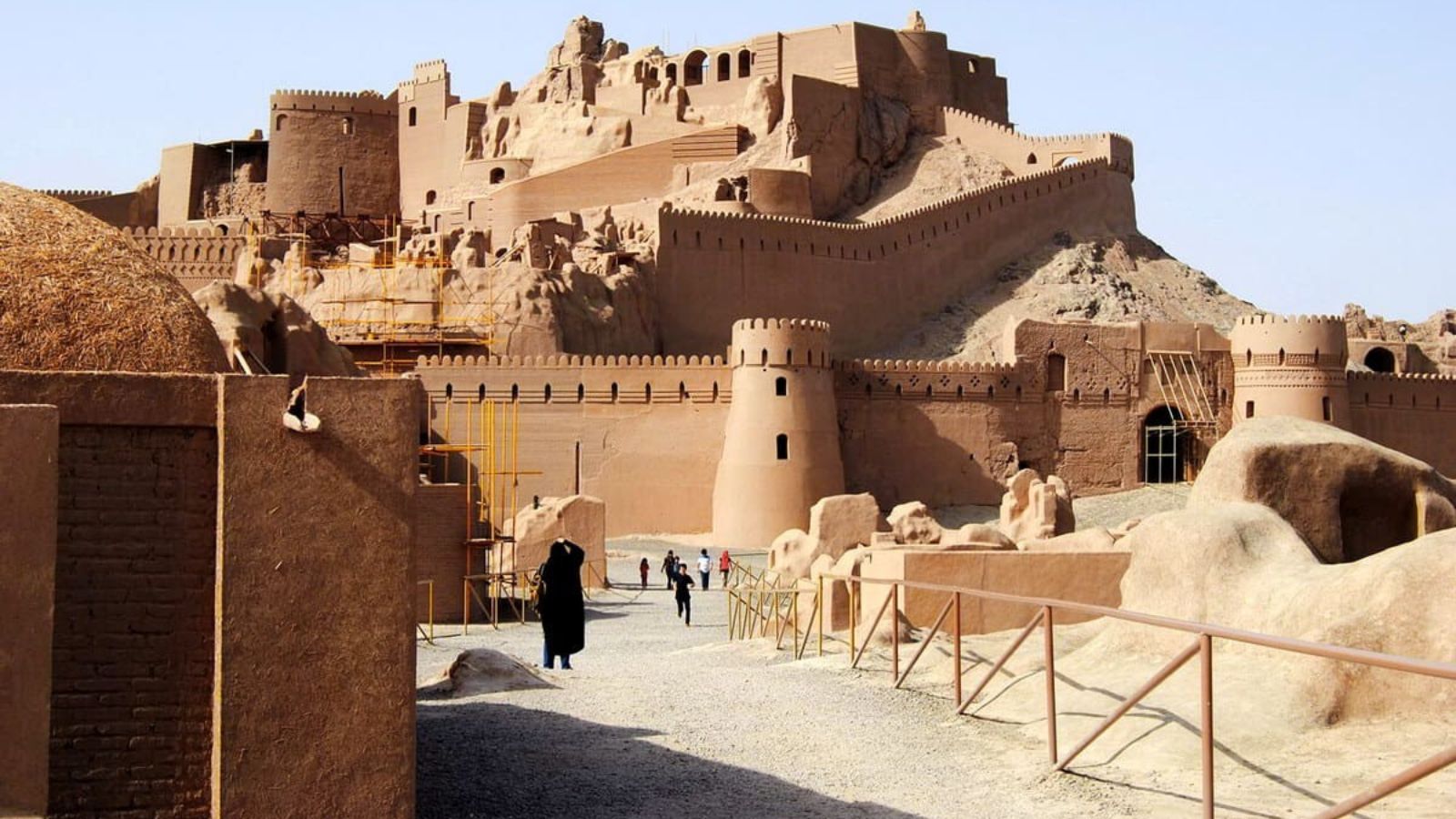
Code 99: Kerman/Bam - Arg-e Bam
The Arg-e Bam is the largest adobe building in the world, located in Bam, a city in Kerman Province of southeastern Iran. It is listed by UNESCO as part of the World Heritage Site “Bam and its Cultural Landscape”. The origin of this enormous citadel on the Silk Road can be traced back to the Achaemenid Empire and even beyond. The heyday of the citadel was from the seventh to eleventh centuries, when it was at the crossroads of important trade routes and known for the production of silk and cotton garments. The entire building was a large fortress containing the citadel, but because of the impressive look of the citadel, which forms the highest point, the entire fortress is named the Bam Citadel. On December 26, 2003, the Citadel was almost completely destroyed by an earthquake, along with much of the rest of Bam and its environs. A few days after the earthquake, the President of Iran, Mohammad Khatami, announced that the Citadel would be rebuilt.
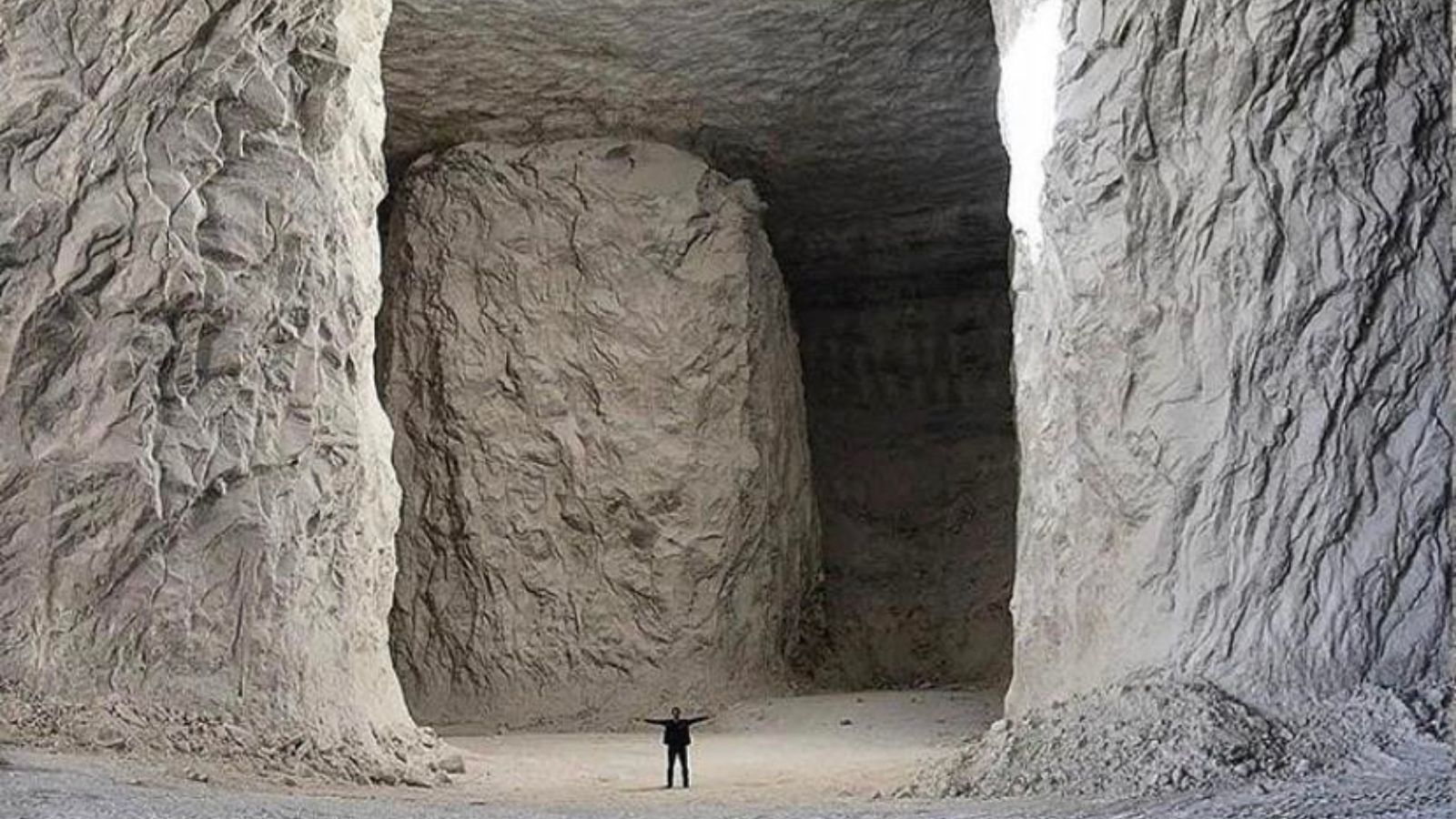
Code 100: North of Iran - Salt Mines Of Garmsar
Salt mines of Garmsar are basically caves made out of salt. When you enter these caves, the color tints on salts are the first thing that will catch your eyes
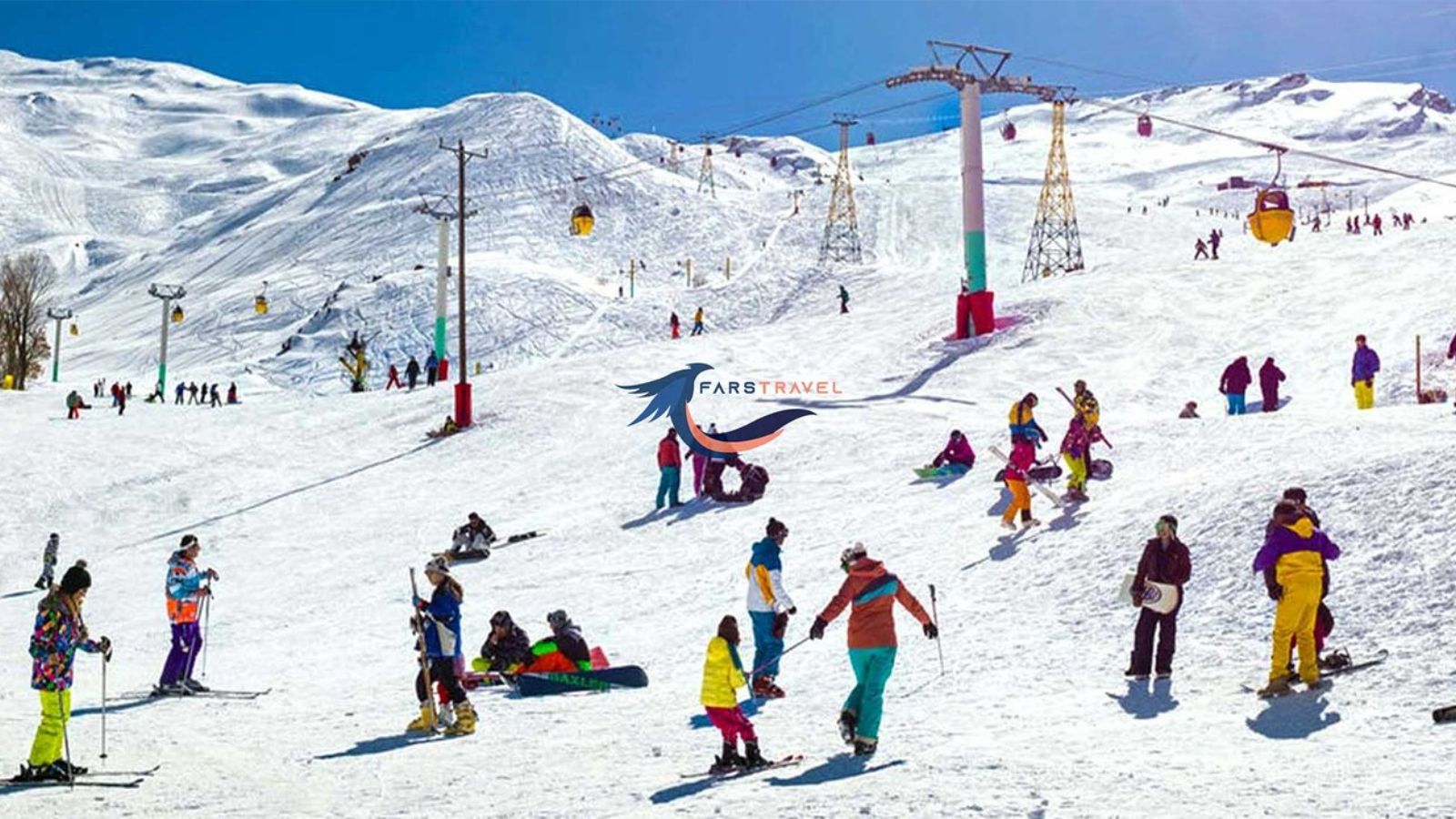
Code 101: 70km North from Tehran - Dizin
Your choosen detinations
Tell us where do you want to visit

